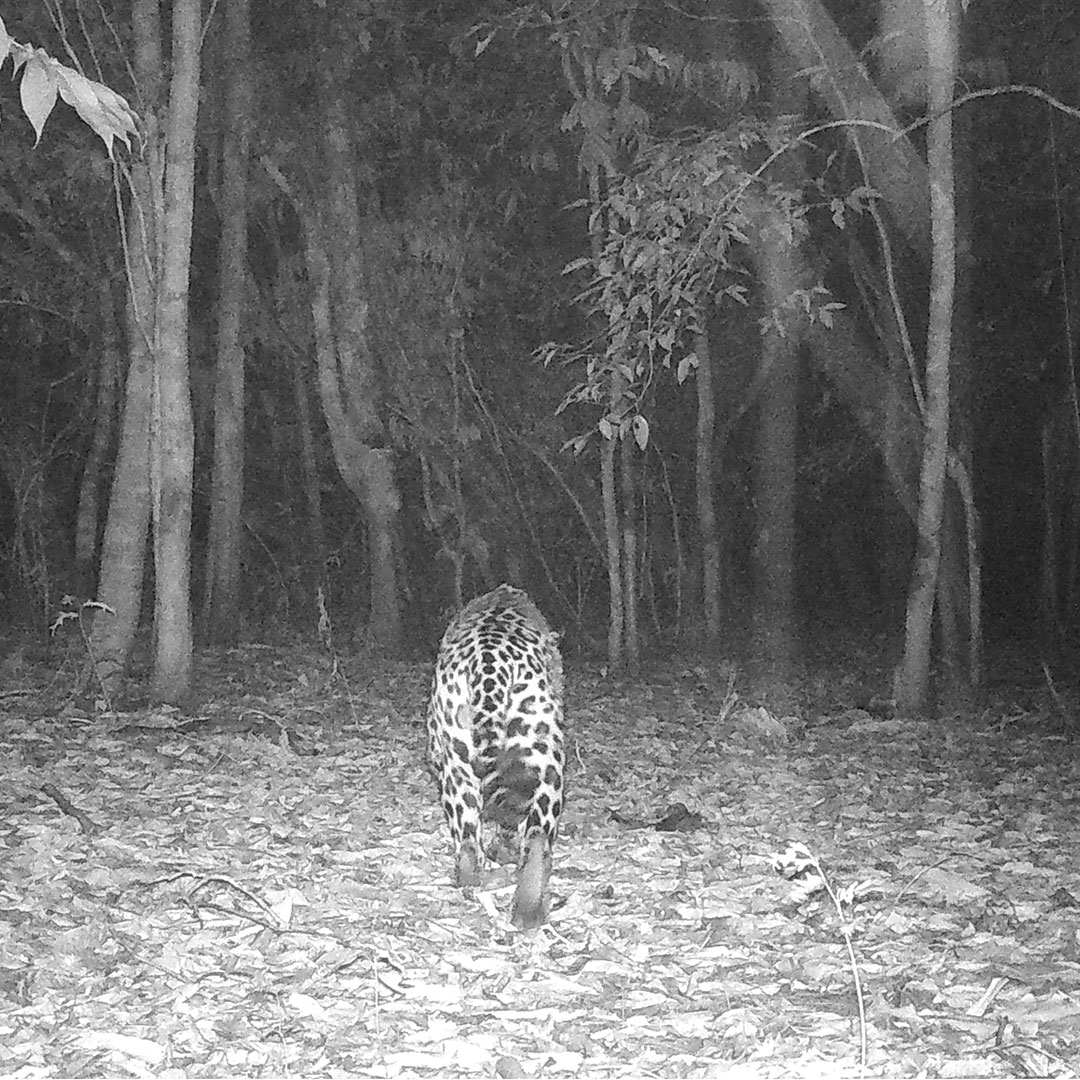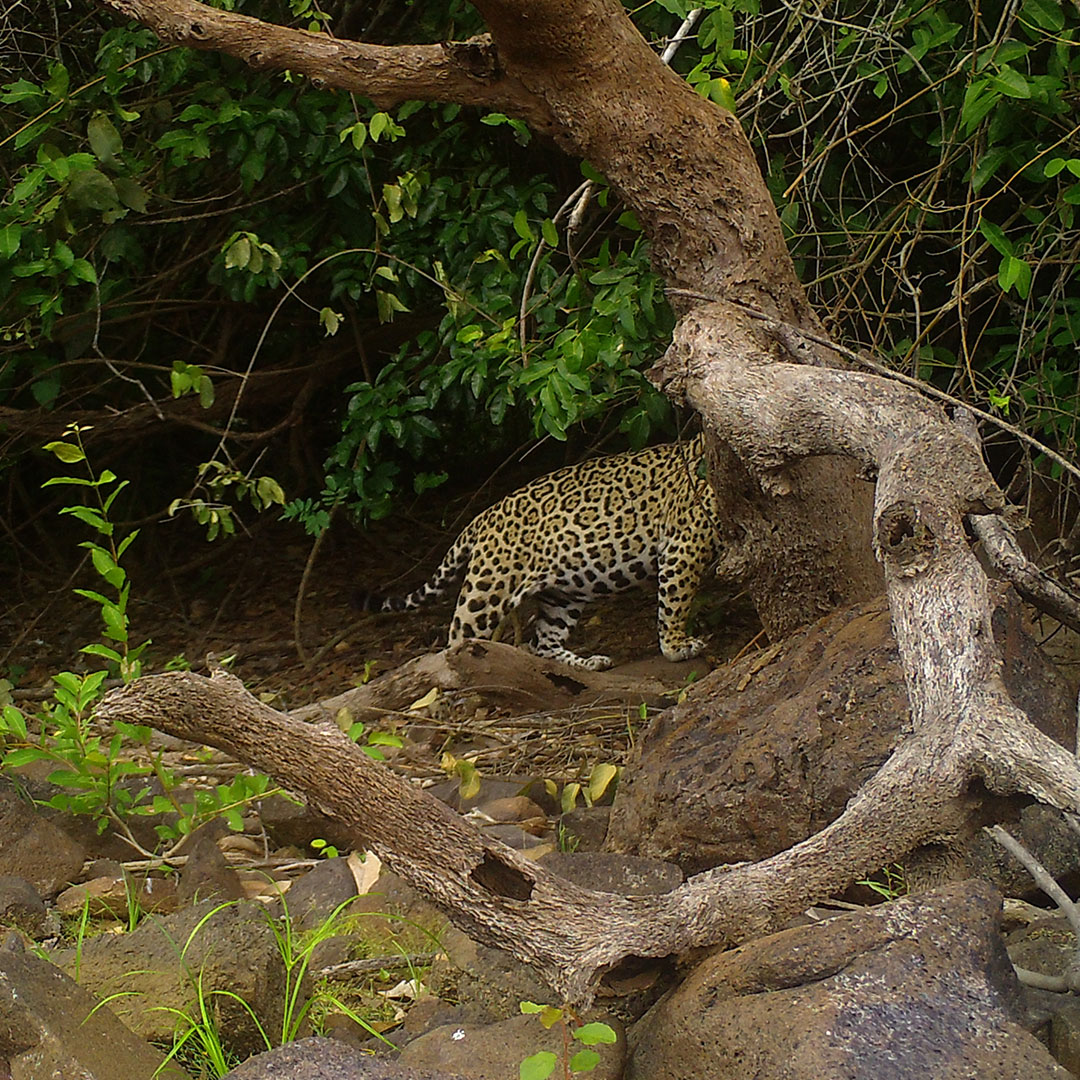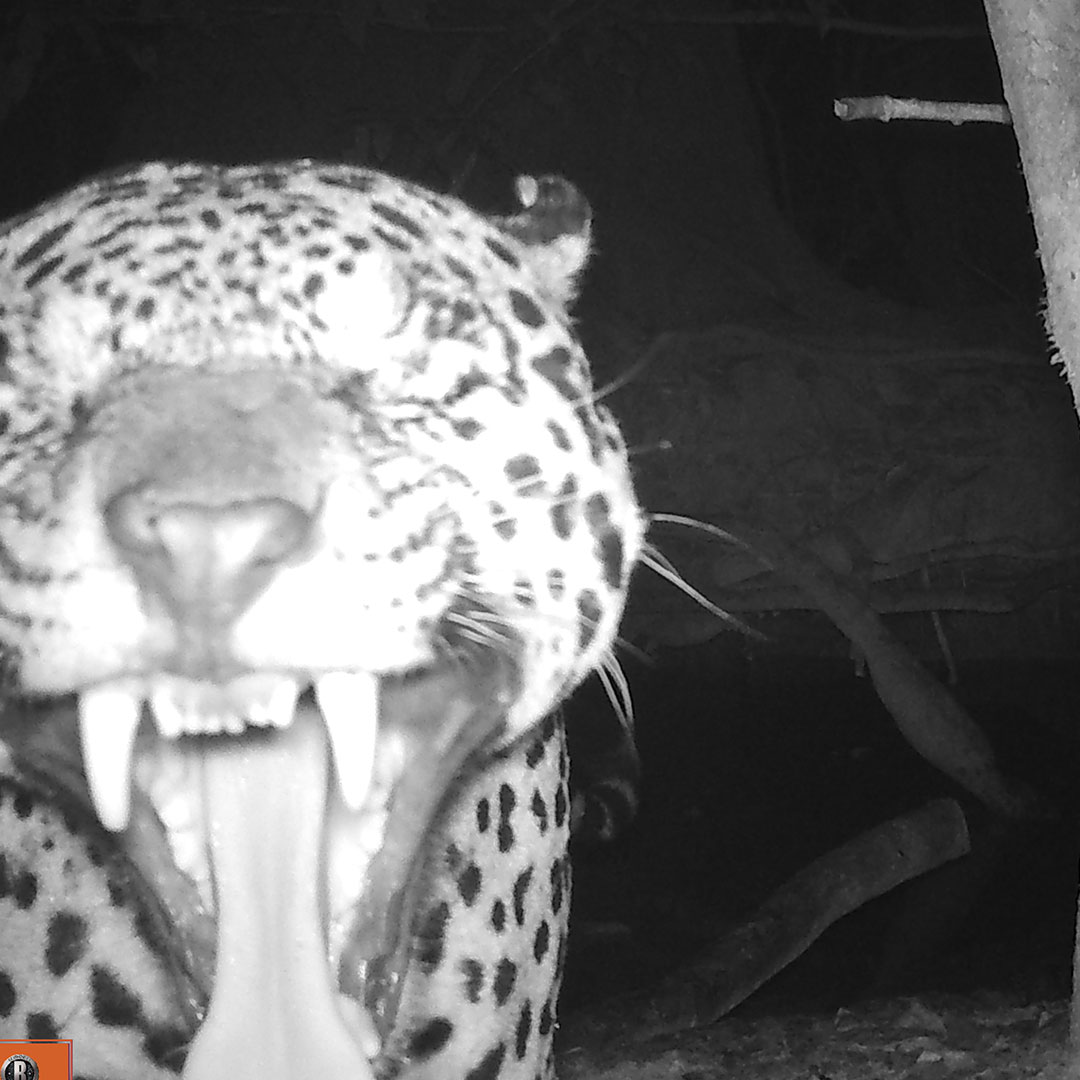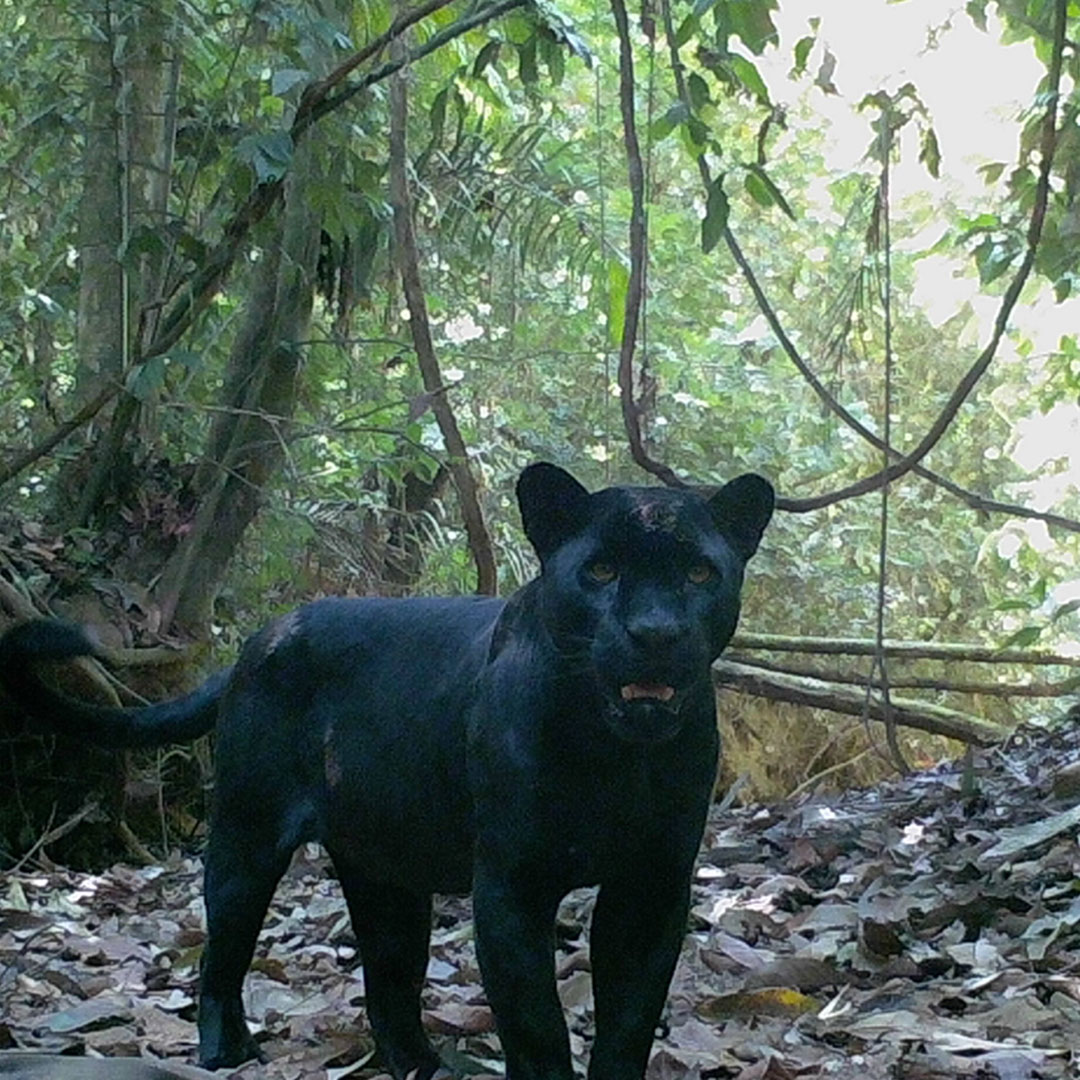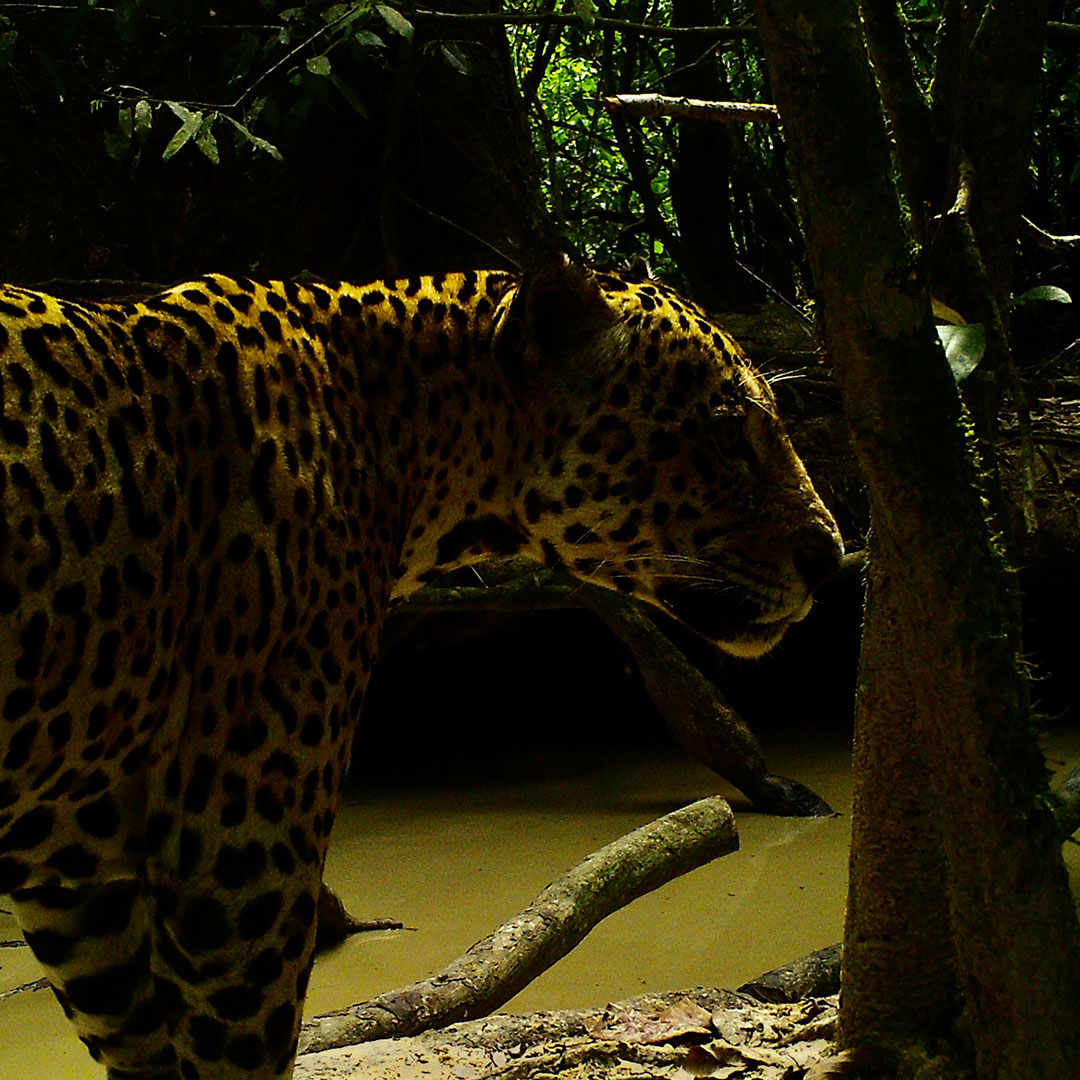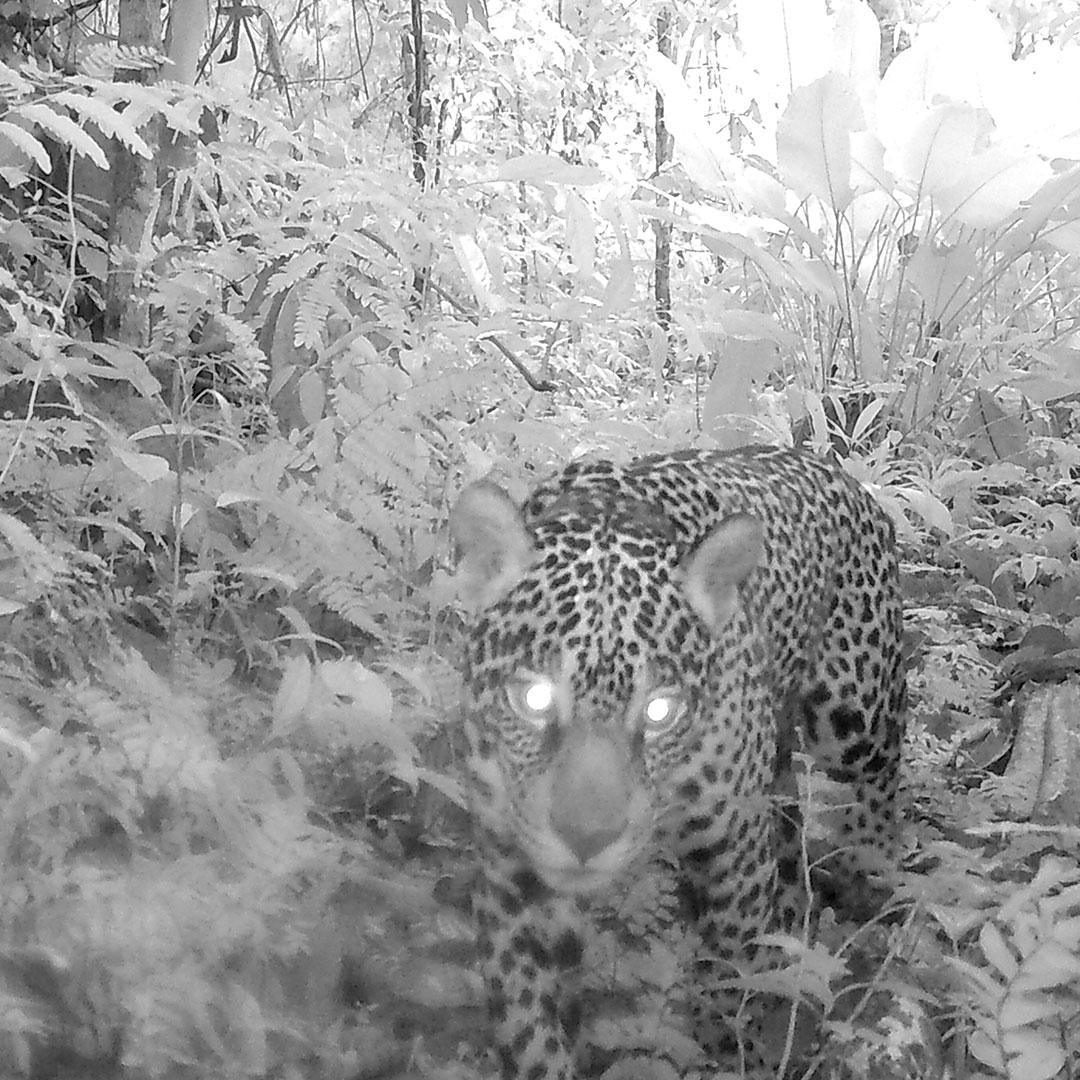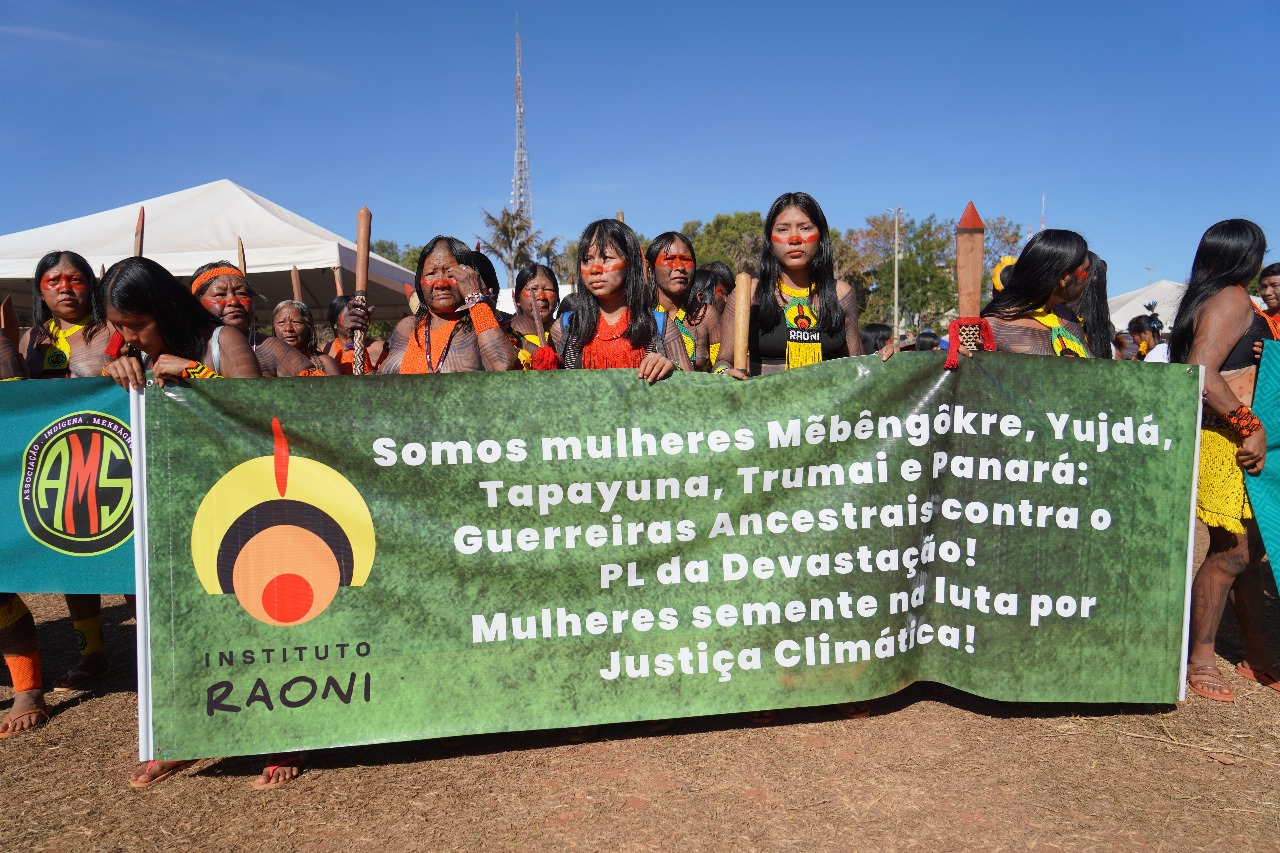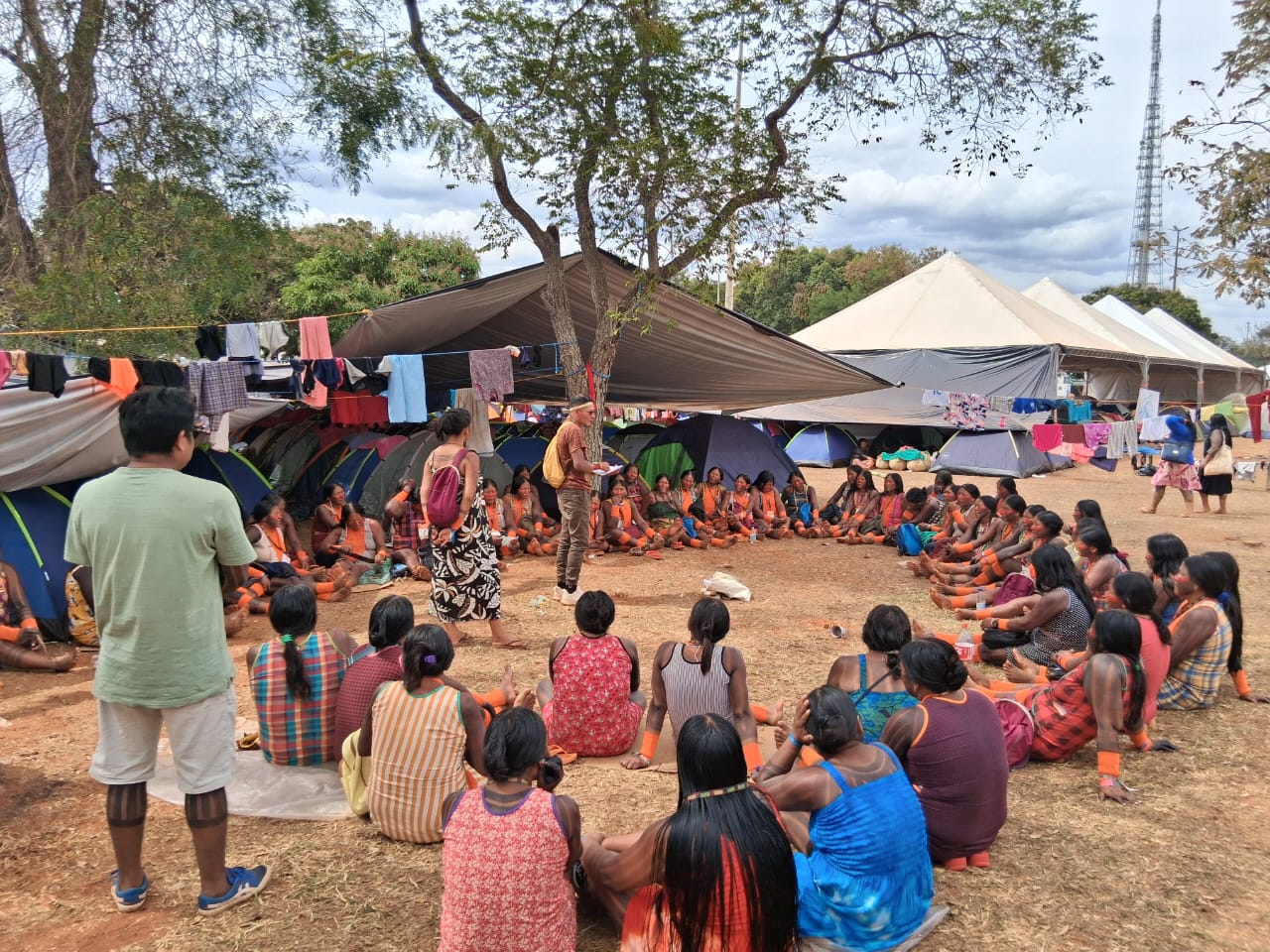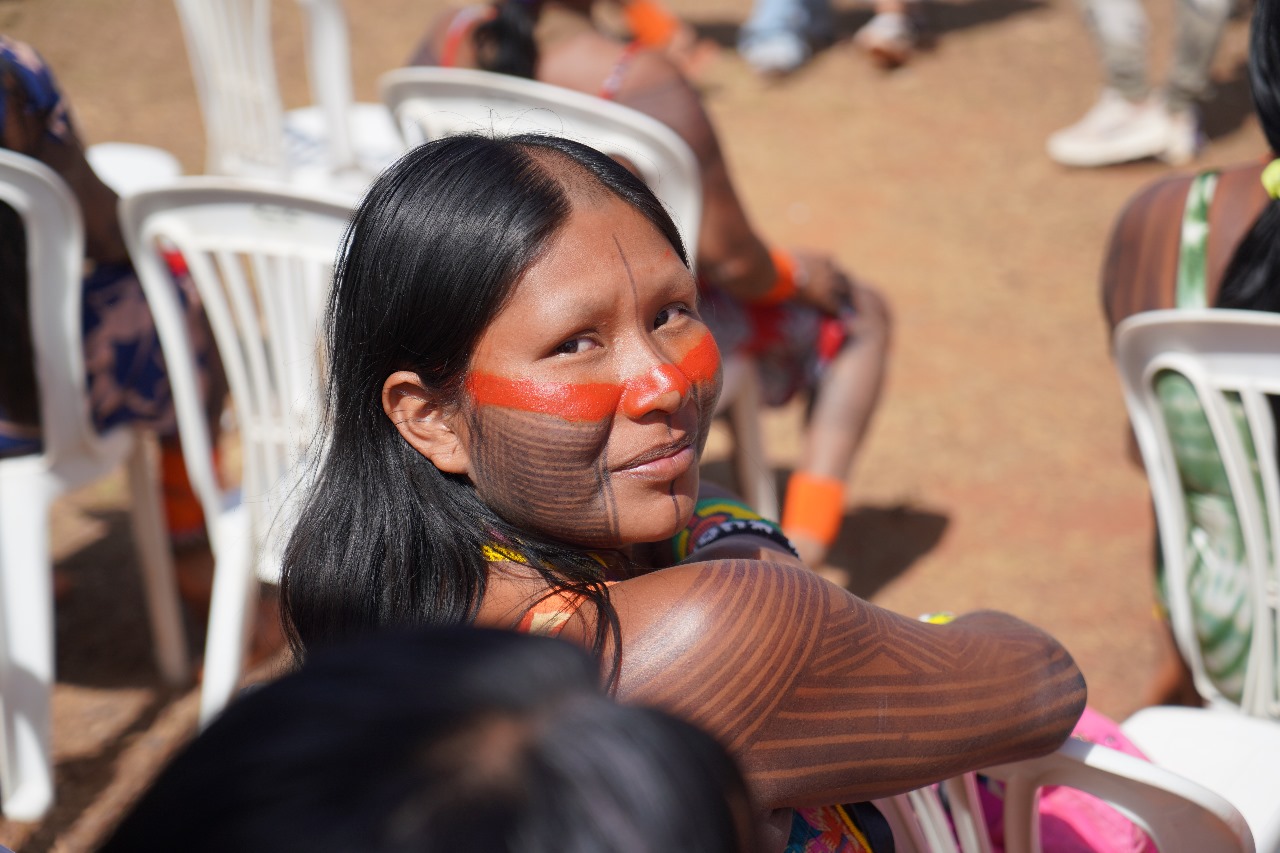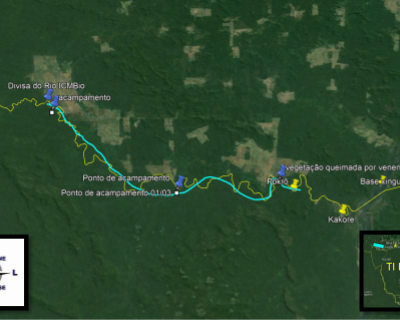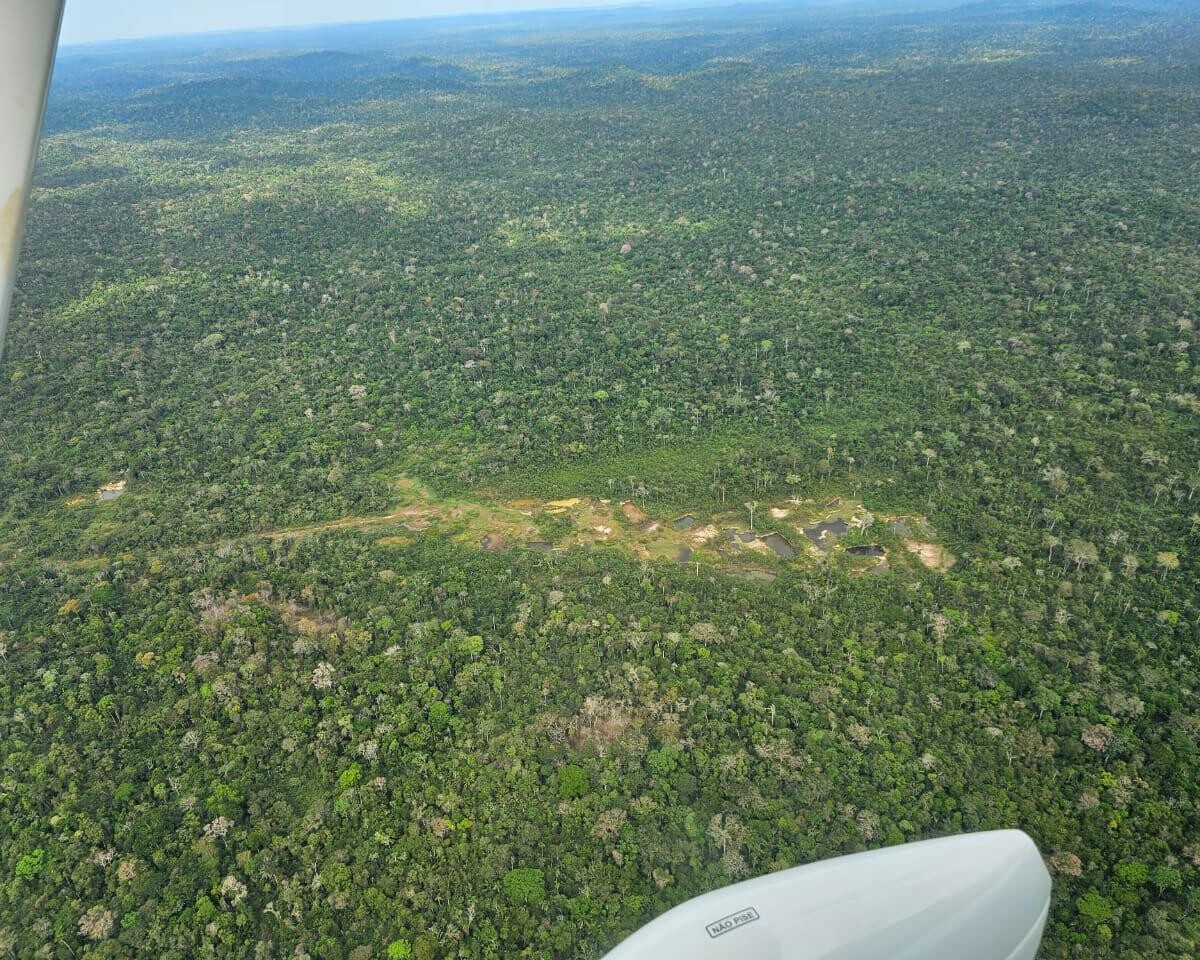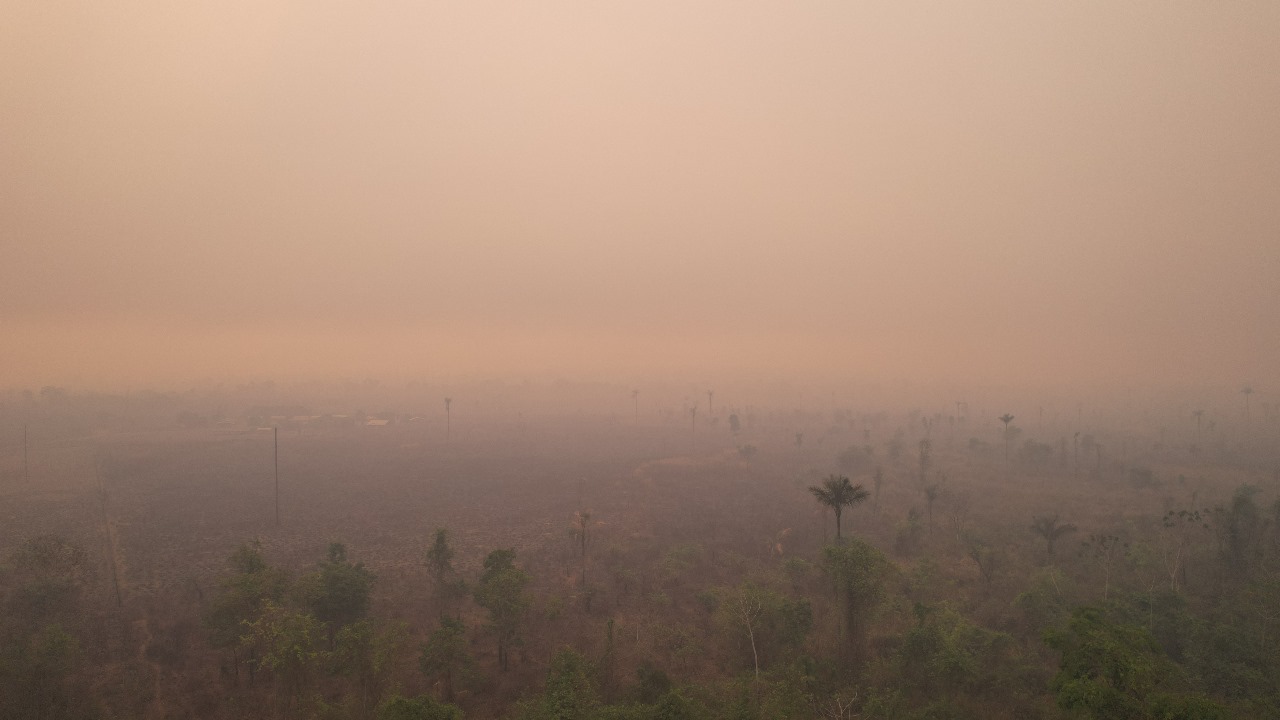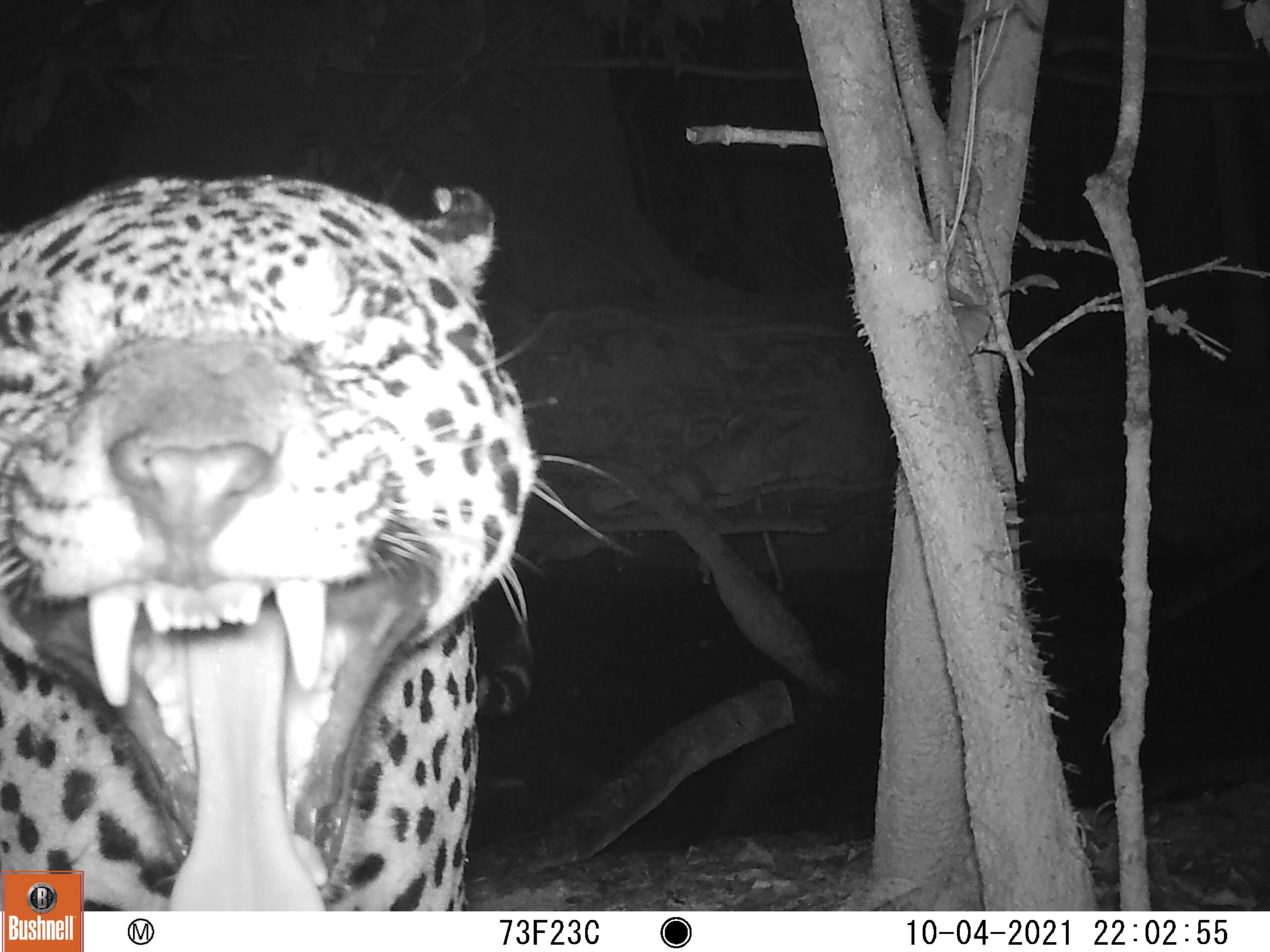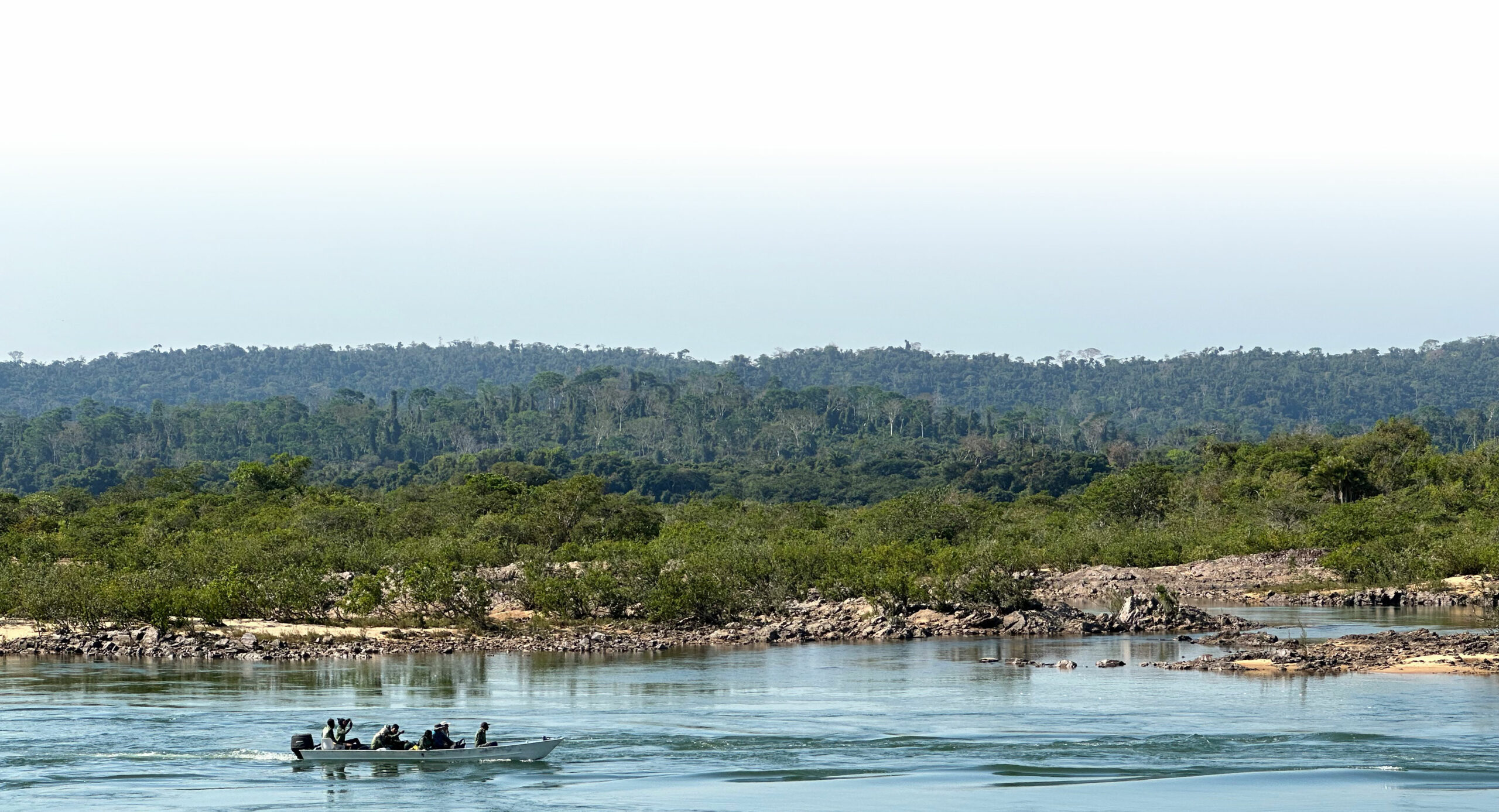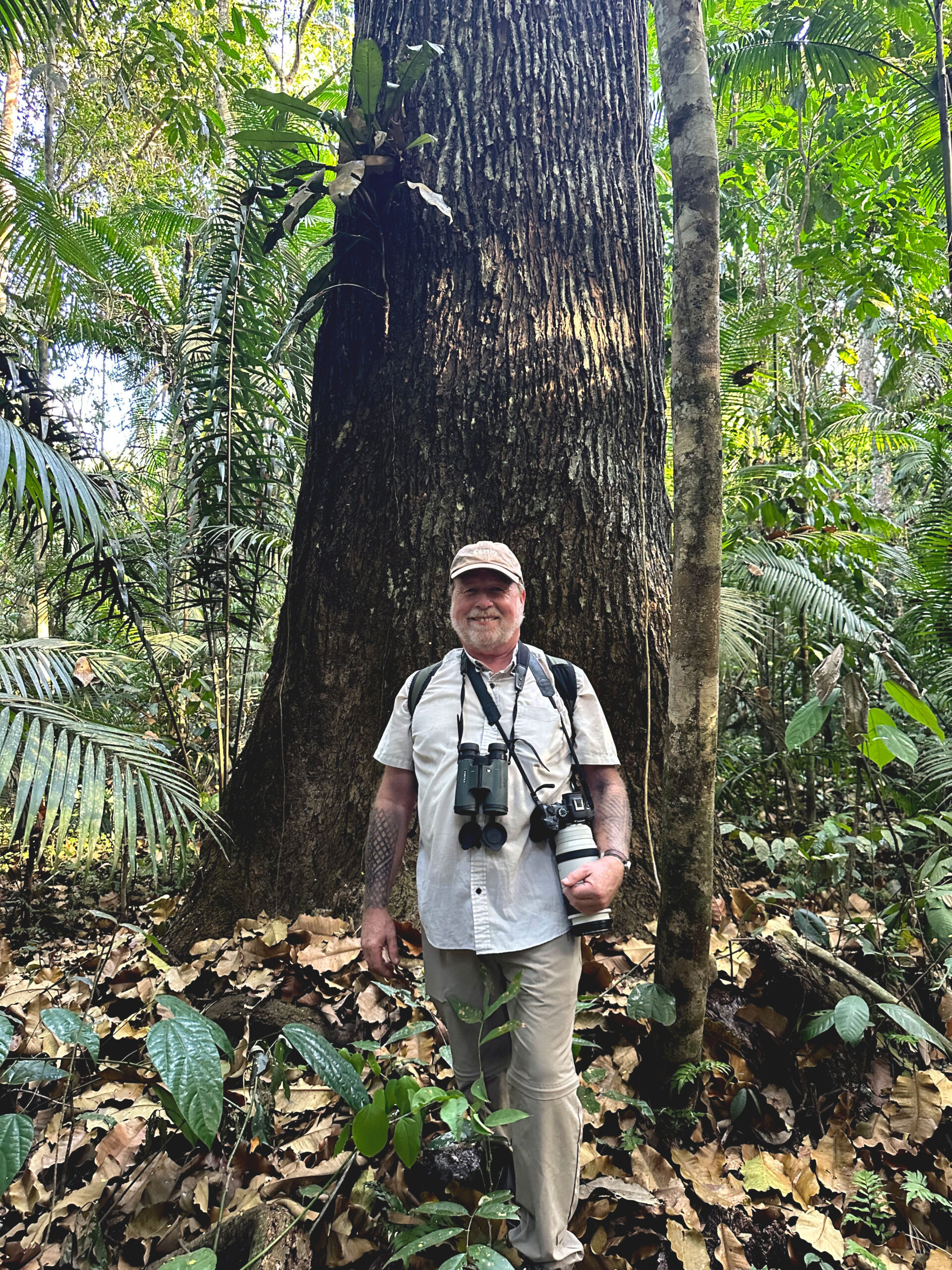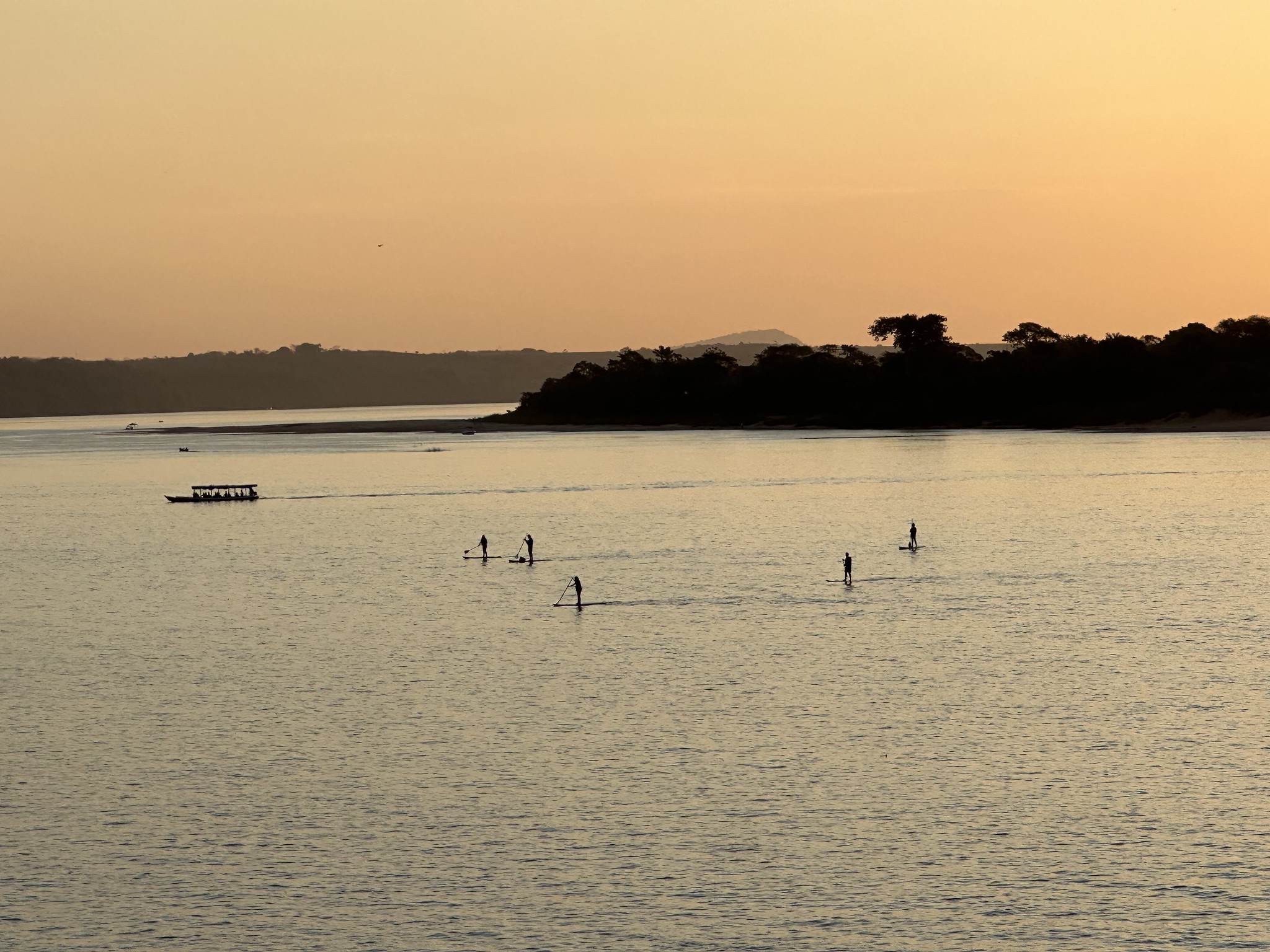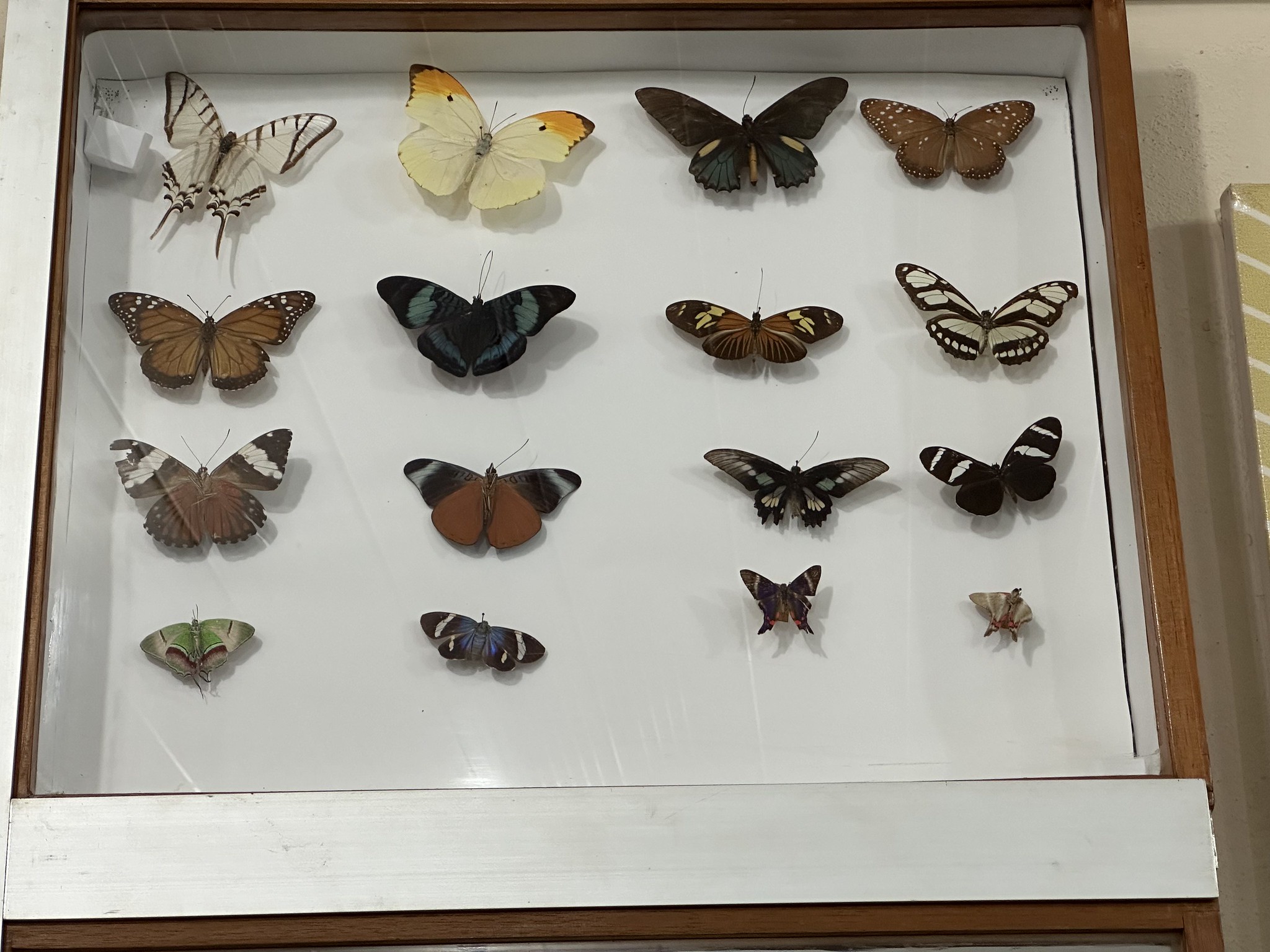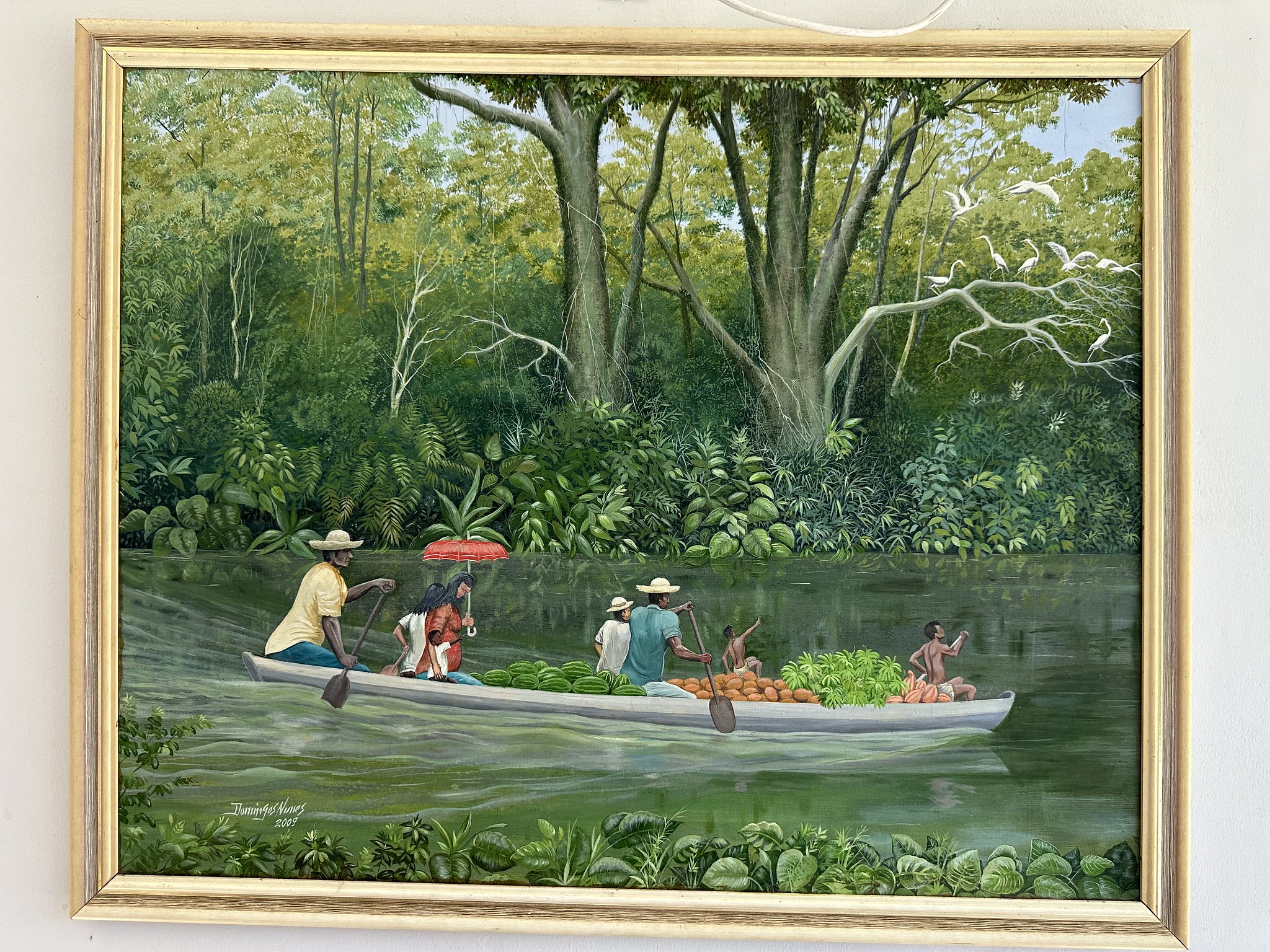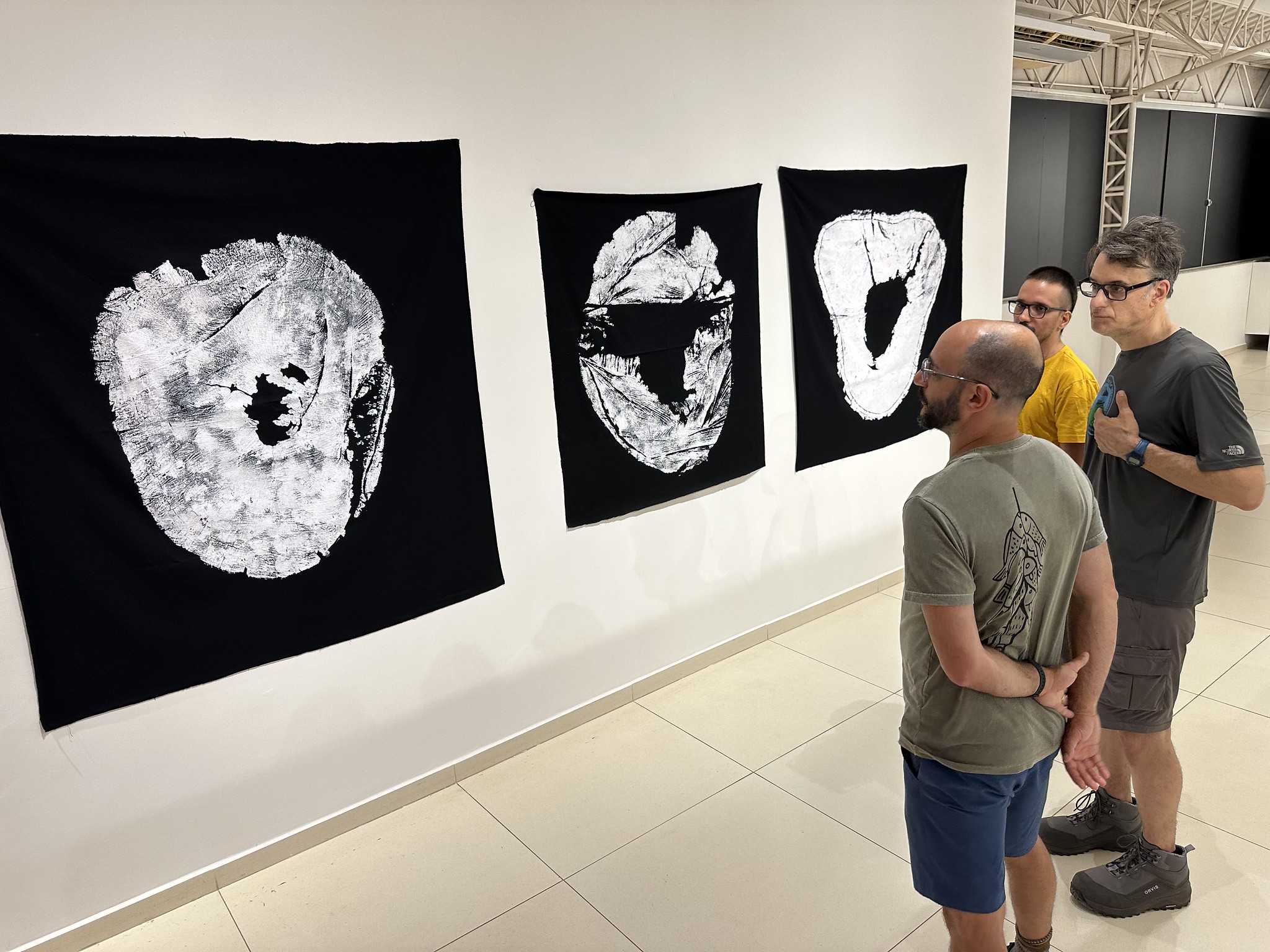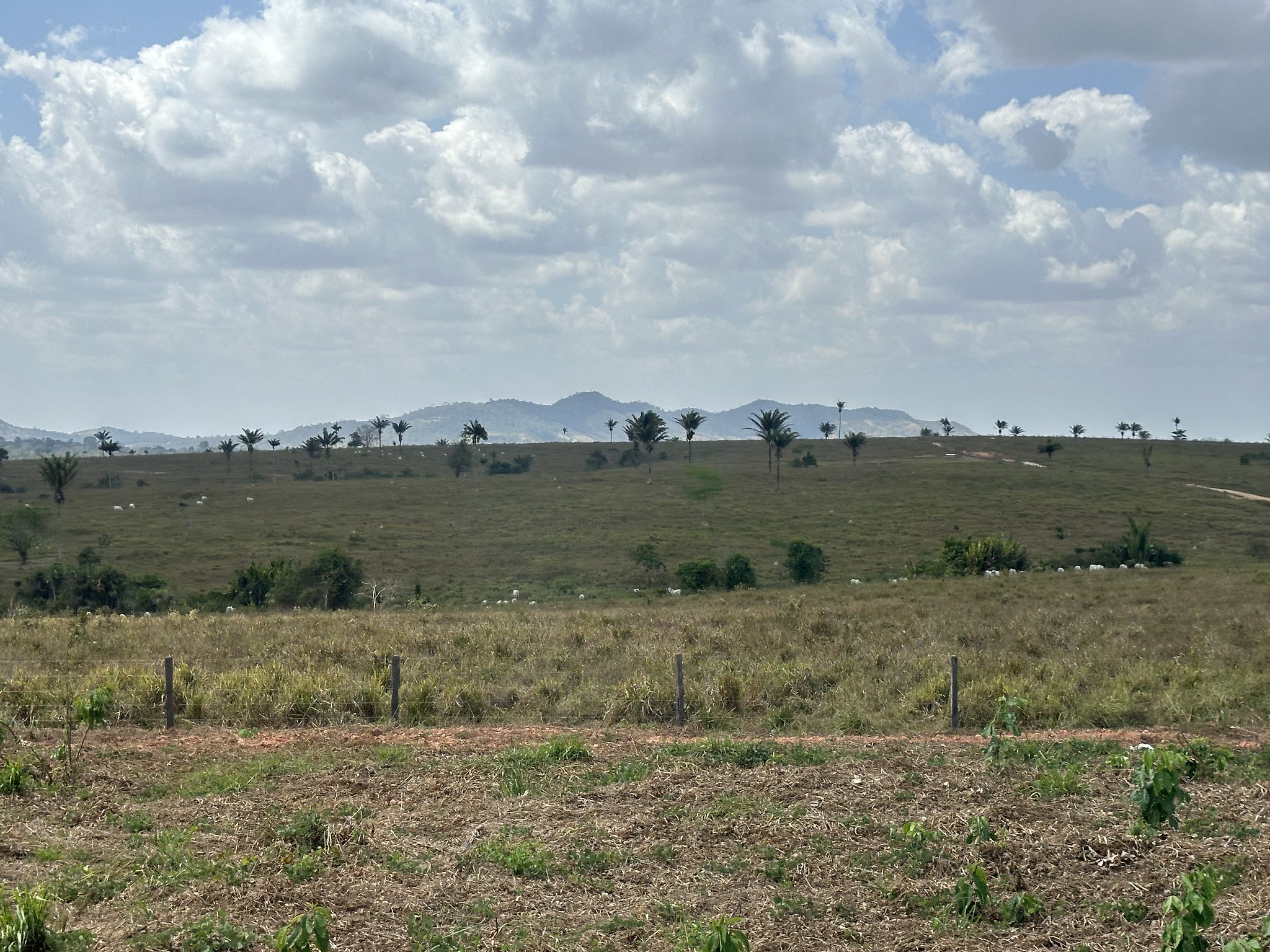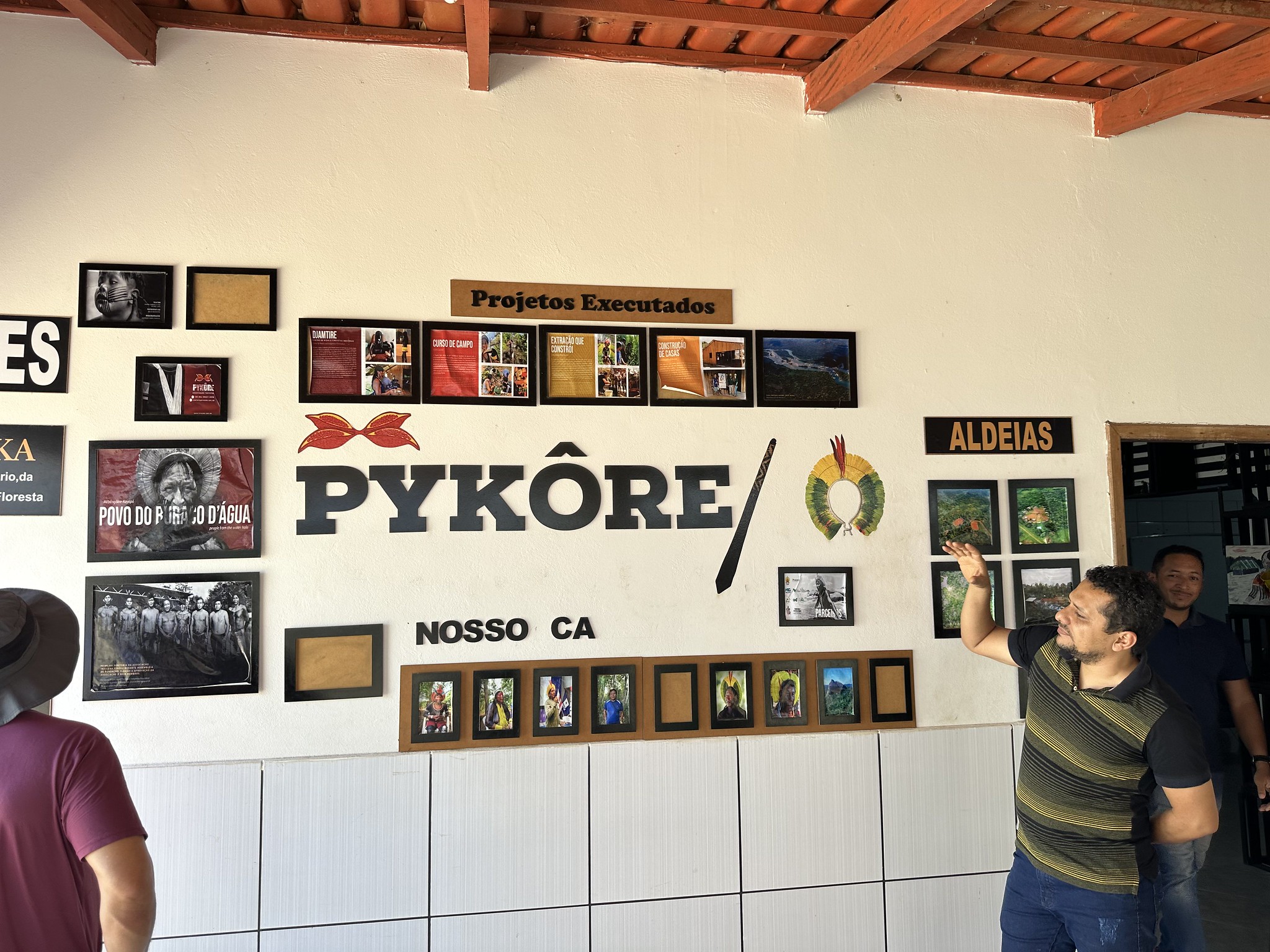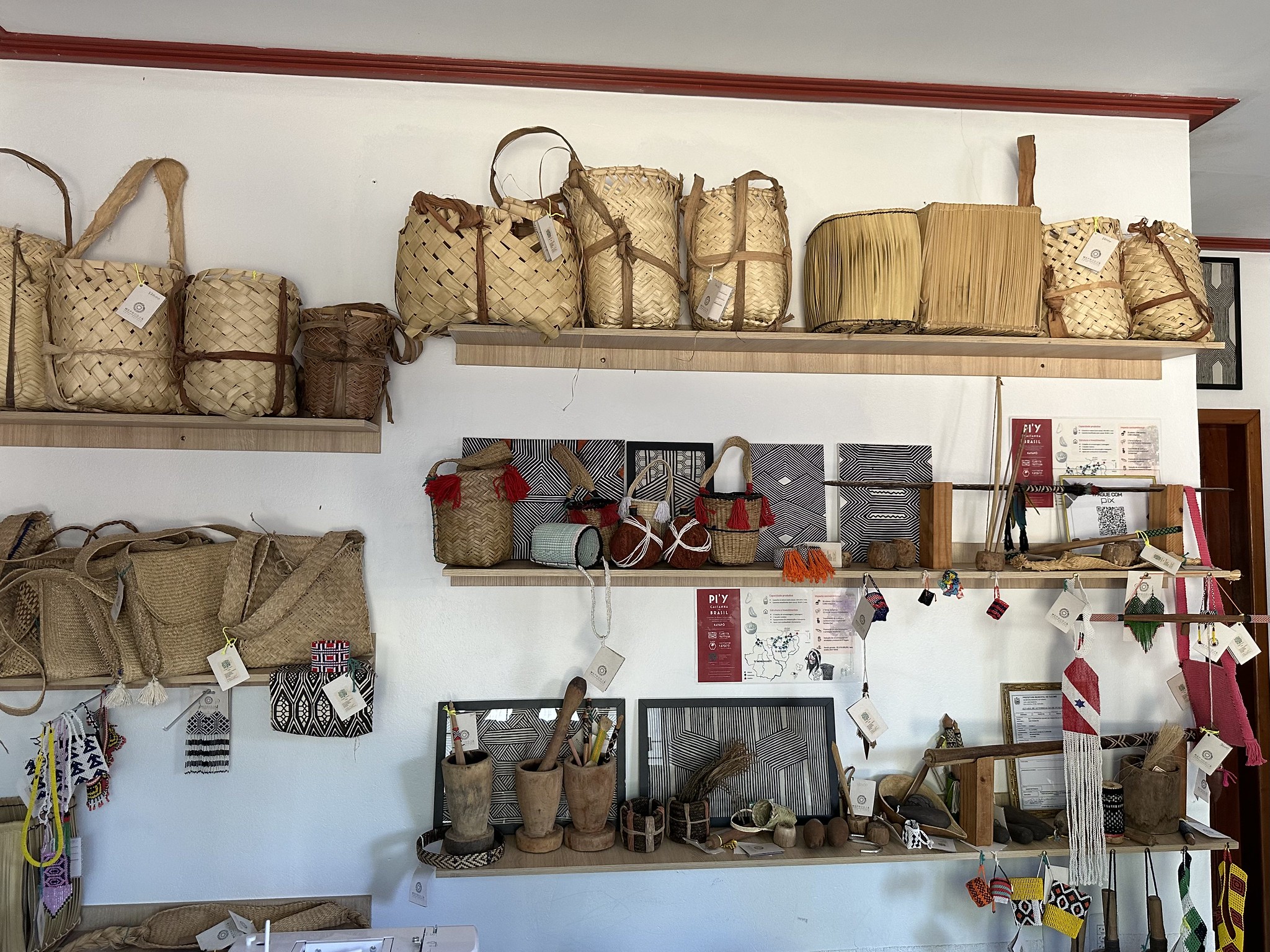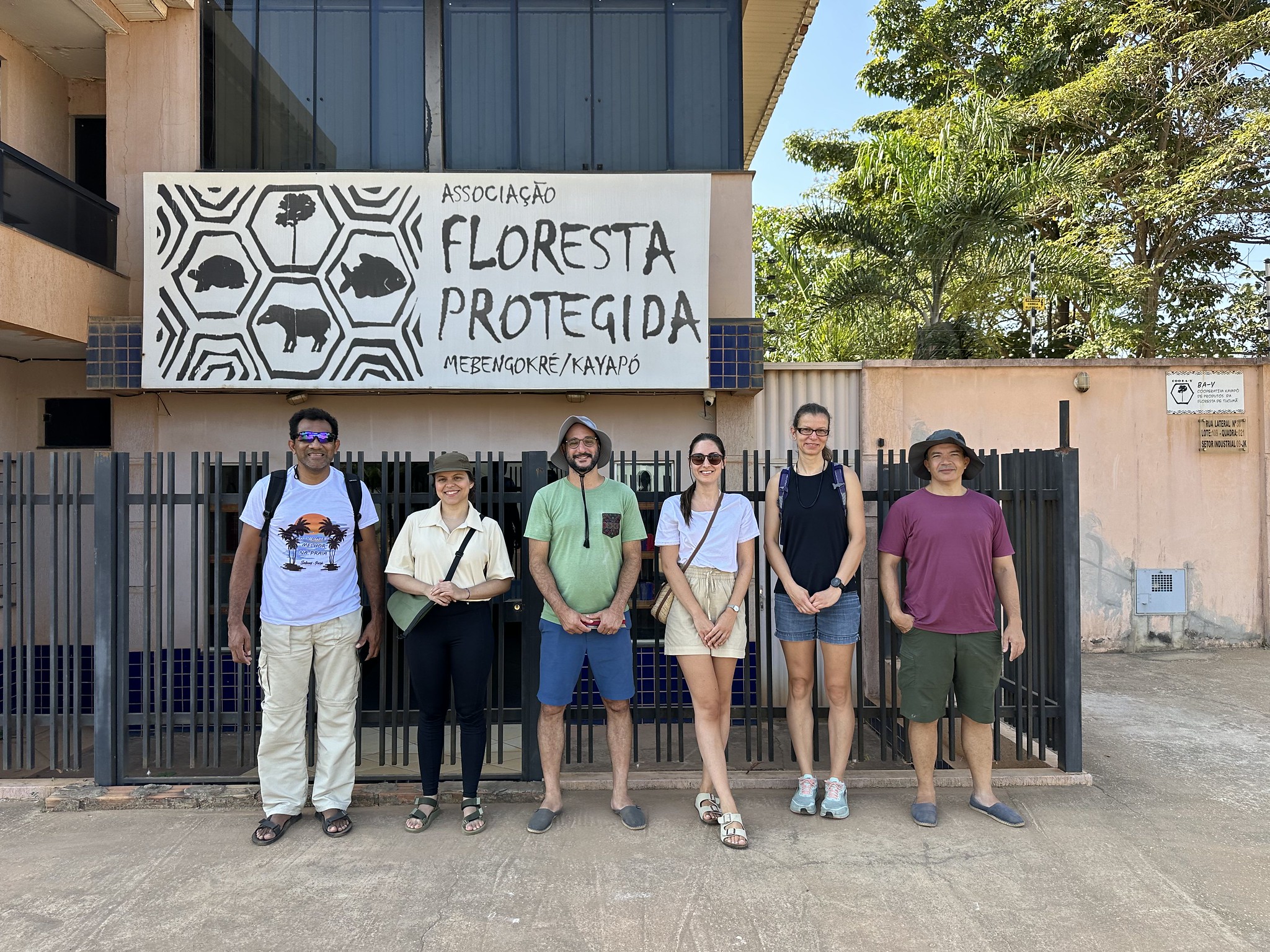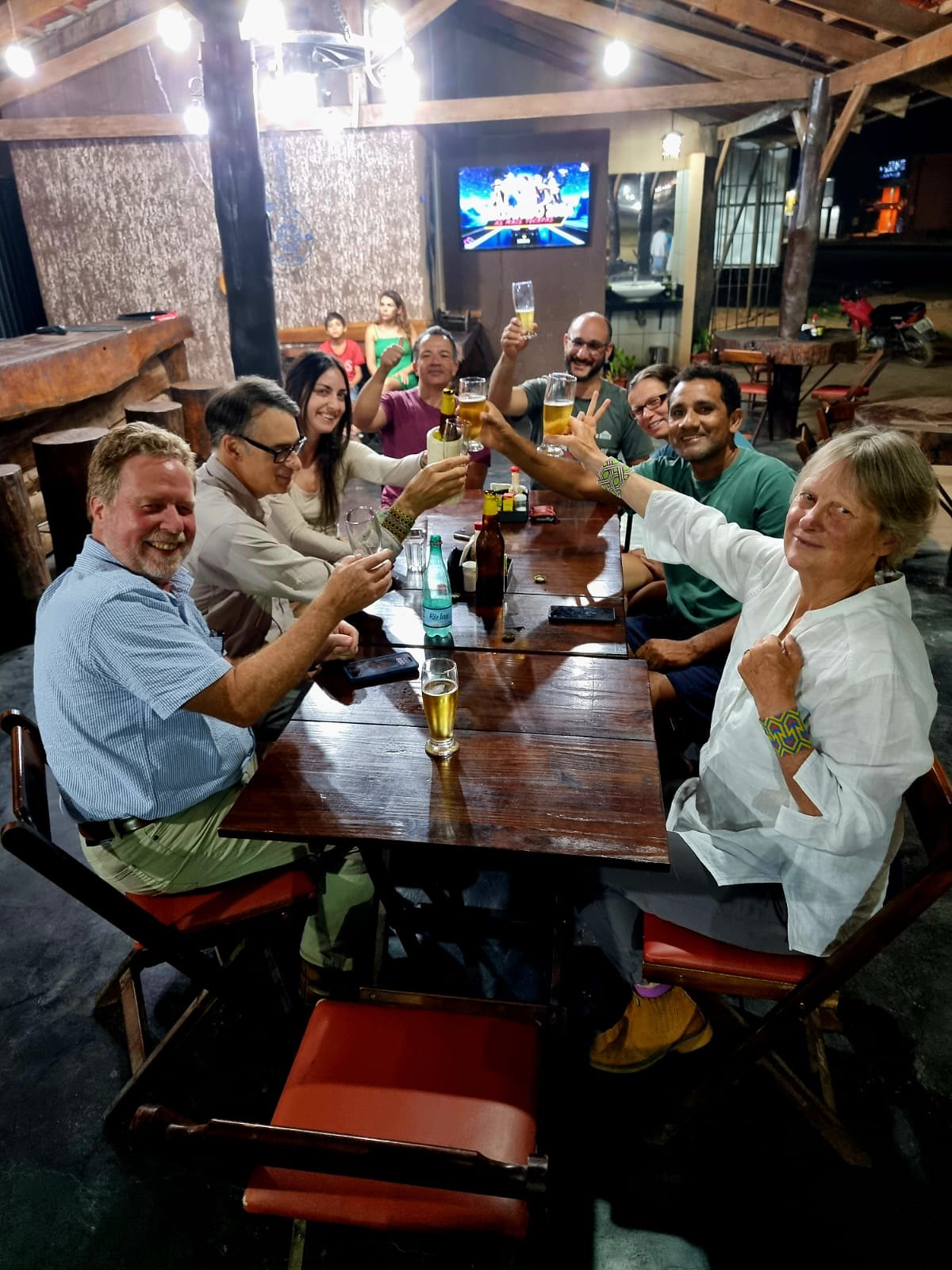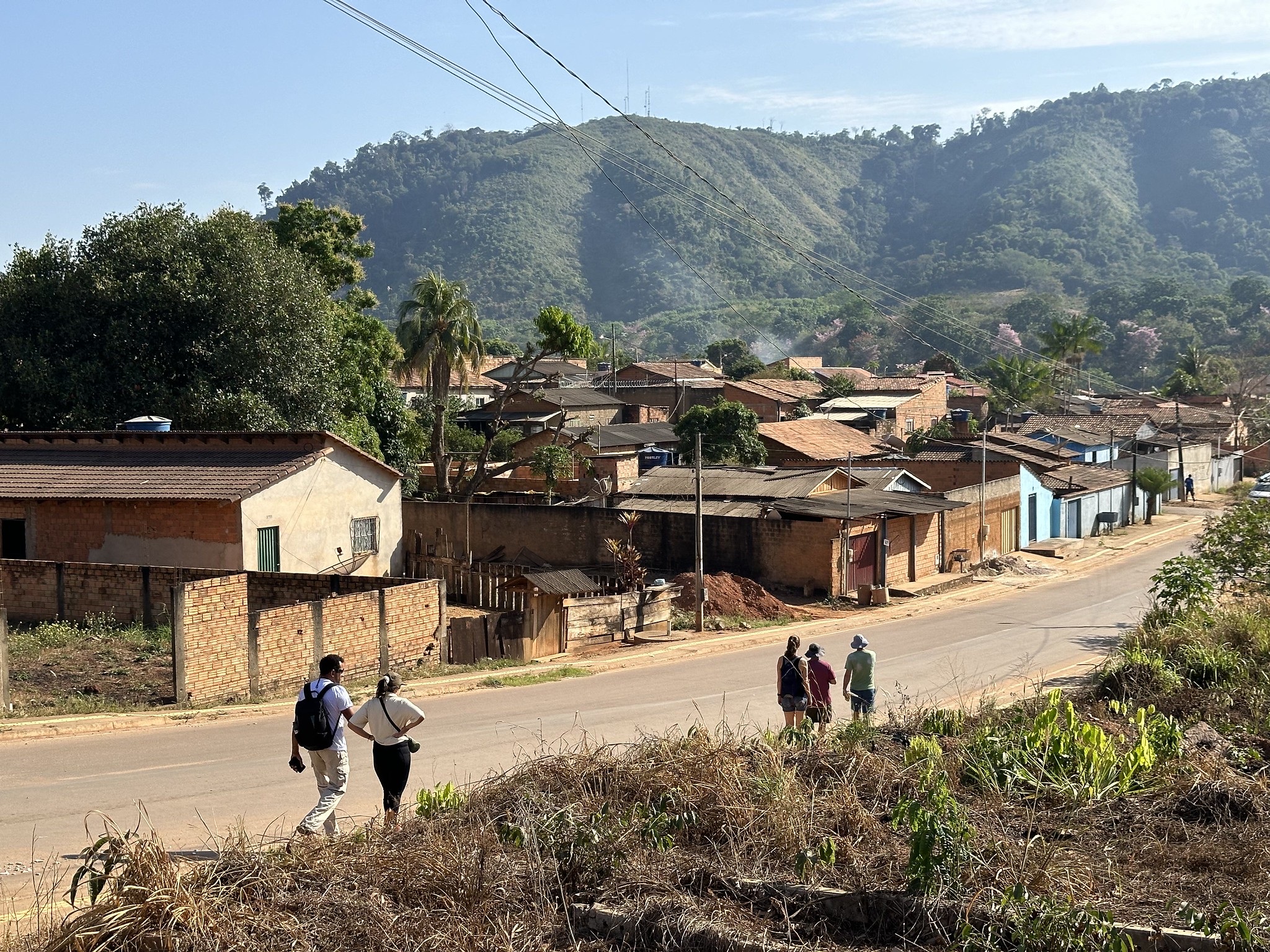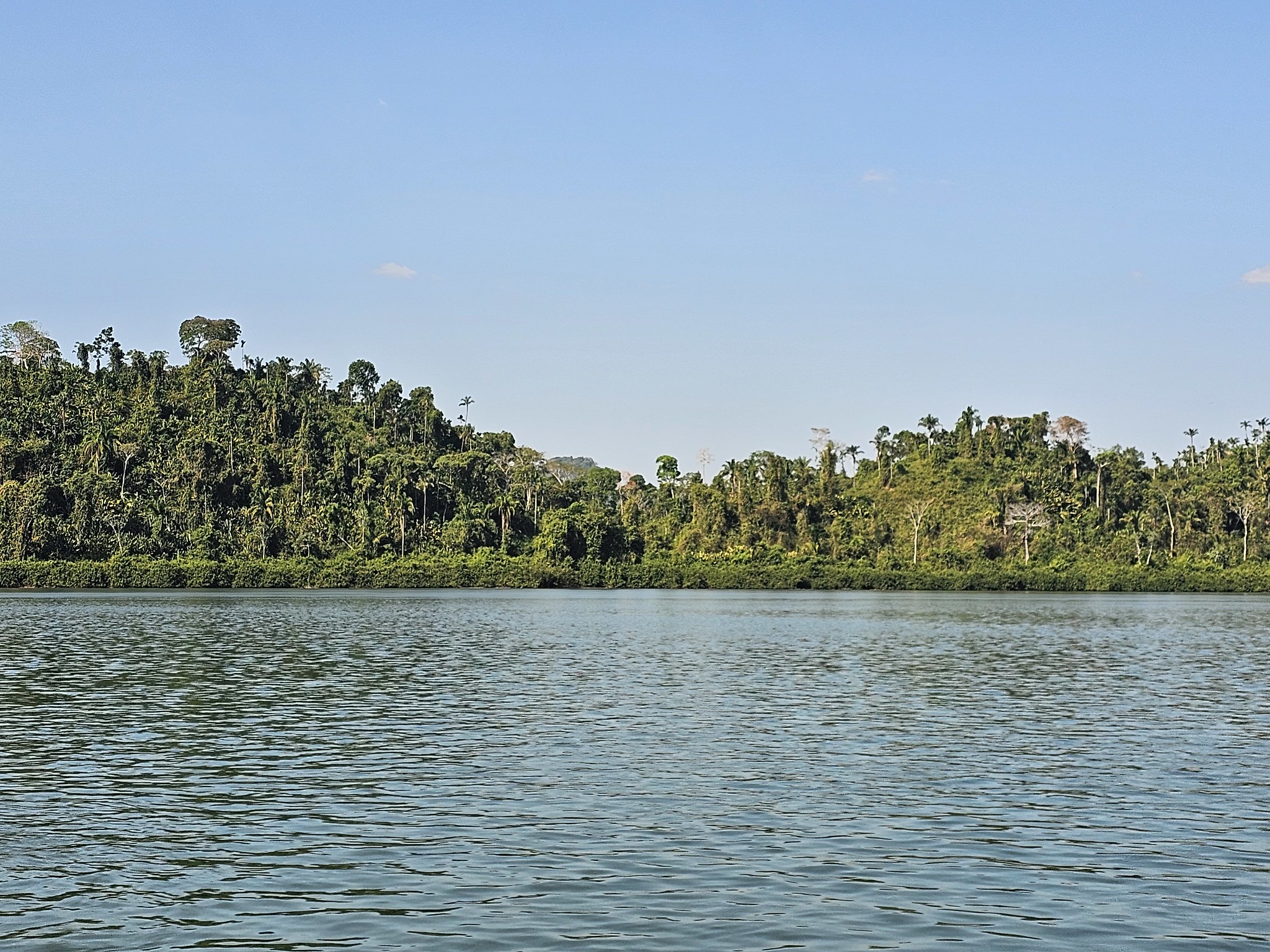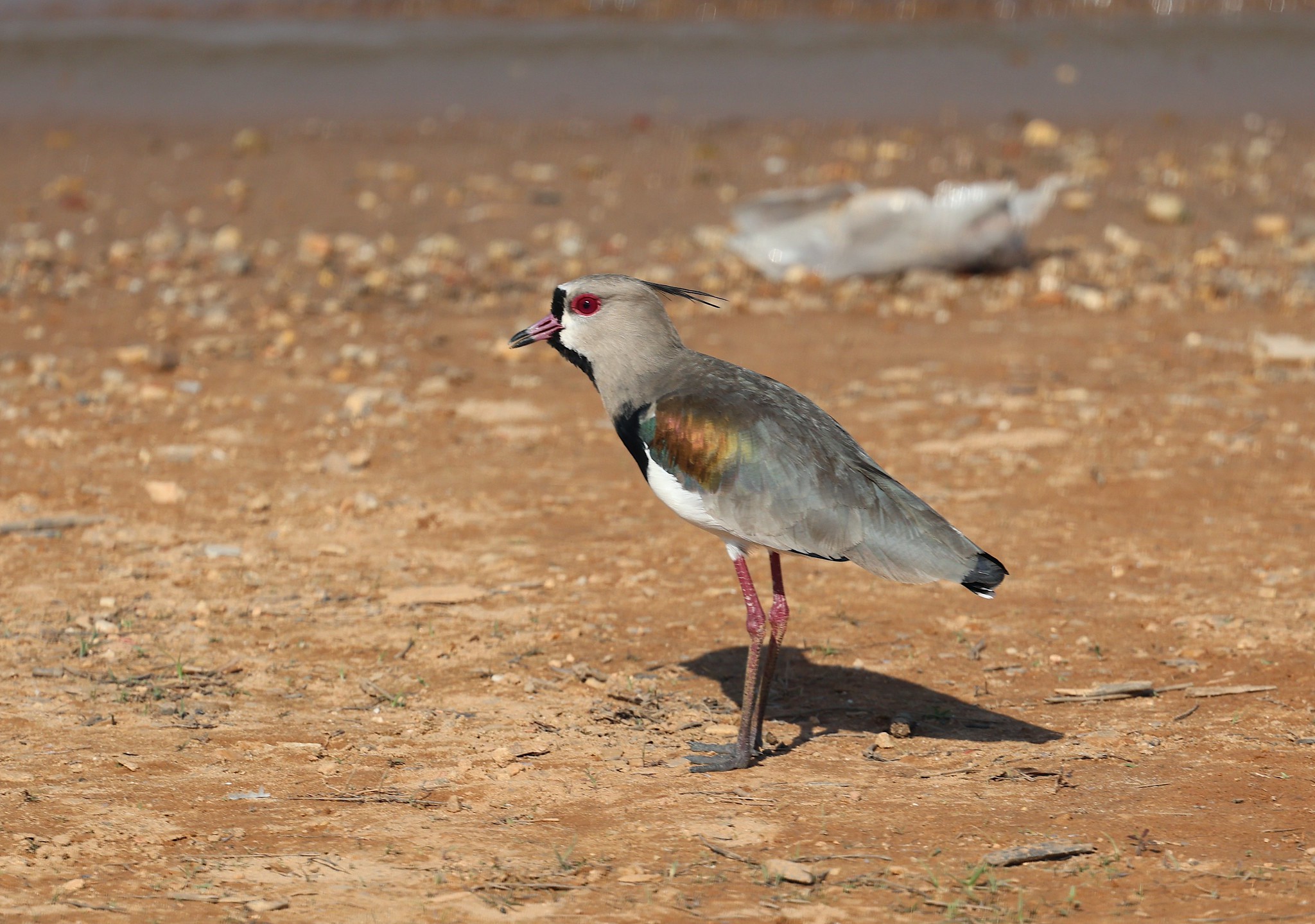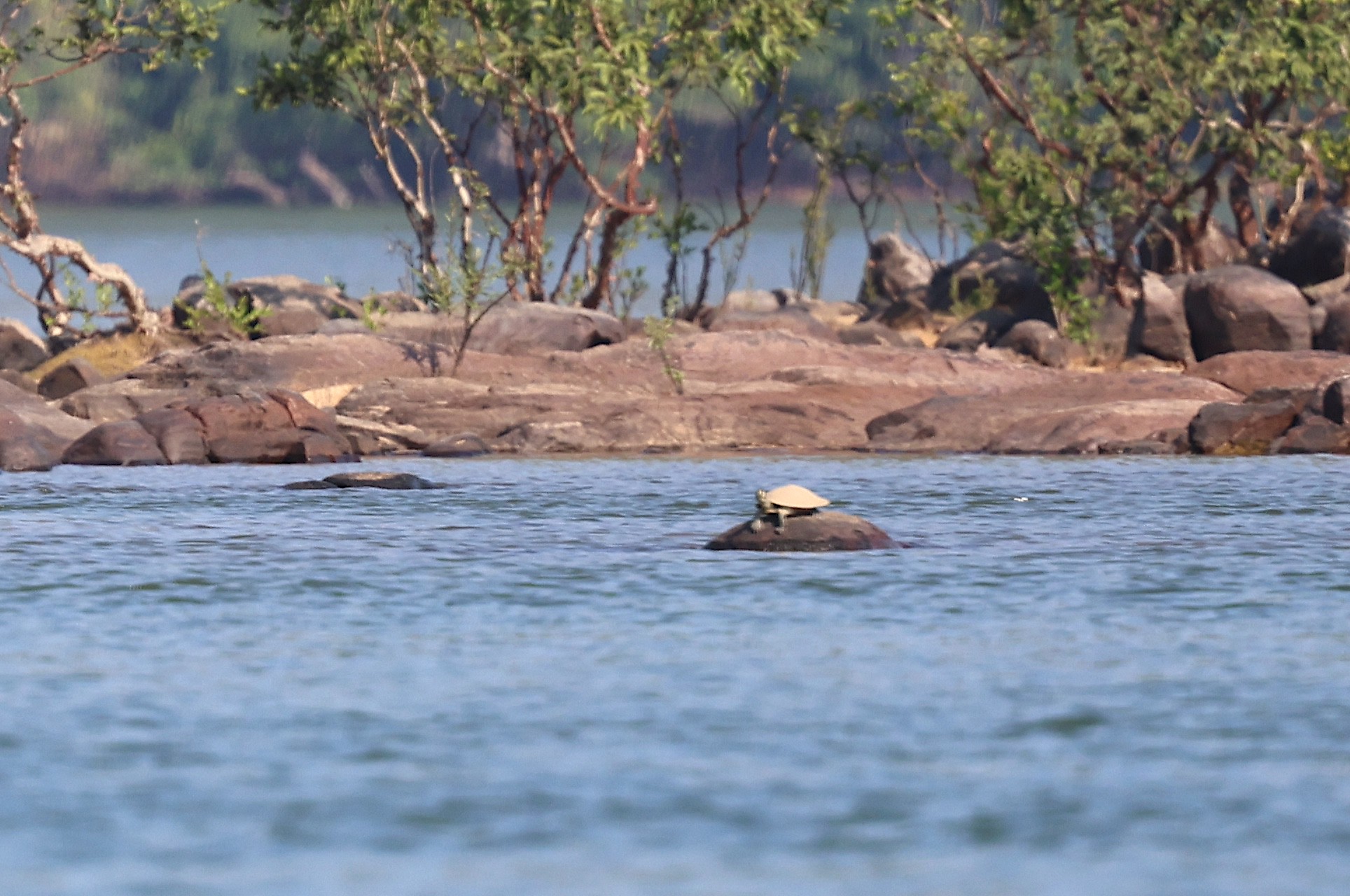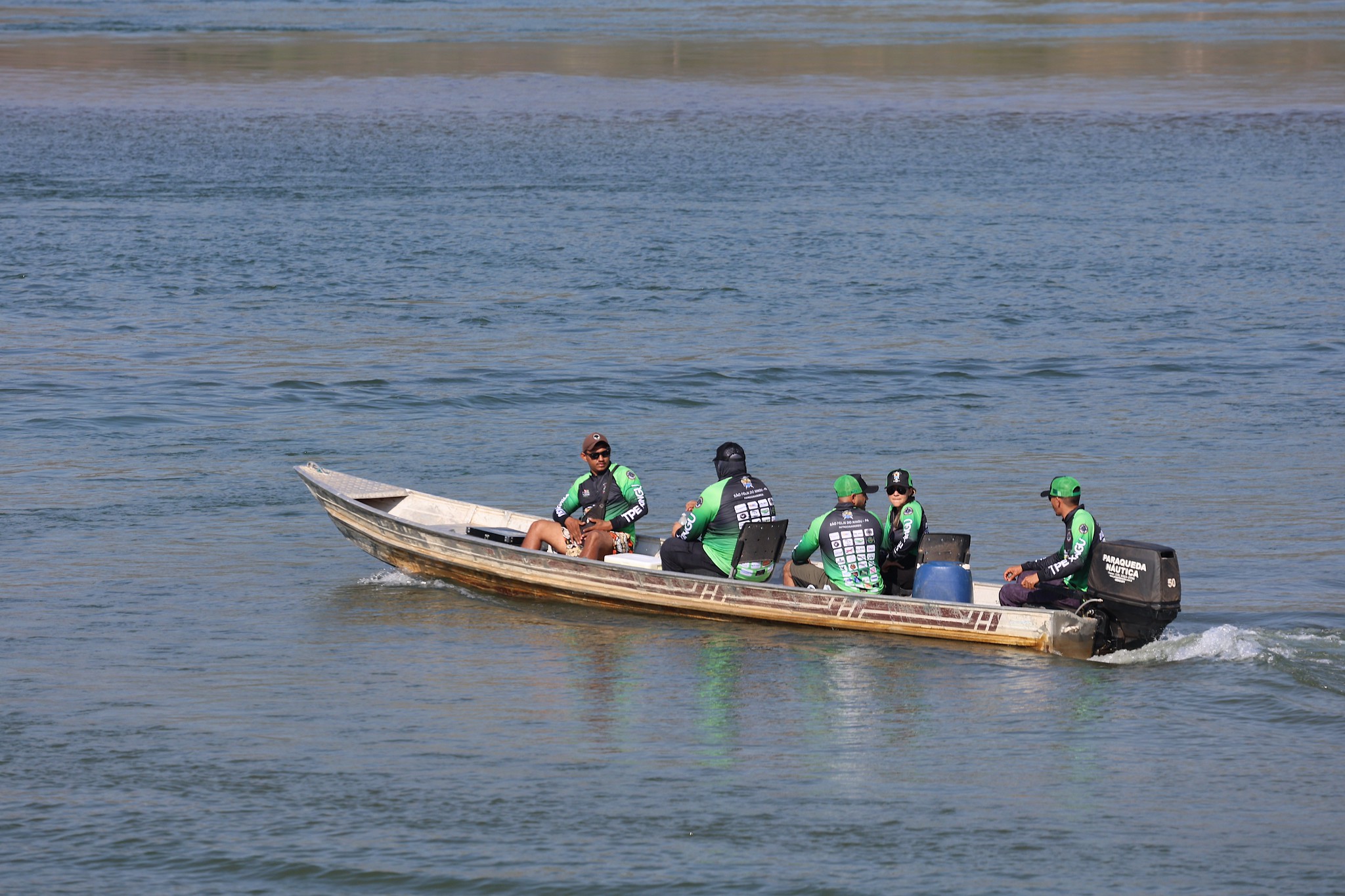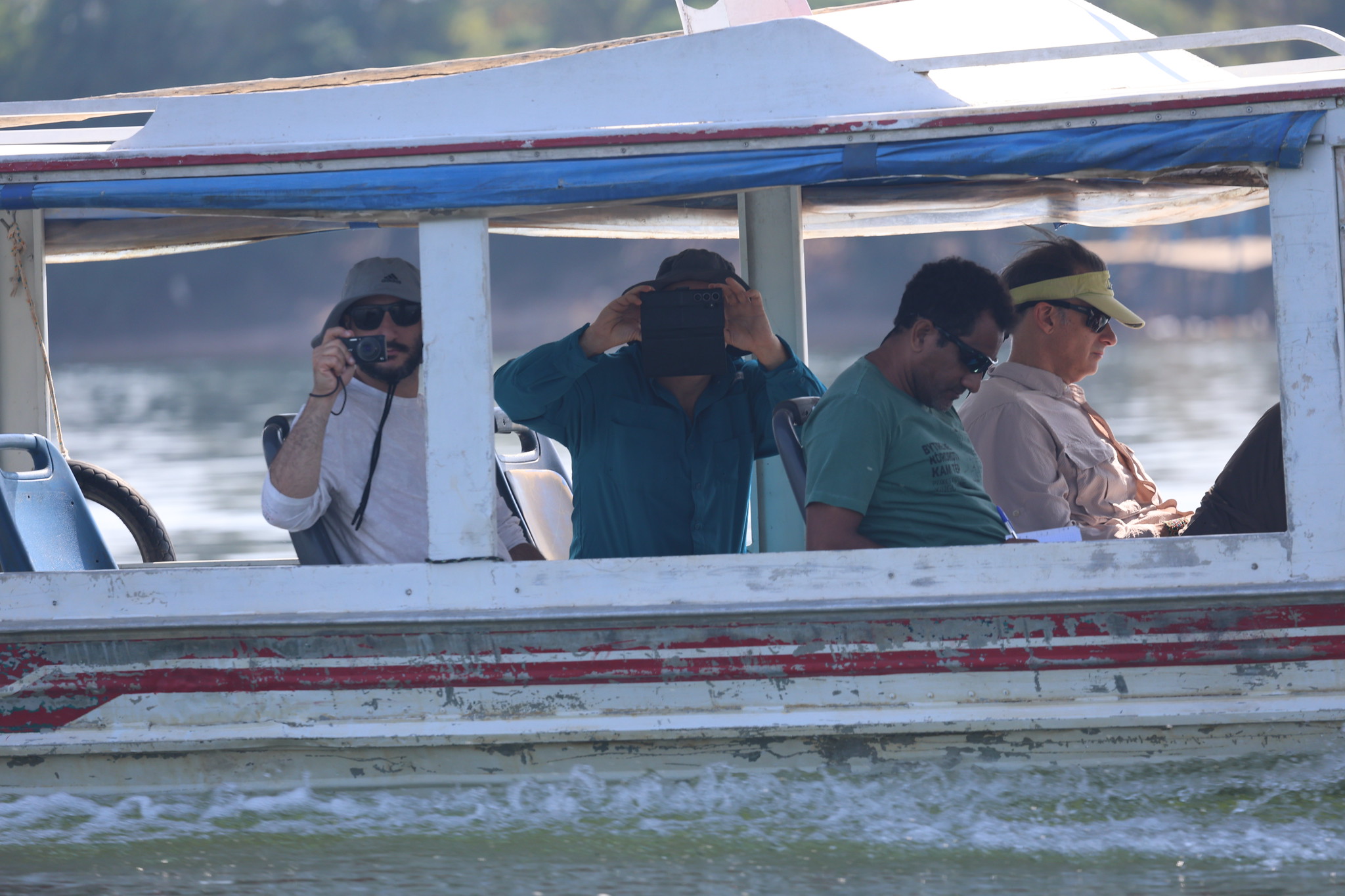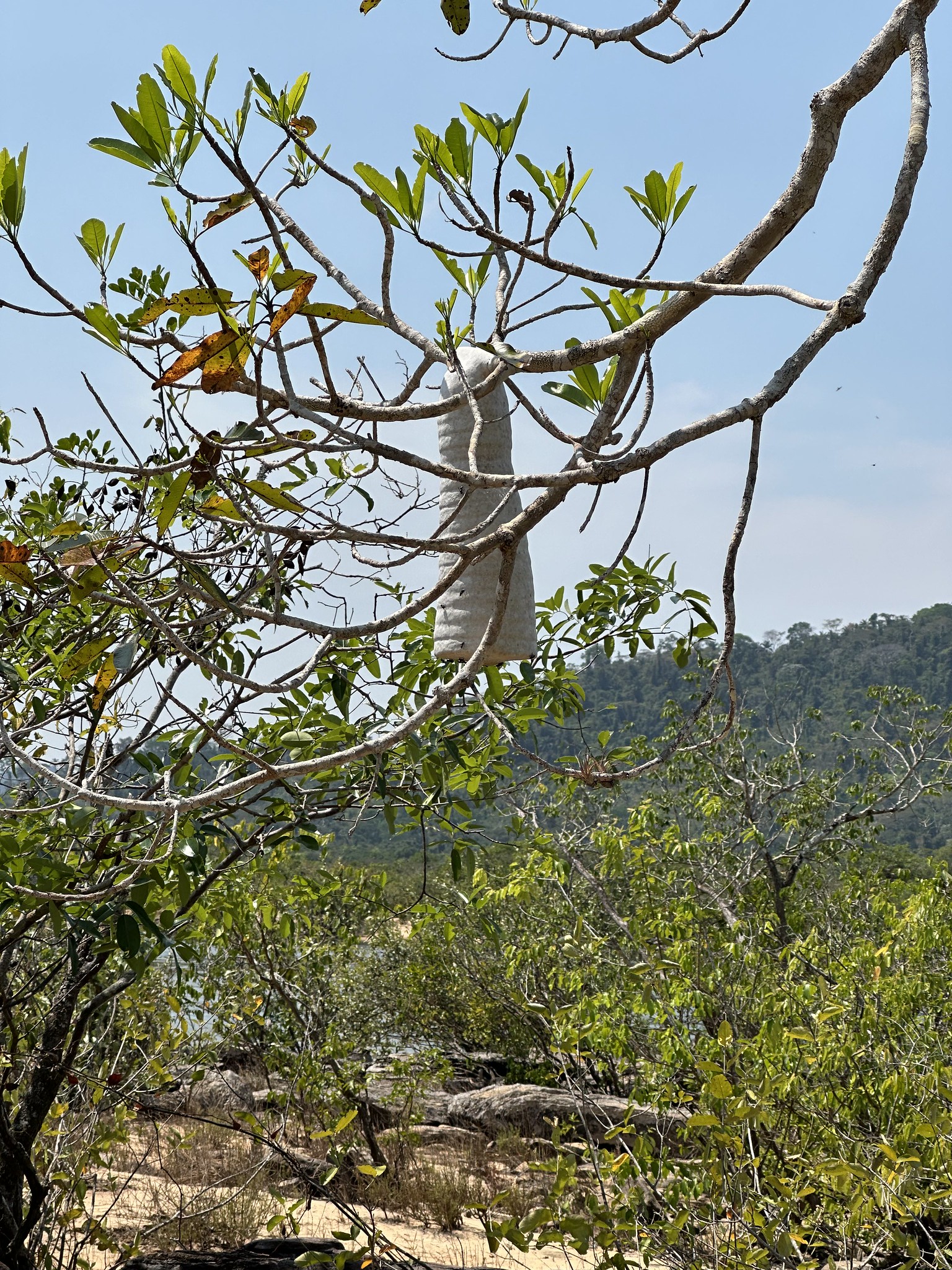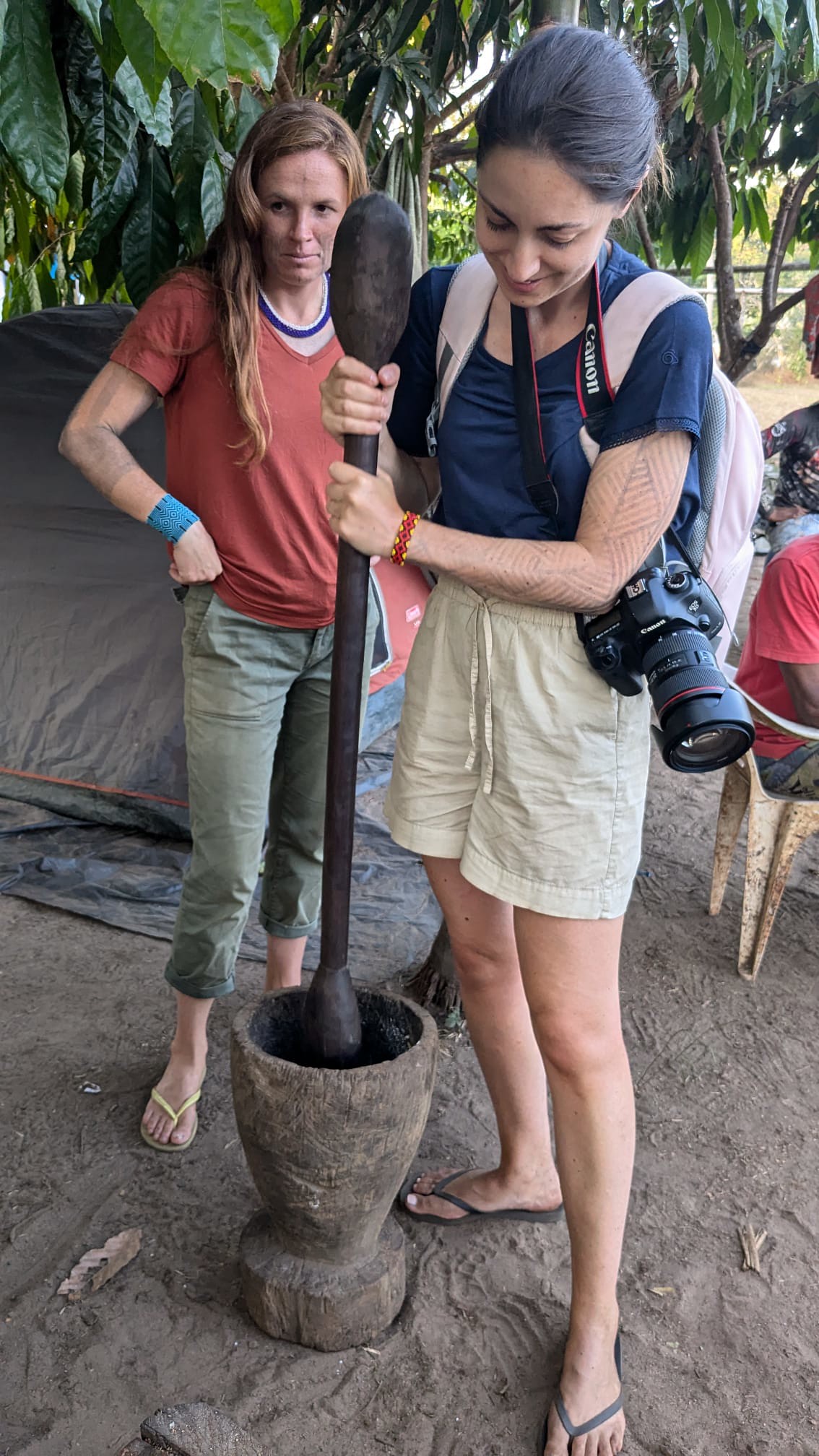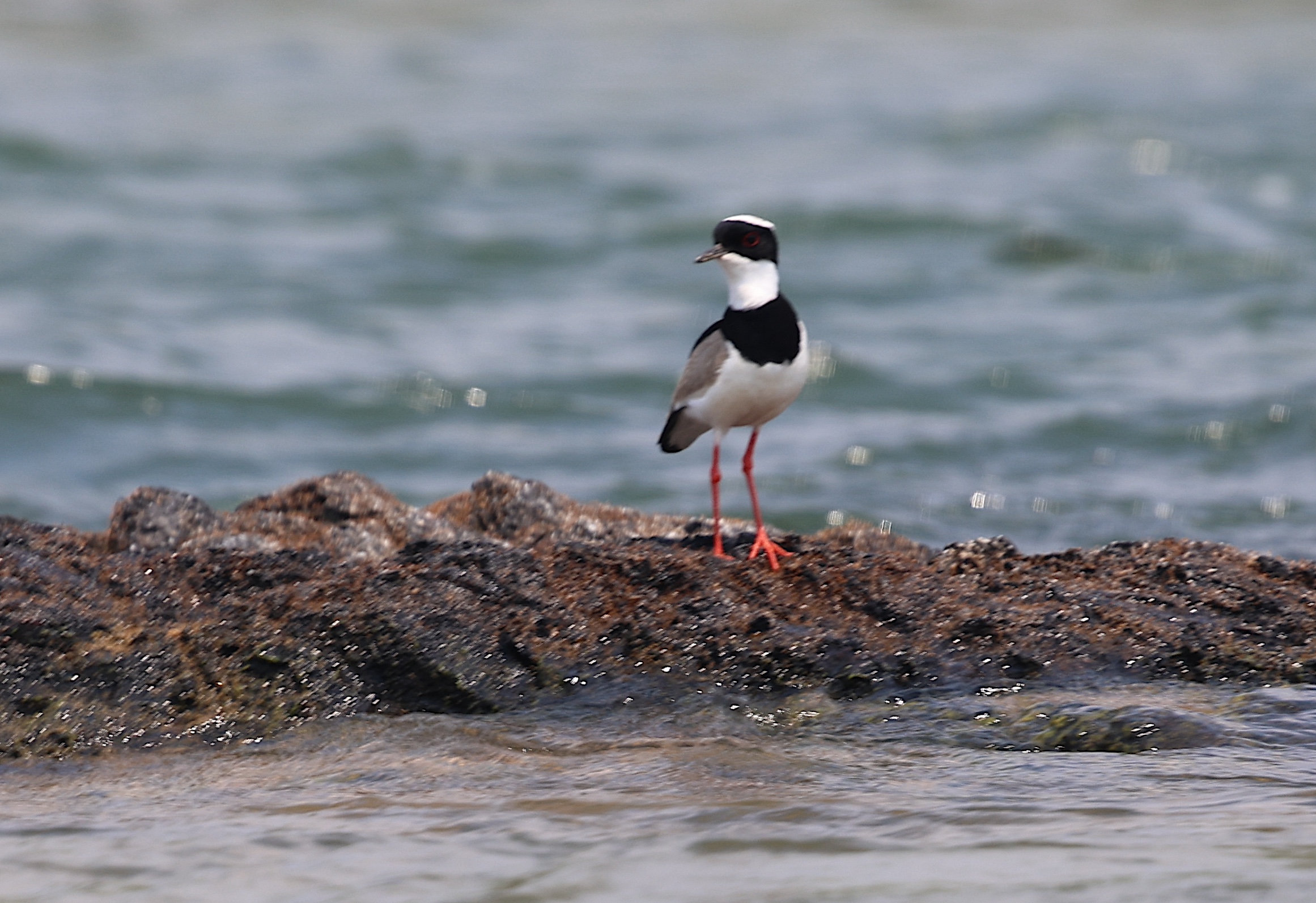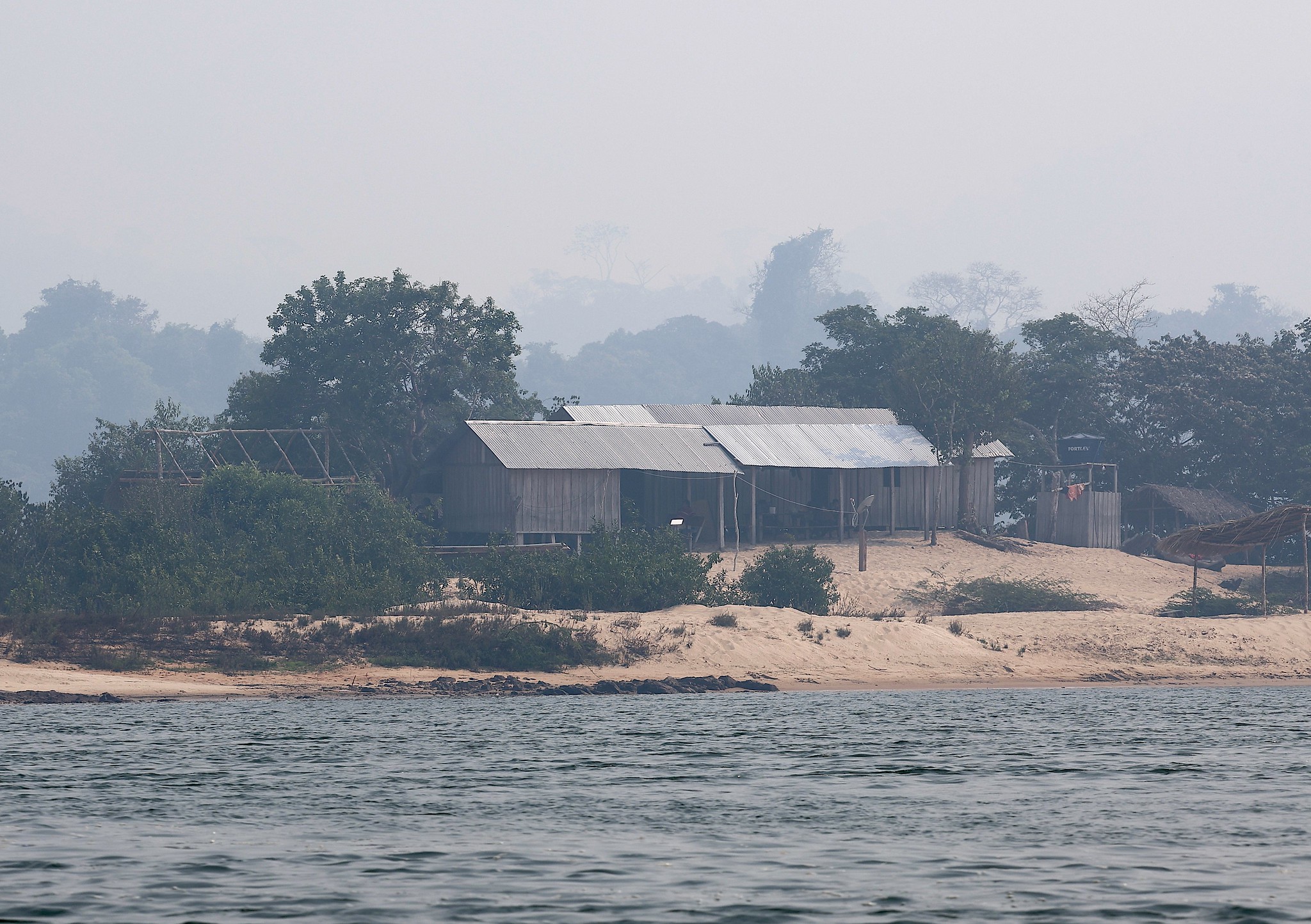Jaguars Thrive on Kayapo Land
Jaguars thrive on Kayapo Land
Jaguars are one of the most emblematic apex predators of South America and despite their historic range stretching from Mexico to Argentina they face mounting threats. Their survival is jeopardized by habitat fragmentation, over-hunting of their prey, and growing conflict with farmers. As we approach International Jaguar Day, it’s more important than ever to highlight places where jaguars are still thriving. One of those strongholds lies in the Southeast Amazon, under the guardianship of the Kayapo people.
Nine million hectares of continuous, unfragmented forest: that’s what it takes for apex predators to thrive.

Jaguars Need Space
Apex predators like jaguars need vast, uninterrupted territories to roam, hunt, and reproduce. This is where the Kayapo’s Indigenous land becomes critically important. Their territory covers around 9 million hectares of pristine, primary rainforest — a continuous, non-fragmented block that provides the scale jaguars require to maintain healthy populations.
Located in southeast Amazonia, this Kayapo territory is under constant pressure from industrial agriculture, logging, and mining. Yet by protecting this massive block, the Kayapo not only conserve jaguar habitat, but also maintain ecological connectivity. Their land helps link together other critical Indigenous landscapes — including territories extending toward the Xingu Indigenous Park (Parque Indígena do Xingu) upstream along the Xingu River.
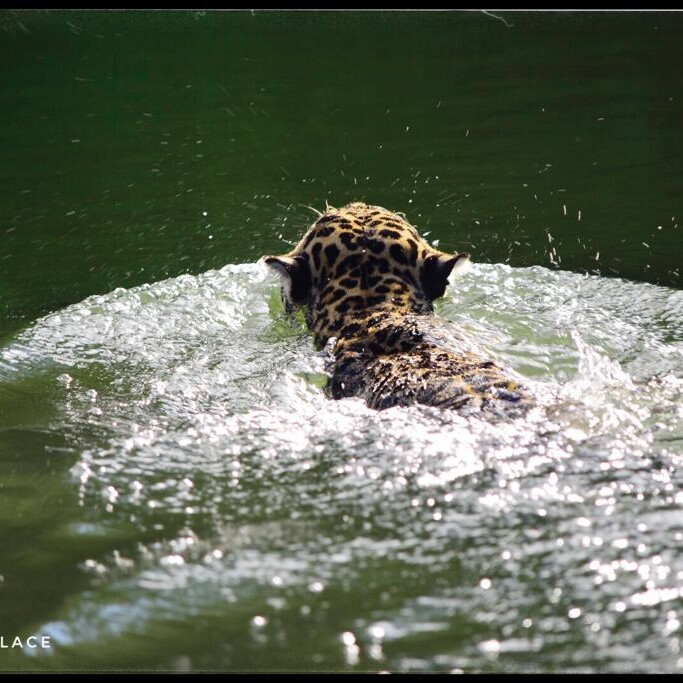
Jaguars Need Food
Space alone isn’t enough — jaguars also depend on abundant prey. The Kayapo people have lived in these forests for millennia, managing resources sustainably and with restraint. Their traditional patterns of hunting are low-impact; they take only what is needed and respect the balance of wildlife populations.
To enforce that balance, the Kayapo maintain a network of guard posts and community patrols. These act as a real deterrent to poachers, illegal fishers, and other outside threats. As a result, prey species remain abundant, meaning jaguars have plenty of food — a sign of a healthy, functioning ecosystem.
Abundant prey and healthy jaguars are proof of a thriving, well-protected ecosystem.
Follow Their Tracks
One of the most exciting ways to understand jaguar ecology is through camera trapping. By placing motion-triggered cameras in carefully selected locations, we can “catch” jaguars (and their prey) on film — without disturbing them.
For a hands-on experience, consider joining our Field Course in 2026. You’ll head into the field to place camera traps, interpret tracks, and learn how this powerful tool is used across the Amazon to monitor wildlife.
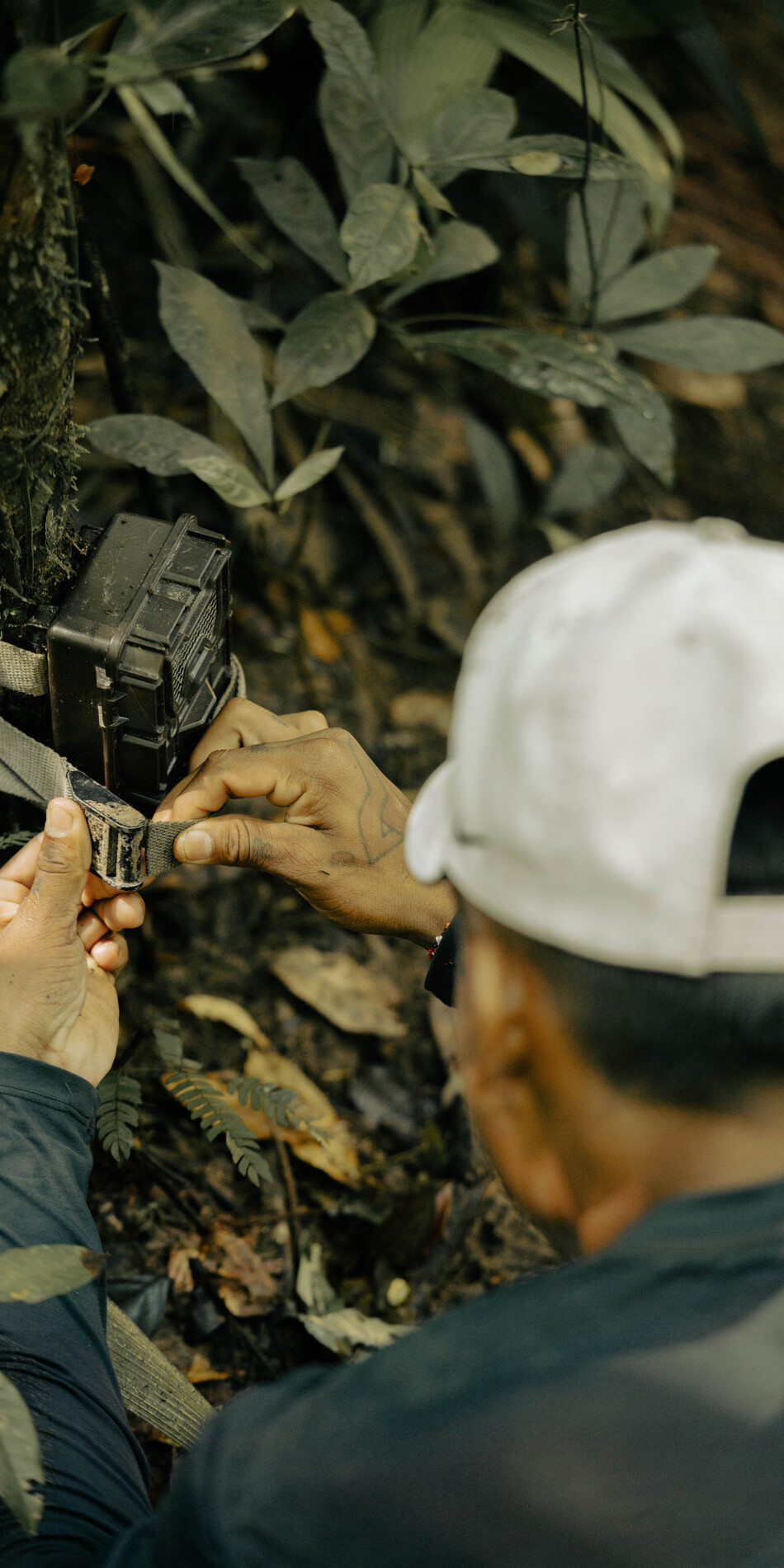
External pressures such as deforestation, fires, illegal incursions continue to mount on Kayapo's borders. That’s why International Jaguar Day is a moment to mobilize support for the work of Indigenous Peoples.
Kayapo Women Lead the Way at the IV Indigenous Women March
Kayapo Women Lead the Way at the IV Indigenous Women March
“Our body is territory. We are the guardians of the planet, for the healing of the Earth.”
From August 5–9, 2024, more than 5,000 Indigenous women from across Brazil gathered in Brasília for the IV Marcha das Mulheres Indígenas under the theme: “Nosso corpo, nosso território: somos as guardiãs do planeta” — “Our body, our territory: we are the guardians of the planet.”
Among them, the Mebêngôkre-Kayapo women stood out for their powerful presence, uniting representatives from three regions across Pará and Mato Grosso. For the Kayapó, this march was more than symbolic — it was an opportunity to amplify urgent calls for the demarcation of the Kapôt Nhinore Indigenous Territory, ancestral home to the Kayapó and Yudjá peoples and birthplace of Chief Raoni.
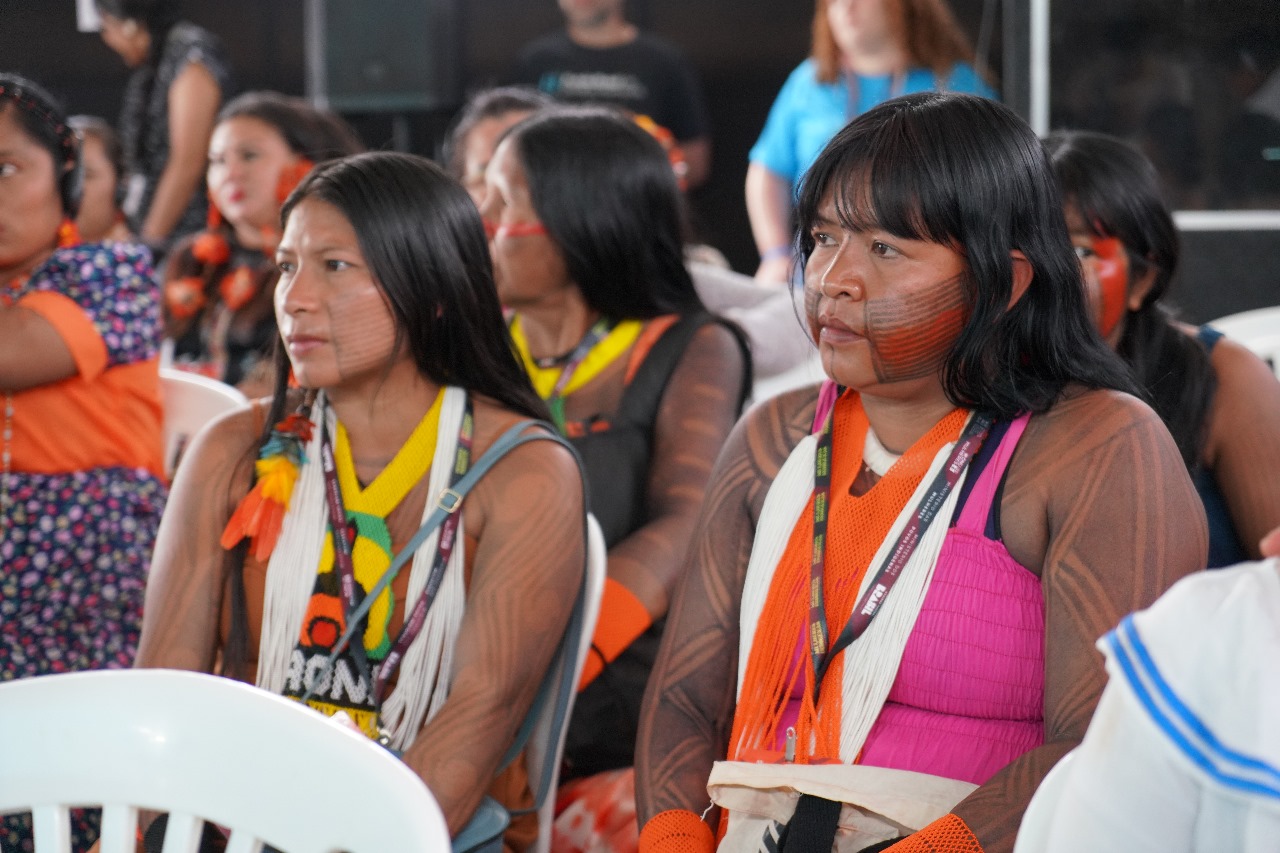
photo: @prai.kayapo
Kayapo Leaders Meet with FUNAI in Brasília
On August 5, the delegation from the Instituto Raoni met with Joenia Wapichana, president of FUNAI, to discuss the progress of the Kapôt Nhinore demarcation process. Vice-president Kokonã Metuktire, daughter of Raoni, presented the communities’ demands and will carry the updates back to local leaders. FUNAI reaffirmed that the process is moving forward, with technical teams addressing all legal challenges.
Kayapó women also took the fight directly to Brazil’s halls of power. In a symbolic act before the National Congress, Kayapo leader Oé Kaiapó Paiakan, cofounder of ANMIGA, placed a feathered headdress on the head of Indigenous Congresswoman Célia Xakriabá — a gesture of respect, recognition, and ancestral unity.
A Week of Action and Solidarity
Throughout the week, the Kayapó women marched alongside thousands of other Indigenous women, carrying banners, chants, and the Carta Pela Vida e Pelos Corpos-Territórios (Letter for Life and Body-Territories) to the Praça dos Três Poderes. This document reaffirms their role as guardians of the forest, defenders of their bodies and lands, and protectors of future generations.
For the Kayapo, defending land is defending life. As Kokonã Metuktire emphasized, recognizing Kapôt Nhinore is recognizing the people who safeguard the forest — and the strength of the women who lead this fight in Brasília and beyond.
Kayapo Territorial Surveillance 2024
In 2024, a remarkable Amazon success story continued to unfold despite the wildfire, and smoke that darkened Amazonian skies. The Kayapo People stood strong, protecting over nine million hectares (23 million acres) of their forest territory. This achievement stands as a testament to decades of Kayapo resistance, institution-building, and sustained philanthropic support.
The cornerstone of this ongoing success is the Kayapo Territorial Surveillance program. This program plays a vital role in safeguarding their constitutionally recognized lands from immediate threats like illegal logging, gold-mining, and fishing. Through this effort, other conservation projects flourish, and the integrity of their territory remains intact.
Defending the Land
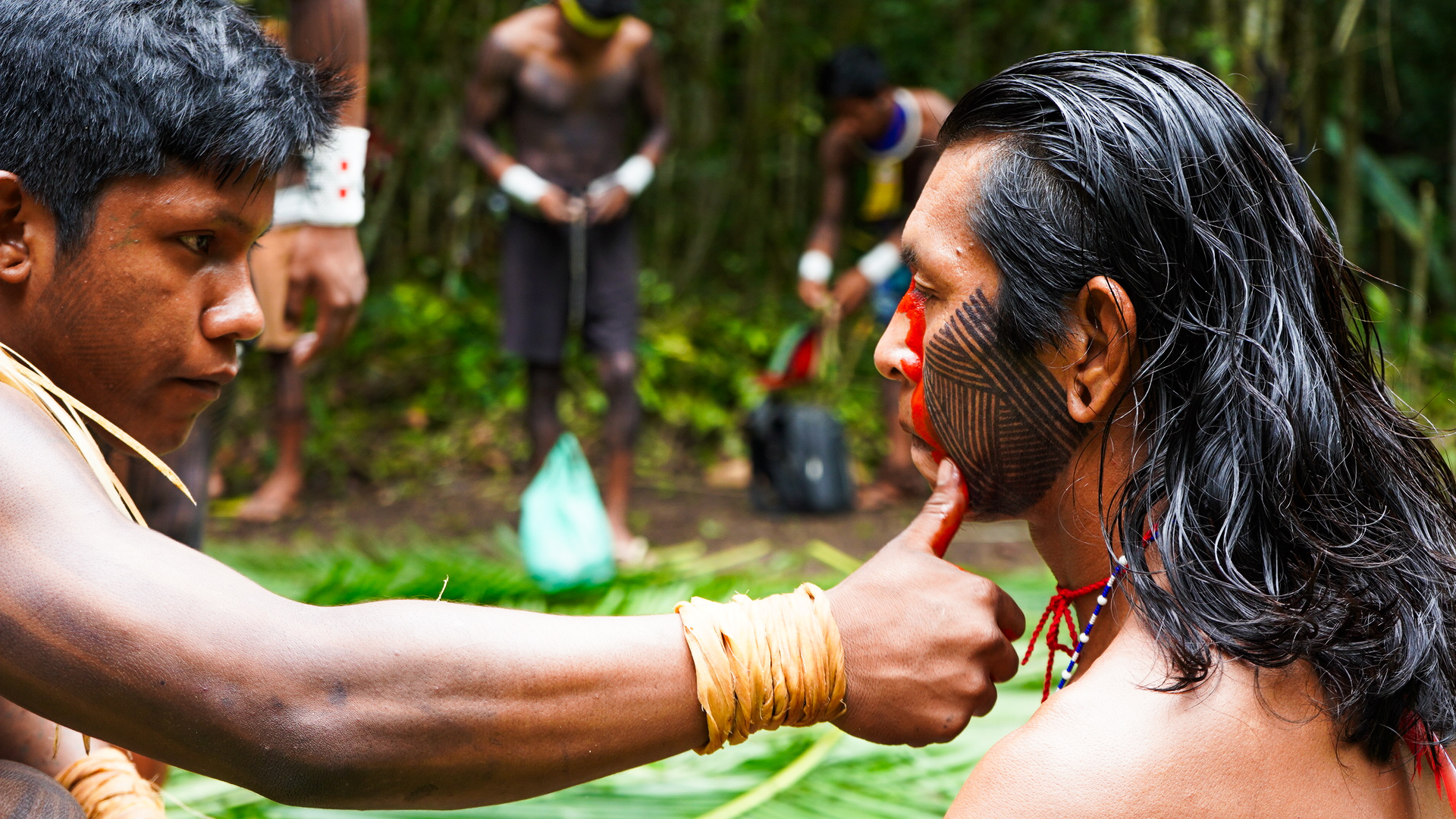
Photo: Takakrua Kayapo
More than 1600 Kayapo Guardians from 71 villages representing 3 Indigenous Associations participated in 2024.
The vastness and remoteness of Kayapo territory make its protection a formidable challenge. To confront this, the Kayapo and their allies have established guard posts at vulnerable entry points, serving as deterrents against illegal incursions. These posts signal to outside society that the Kayapo are organized and determined to defend their land rights.
Guard post teams typically consist of five or six Kayapo members from a single community, rotating weekly, biweekly, or monthly depending on logistical challenges. In 2024, 16 border guard posts operated for five to seven months, maintaining the integrity of Kayapo territory.

Sixteen Kayapo Guard Posts strategically monitor 80 –90% of the Kayapo’s 2,200 km border.
Guard posts are built with huts for sleeping, cooking, storage, and a bathroom. Each post is equipped with a freezer, water pump, generator, water tower, parabolic antenna and television, and solar power. Transportation to and from the guard posts relies on boats along rivers and/ or 4×4 trucks at posts with road access. All posts are outfitted with satellite internet to facilitate logistics, delivery of a video education program, and safety. Post operation is supported by two non-Kayapo administrators responsible for controlling supplies of food and fuel and coordinating logistics with their regional Kayapo NGO. Following traditional Kayapo values of egalitarianism, Kayapo guard teams rotate weekly to maximize participation and benefits sharing. This system necessitates permanent post administrators to coordinate day-to-day logistics, supplies, equipment maintenance, and team rotation.
Each post costs approximately US$ 12,000 per month to operate. Given the vast area protected, the conservation return on this investment is unparalleled.
Guard Post Duties
Each guard post team undertakes numerous responsibilities:
- Checking authorization of any non-Kayapo individuals entering the territory
- Patrolling border sections in their assigned areas
- Maintaining the camp, gathering firewood, fishing, and building structures
- Opening and closing posts as needed
New in 2024
Guard posts also became hubs for education, using video-based curricula to empower Kayapo youth with knowledge about territorial protection and indigenous sovereignty.


Logistic Challenges
The work is not easy and several guard posts present exceptional logistical challenges:
- Iriri Post: Supplies must be transported over 600 km of rough dirt roads and a 10-hour boat ride, followed by a 50 km river journey.
- Raoni Post: Access requires traversing 500 km of bad roads, a three-hour boat trip, and navigation through a dangerous frontier region.
- Rio Vermelho Post: Supplying the Rio Vermelho post involves a three-day boat trip and a two-day, 40 km hike through forest and savanna.
- Pista Nova/Angme-e Post: Access requires a day-long boat ride and a 35 km forest trek.
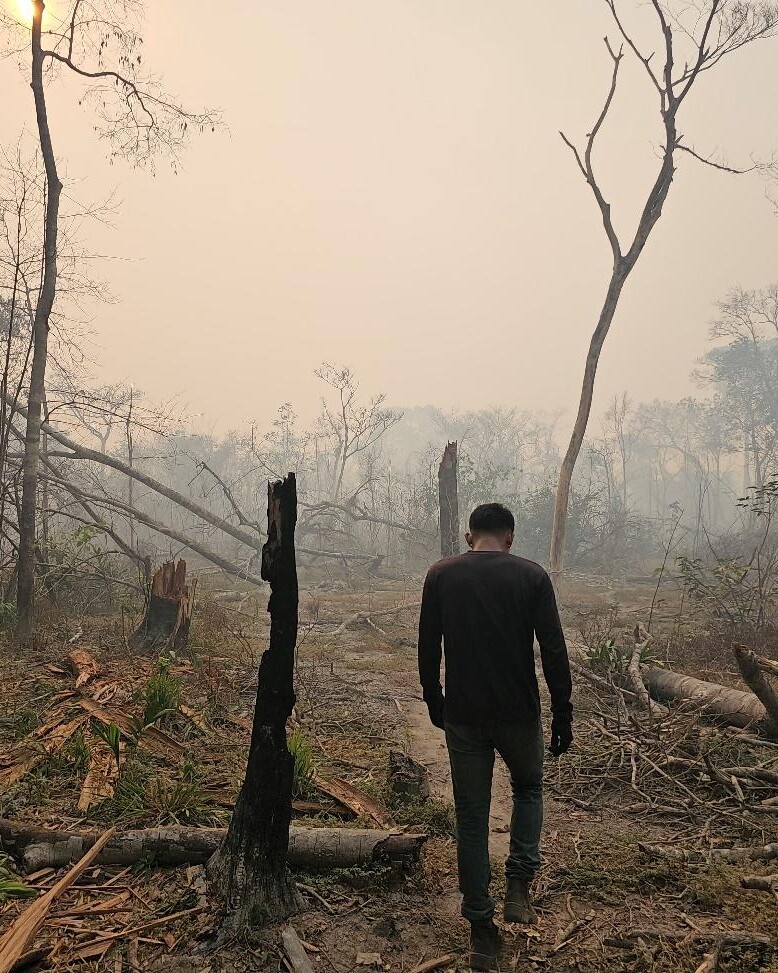
Team following a trail in the forest affected by fire, Tepdjàti village, Kayapó Indigenous Territory, Pará, Brazil.
The state of the 10.6 million hectare block of ratified Kayapo Indigenous territory as of December 2024.
Kayapo indigenous territories (TI) are outlined in gray with an eastern band of ~ 1.2 million hectares outlined in purple that does not form part of this project so receives no conservation NGO investment and has, therefore, been lost to illegal logging and goldmining. Approximately 9.4 million hectares of Kayapo territory to the west of the interior purple border is protected with conservation and development investment and remains intact. Note the heavy presence of fire in 2024. Fire concentrated on the dry savanna patches and highly degraded forest along the eastern border (outlined in purple) that receives no conservation investment and does form part of the Kayapo project. Undisturbed forest remained largely unscathed.
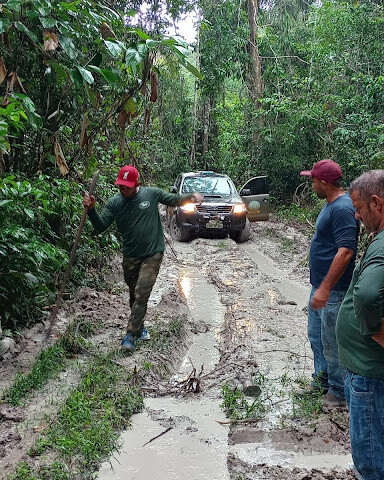
Bringing supplies to Iriri guard post
Mining and logging outside the NGO alliance
The northeastern sector of Kayapo territory (TI Kayapo) showing the eastern band of territory (delineated in purple) where the Kayapo did not ally with the conservation NGOs and therefore has been heavily invaded by goldmining (red) and logging. Guard post locations are shown (green dots). The brown in Kayapo territory are patches of savanna (cerrado) on Brazilian shield rock. The tan colour outside Kayapo territory is deforestation for ranching.
Cumulative deforestation as of 1997 and 2023


Cumulative deforestation as of 1997 and 2023 in Kayapo territories Bau and Menkragnoti (dark green) that are represented by the Instituto Kabu. The buffer zone-study area is delimited by the purple line. Other Kayapo territories (TI Kayapo, TI Capoto/ Jarina, and TI Badjonkore) and the neighbouring Panara indigenous territory on the western border are marked in light green. Red and pink indicates deforestation.
Expeditions and Patrols
To complement guard activities the Kayapo undertake expeditions by foot, vehicle, or boat along and within the border. These patrols mark Kayapo presence and deter illegal incursions. Expeditions include weekly or bi-weekly patrols along rivers and longer surveys of remote areas. There are two types of expeditions:
– weekly or bi-weekly patrols by post teams along stretches of river, and
– expeditions of several days that survey areas not reached by guard posts.
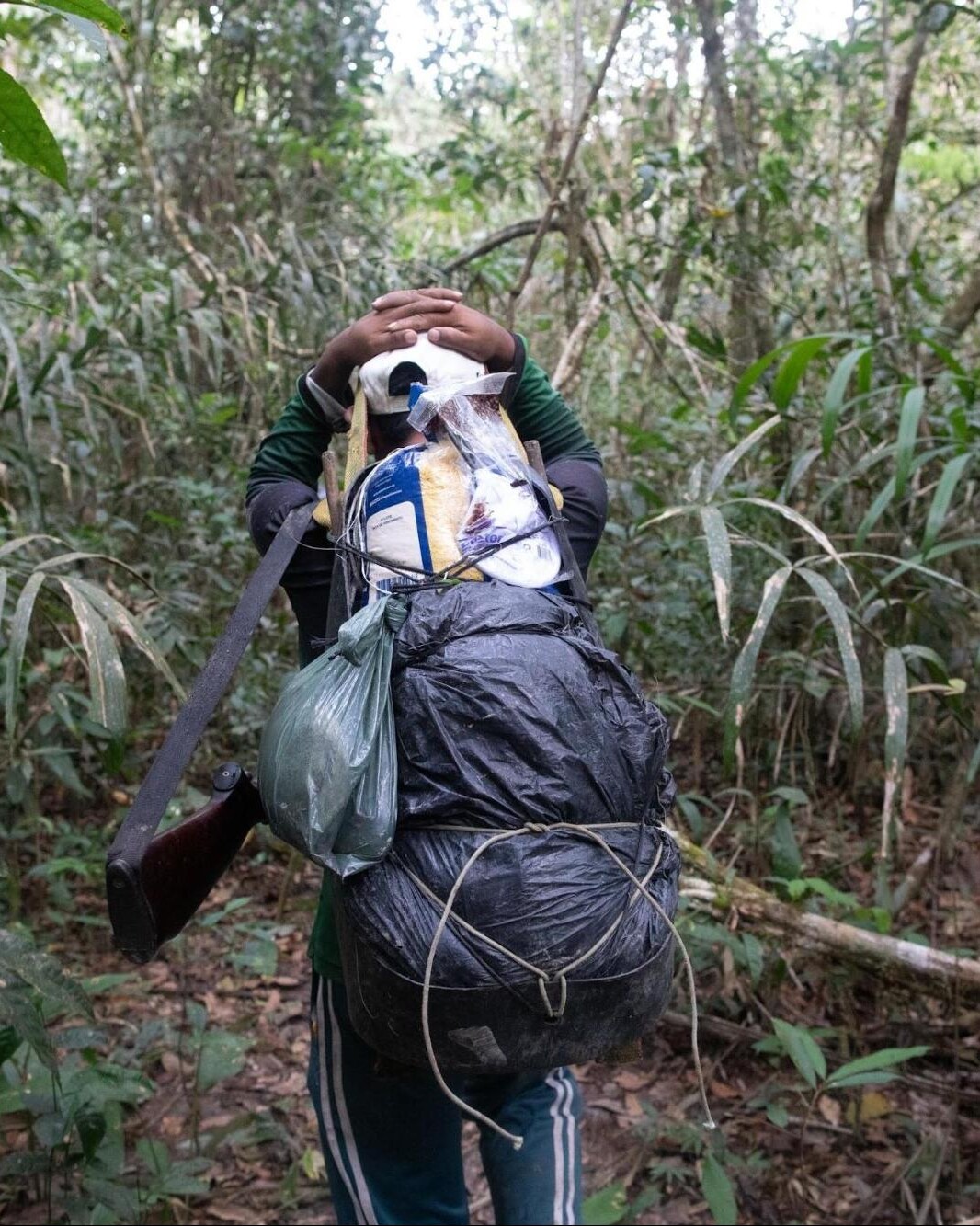
Trekking to supply and rotate guards at the Angme-e guard post
The Porto Seguro expedition in March
2024 Results: Successes and Ongoing Challenges
Through their vigilance and coordinated efforts, the Kayapo resolved several longstanding territorial threats:
- Resolved in 2024: logging access at Kranbari on the north-western border of Menkragnoti TI
- Resolved in 2024: goldmining at the P14 site on near the northeastern border in TI Kayapo
- Resolved (in 2023): logging access at Kororoti on the western border
- Resolved (in 2023): goldmining at Pista Nova and Novo Horizonte locations in the interior of Bau territory
- Resolved (in 2023): goldmining at Cheiro just inside the northern border near the Iriri river
Despite these victories, two goldmining sites remain active and unresolved:
- Unresolved (active): goldmining at Pista Velha in TI Kayapo near the northeastern border
- Unresolved (active): a new goldmining site started in the interior of Bau TI
With renewed coordination and support, we expect to remove these threats in 2025. However, the continued success of the Kayapo People in protecting their territory depends on ongoing resistance, institutional strength, and philanthropic support. As threats persist and new challenges emerge, the Kayapo remain steadfast in their fight to defend their land, culture, and way of life.
Fire and Resilience: The Kayapo Fight to Preserve Their Land
The Amazon is experiencing one of the worst droughts in recorded history. Among those affected are the Kayapo, guardians of one of the largest and most biodiverse tracts of the Amazon rainforest.
A recent article on Mongabay spoke about the drought and its effects on Kayapo land, with the alarming subheading: “Almost 20% of the Kayapó Indigenous Territory has burned in this year’s Amazon drought, the worst ever recorded in Brazil.” Let’s put this very concerning information in the right context.

Did 20% of the Kayapo’s Indigenous Land Burn?
The heading from the Mongabay article implies that one fifth of Kayapo forest has been reduced to ashes. This is very far from the case.
The confusion arises from the name of one of five officially ratified and contiguous indigenous territories of the Kayapo that together form a block of 10.6 million ha. One of these five territories is called the “Kayapo Indigenous Territory” which encompasses 3.28 million ha of the total block. The article was referring to only the Kayapo Indigenous territory; or 3.28 million hectares of the Kayapo’s 10.6 million hectare forest estate. For reference, 10 million hectares is roughly three times the size of Belgium.
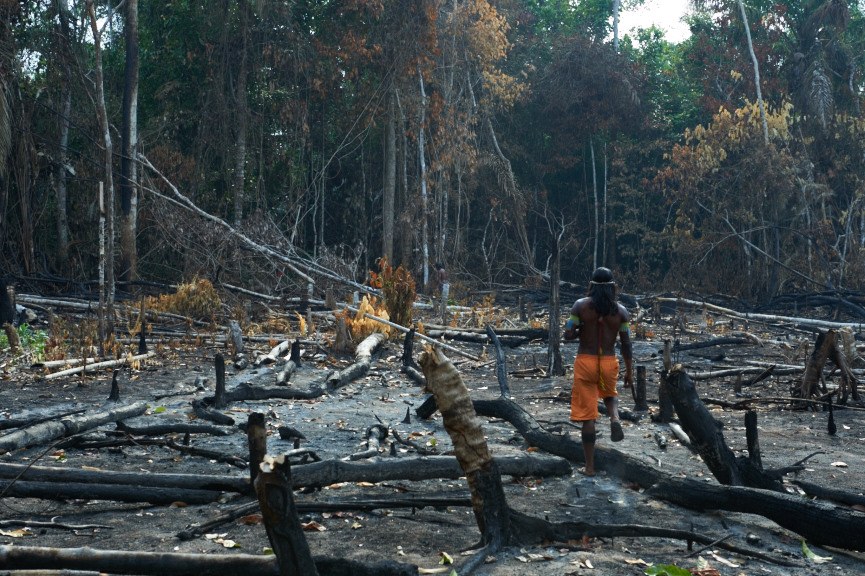
Photo: Martin Schoeller
The Kayapo-NGO alliance is working
The Kayapo-NGO alliance represents more than 9.1 million hectares of the overall 10.6 million hectare Kayapo territorial block. The remaining 1.5 million hectares of Kayapo territory that is located mostly along the eastern border of TI Kayapo is heavily invaded by goldmining and logging and does not form part of the Kayapo-NGO alliance.
The Kayapo living in this eastern band of the TI Kayapo succumbed to goldmining and logging pressure before conservation NGOs arrived on the scene in the 1990’s. The result has been extensive degradation of the forest and pollution of rivers in this area. Kayapo culture has suffered here as well, given their livelihoods and traditional knowledge are tied to the health of natural ecosystems. Most of this year’s fires occurred throughout this eastern band of the TI Kayapo where high intensity logging has left forests flammable. Unlogged primary forest does not burn.
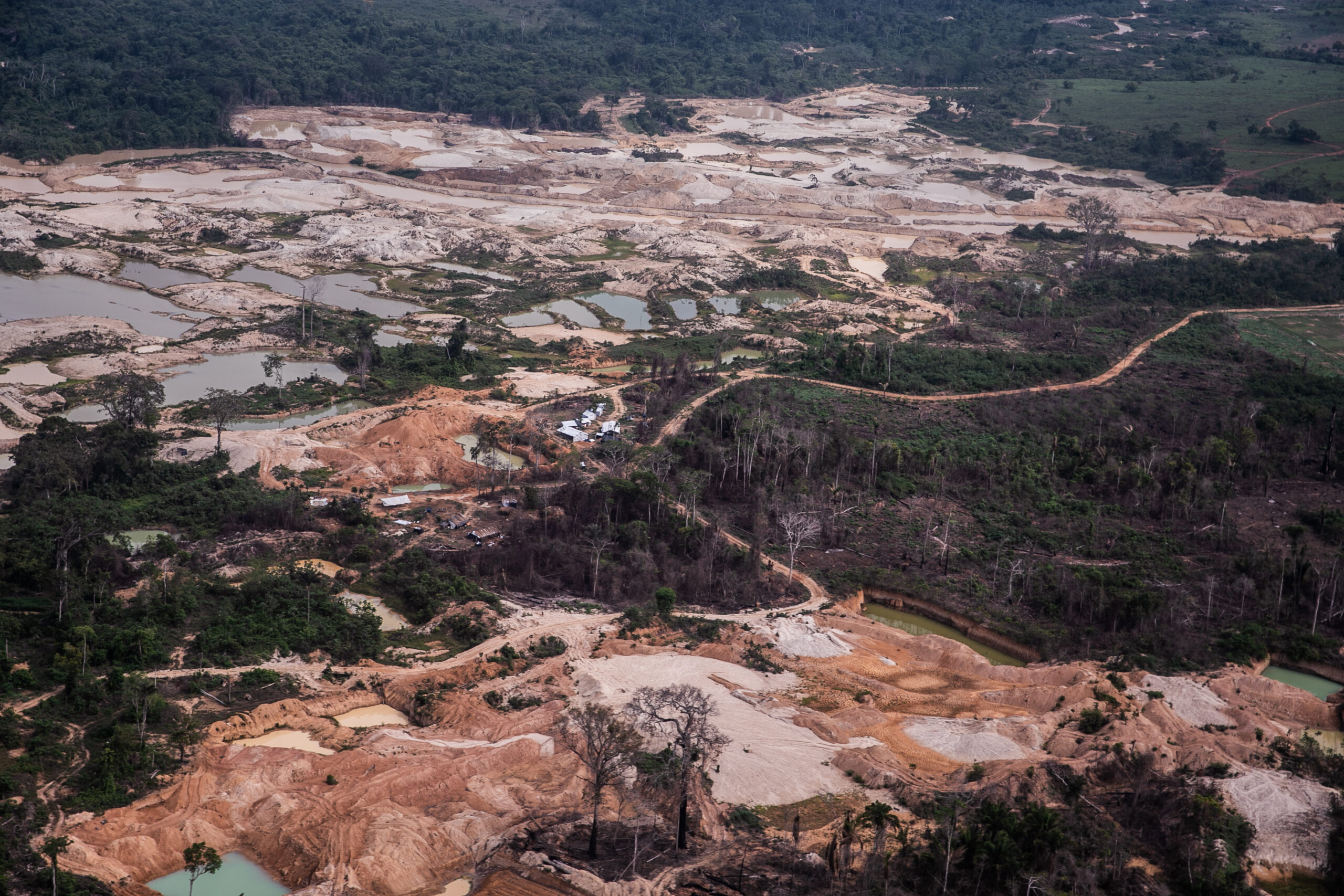
The impact of gold mining in areas of Kayapo Indigenous Territory not a part of the Kayapo-NGO alliance.
The other large source of fire hotspots in Kayapo land this year was on the large patches of savanna covering rocky plateaus of the Brazilian shield where high forest cannot grow. These large savanna patches (cerrado) burn naturally every year.
However, in this brutal summer season there was anomalous burning along the floodplain borders of the Riozinho river, one of the interior rivers in the TI Kayapo. This floodplain edge was able to catch fire because of grassy and scrubby vegetation found in this semi-flooded habitat.
Although the fire in Kayapo territory was worse than normal this year, the bottom line is that over nine million hectares of the NGO-alliance remained largely intact because it is protected by Kayapo guardians and has not been degraded by illegal activity. The Kayapo forest of the allied Kayapo remains continues to demonstrate the resilience of unlogged primary forest and the effectiveness of the Kayapo-NGO alliance.
Kayapo lands of the Kayapo Project alliance are monitored and protected by the territorial surveillance program, which relies on 16 strategically placed border guard posts expeditions by foot and boat to monitor areas not covered by guard posts.


Map 1 on the left shows the 5 officially recognized Kayapo Territories: Bau Indigenous Territory, Kayapo Indigenous Territory, Menkragnoti Indigenous Territory, Capoto/Janina Indigenous Territory, Badjonkore Indigenous Territory
Map 2 on the right shows the forest fires as of September
Did 20% of the Kayapo’s Indigenous Land Burn?
The heading from the Mongabay article implies that one fifth of Kayapo forest has been reduced to ashes. This is very far from the case.
The confusion arises from the name of one of five officially ratified and contiguous indigenous territories of the Kayapo that together form a block of 10.6 million ha. One of these five territories is called the “Kayapo Indigenous Territory” which encompasses 3.28 million ha of the total block. The article was referring to only the Kayapo Indigenous territory; or 3.28 million hectares of the Kayapo’s 10.6 million hectare forest estate. For reference, 10 million hectares is roughly three times the size of Belgium.


Map 1 on the left shows the 5 officially recognized Kayapo Territories: Bau Indigenous Territory, Kayapo Indigenous Territory, Menkragnoti Indigenous Territory, Capoto/Janina Indigenous Territory, Badjonkore Indigenous Territory
Map 2 on the right shows the forest fires as of September

Photo: Martin Schoeller
The Kayapo-NGO alliance is working
The Kayapo-NGO alliance represents more than 9.1 million hectares of the overall 10.6 million hectare Kayapo territorial block. The remaining 1.5 million hectares of Kayapo territory that is located mostly along the eastern border of TI Kayapo is heavily invaded by goldmining and logging and does not form part of the Kayapo-NGO alliance.
The Kayapo living in this eastern band of the TI Kayapo succumbed to goldmining and logging pressure before conservation NGOs arrived on the scene in the 1990’s. The result has been extensive degradation of the forest and pollution of rivers in this area. Kayapo culture has suffered here as well, given their livelihoods and traditional knowledge are tied to the health of natural ecosystems. Most of this year’s fires occurred throughout this eastern band of the TI Kayapo where high intensity logging has left forests flammable. Unlogged primary forest does not burn.

The impact of gold mining in areas of Kayapo Indigenous Territory not a part of the Kayapo-NGO alliance.
The other large source of fire hotspots in Kayapo land this year was on the large patches of savanna covering rocky plateaus of the Brazilian shield where high forest cannot grow. These large savanna patches (cerrado) burn naturally every year.
However, in this brutal summer season there was anomalous burning along the floodplain borders of the Riozinho river, one of the interior rivers in the TI Kayapo. This floodplain edge was able to catch fire because of grassy and scrubby vegetation found in this semi-flooded habitat.
Although the fire in Kayapo territory was worse than normal this year, the bottom line is that over nine million hectares of the NGO-alliance remained largely intact because it is protected by Kayapo guardians and has not been degraded by illegal activity. The Kayapo forest of the allied Kayapo remains continues to demonstrate the resilience of unlogged primary forest and the effectiveness of the Kayapo-NGO alliance.
Kayapo lands of the Kayapo Project alliance are monitored and protected by the territorial surveillance program, which relies on 16 strategically placed border guard posts expeditions by foot and boat to monitor areas not covered by guard posts.
What This Means for the Future
These fires cannot be downplayed; they are a strong reminder that without conservation efforts, the rainforest will rapidly and irreversibly be destroyed. However, it’s important to note that most of the other fires occurred along the eastern band of goldmining and logging-impacted Kayapo land, where the forest has been badly degraded by these illegal activities. This distinction is critical, as it highlights the effectiveness of the Kayapo’s efforts to protect their rainforests and shows that there is still hope to protect some of the last pockets of true wilderness left on Earth.
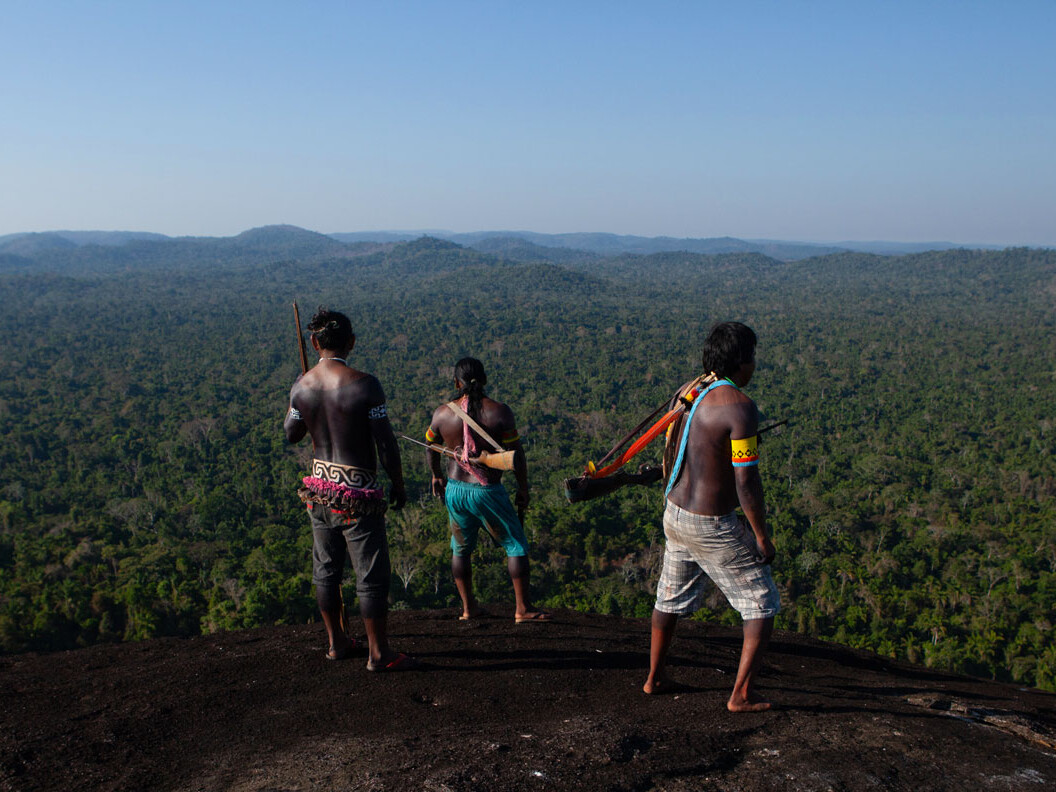
Kayapo’s land continues to thrive under the stewardship of the Kayapo. Photo: Simone Giovine

The Kakakuben guard post on the western border
As climate change drives more extreme weather patterns—from droughts to devastating fires—it becomes even more crucial to protect the rainforest’s carbon stores and biodiversity. Indigenous guardians like the Kayapo lead this fight by safeguarding some of the largest carbon reserves on Earth, demonstrating that empowering indigenous people is one of the most effective ways to combat both local and global environmental crises.
The best news is that we know what works: empowering the Kayapo to protect their land has been one of the most successful conservation stories on Earth.
Meet the Kayapo forest team
Equipe da Bà: Alliance Between Technology, Knowledge, and Ancestral Wisdom to Conserve the Mēbêngôkre Forest
The Kamoktidjam village, located on the banks of the Xingu River in the Kayapó Indigenous Territory, was the center of the 2024 season of the “Equipe da Bà/Ba Kam Mē Bà Djwynh” project, a program that combines the use of audiovisual technology and traditional knowledge to strengthen environmental conservation. From July 25 to August 22, 2024, more than 40 Mẽbêngôkre from 13 villages actively participated in a journey that combined walks in the forest with learning about audiovisual monitoring technologies, such as the use of trail cameras, nature photography, and drones, along with the ancestral knowledge passed down by the elders (mebengêt).
The initiative promotes income generation for the community through an Intercultural Ecotourism initiative developed this year simultaneously at Xingu Lodge, managed by partners from @xingulodge, with 10 visitors from different countries as part of the Intercultural Ecotourism Program. These visitors included international education instructors, nature photographers specializing in birdwatching, and biology researchers. The program stands out as a conservation model that recognizes the connection between Indigenous knowledge and science, promoting a significant socio-environmental impact.

Equipe da Bà: Alliance Between Technology, Knowledge, and Ancestral Wisdom to Conserve the Mēbêngôkre Forest
The Kamoktidjam village, located on the banks of the Xingu River in the Kayapó Indigenous Territory, was the center of the 2024 season of the “Equipe da Bà/Ba Kam Mē Bà Djwynh” project, a program that combines the use of audiovisual technology and traditional knowledge to strengthen environmental conservation. From July 25 to August 22, 2024, more than 40 Mẽbêngôkre from 13 villages actively participated in a journey that combined walks in the forest with learning about audiovisual monitoring technologies, such as the use of trail cameras, nature photography, and drones, along with the ancestral knowledge passed down by the elders (mebengêt).
The initiative promotes income generation for the community through an Intercultural Ecotourism initiative developed this year simultaneously at Xingu Lodge, managed by partners from @xingulodge, with 10 visitors from different countries as part of the Intercultural Ecotourism Program. These visitors included international education instructors, nature photographers specializing in birdwatching, and biology researchers. The program stands out as a conservation model that recognizes the connection between Indigenous knowledge and science, promoting a significant socio-environmental impact.

A Conservation Project and a Journey of Knowledge
The program is a joint initiative of the community from the thirteen villages of Xingu in the Kayapó Indigenous Territory, the Kayapó Project, the ICFC – International Conservation Fund of Canada, and the Associação Floresta Protegida, under the coordination of conservation scientist Natalie Knowles. The 2024 season of the “Equipe da Bà” project was carefully structured to provide a deep immersion in the knowledge about the biodiversity of the Mẽbêngôkre territory, around the Kamoktidjam village. Over 40 members from the Pykãrãrakre, Kawatire, Kakore, Kruwanhongo, Kawatire, Kokotkrere, Kamure, Kri-nhô-ere, Pokrô, Madjyre, Kokrajmôro, and Kamoktidjam communities, Xingu villages, participated in the activities. Through activities involving young people and elders in walks through the forest, the initiative promoted a rich learning journey, reinforcing the commitment to conserving the Amazon and protecting its natural resources.
Morning Trails, Afternoon Tech
The activities were divided into two main axes: morning walks in the forest, where participants followed trails, identified species, and installed monitoring trail cameras, and afternoon workshops focused on handling technologies and making traditional crafts. At night, activities included reviewing captured images, Mẽbêngôkre film sessions, and stories told by the elders.
These activities provided technical learning to the youth, strengthening the connection between different generations. Under the guidance of the mebengêt (the elders), the youth learned about medicinal plants, remedies, animal tracks, and places of cultural importance while using technologies to document and monitor biodiversity. “This is my first time working here. Working here is good for young people because those who work on the project can learn to use technology, like drones. That’s why each village has a mebengêt, who can teach the names of trees, remedies, and things from the forest. The young can accompany the mebengêt in the forest, and they will not forget. Mejdjwyj (a slang term referring to something truly good, beautiful, and right).” This combination of knowledge is crucial for preserving the forest, which remains one of the last refuges for numerous species of fauna and flora, many of them endemic and endangered.

One of the highlights of the season was the opportunity offered to the young Mẽbêngôkre to act as guides for ecotourists who visited Xingu Lodge as part of the Intercultural Ecotourism program, another partnership of the Kayapó Project with the Associação Floresta Protegida. This experience prepared the participants for future tourism initiatives, providing valuable insights on how to enhance ecotourism projects in the region. By leading visitors through the forest, the youth benefited from a rich exchange of knowledge. One ecotourist, a professional photographer, offered a workshop on pinhole cameras, while a biologist shared detailed information about animal trails. This interaction strengthened the bridge between traditional knowledge and conservation technologies.
The group dynamics, composed of participants from different villages, also promoted solidarity and collaboration among communities, strengthening cultural and social ties. By using new technologies, such as trail cameras, the youth had the opportunity to learn and recall stories and knowledge passed down by the mebengêt (elders), ensuring that ancestral wisdom continues to be preserved and valued.
Sophia Polson, a 2024 ecotourist, shares her drone operating experience with the Forest Team.
Advanced Technology for Forest Conservation
The Indigenous Lands of the Mēbêngôkre people, spanning over 10.6 million hectares, constitute one of the largest contiguous blocks of tropical forest in the Eastern Amazon. Located in the so-called “Arc of Deforestation,” specifically in the Xingu socio-biodiversity corridor, a critical region in the Amazon, this area faces constant deforestation pressures due to agricultural expansion, illegal mining, and logging. However, thanks to the presence of the Mēbêngôkre and other Indigenous peoples and traditional populations in the basin, and the territorial control exercised by these communities, this area remains largely intact, playing a key role in climate regulation and maintaining biodiversity, including transition biomes between the savannah and Amazon rainforest, as well as an important variety of endemic species.
The “Equipe da Bà” project emerges as a response to these threats, combining technology and traditional knowledge to protect the forest. The use of trail cameras and drones, guided by the wisdom of the elders, allows for effective and targeted surveillance that not only protects the territory but also generates invaluable scientific data. This information is shared with researchers and conservationists, contributing to global science and strengthening conservation strategies.
The project demonstrates that the union between technology and tradition can be a powerful force in the struggle for environmental and cultural preservation. By empowering the new Mẽbêngôkre generations to protect their land, the project not only ensures the continuity of ancestral knowledge but also strengthens the cultural identity of the involved communities. The ecological importance of this 10.6-million-hectare block of land goes beyond species preservation; located in the Xingu basin, it plays a crucial role in climate regulation and maintaining the water cycles of the Amazon.
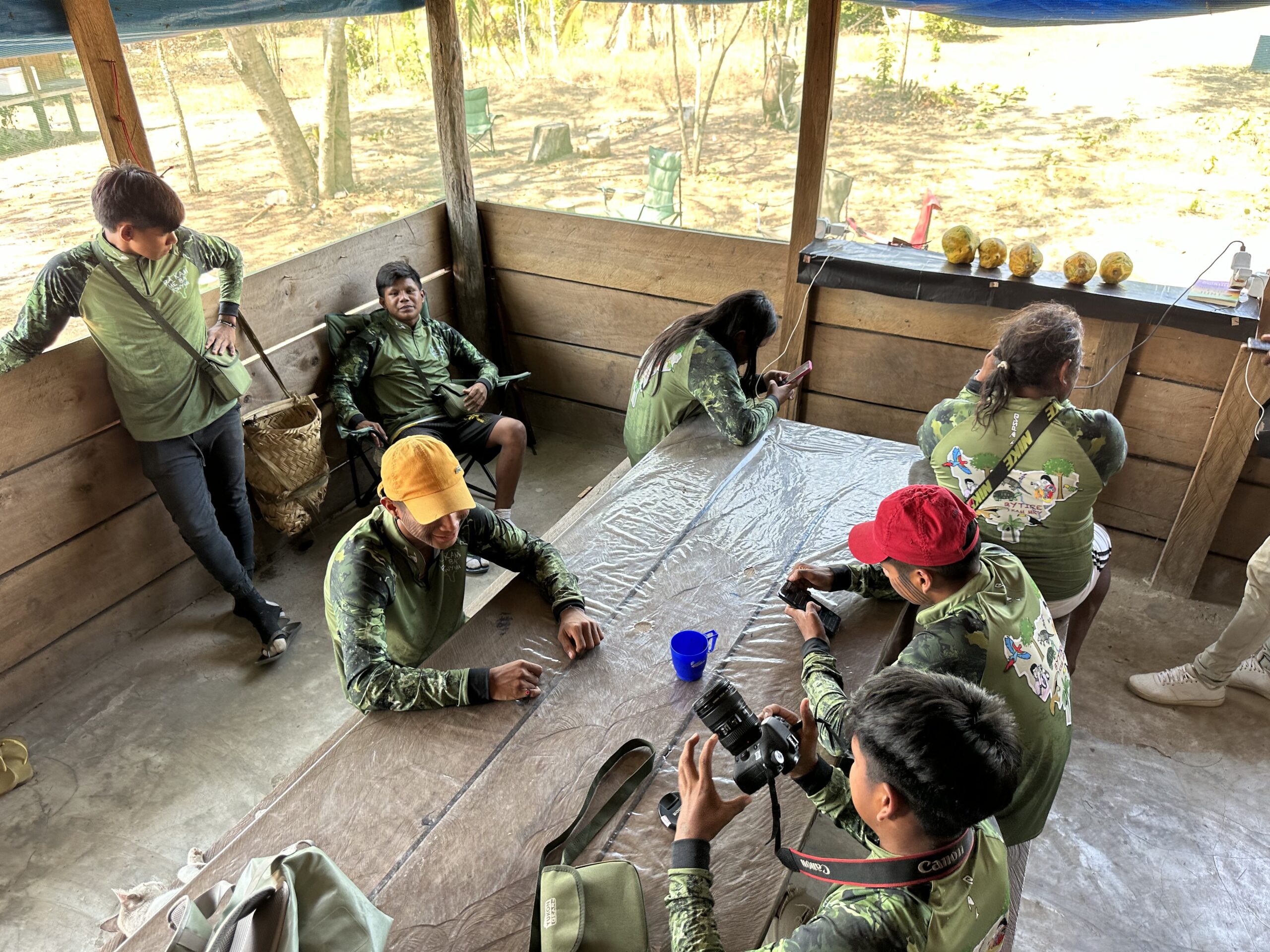
Building a structured curriculum for the “Equipe da Bà” project is essential to ensure the continuity and effectiveness of this initiative. Many Mẽbêngôkre have valuable ideas on how the program can be used to preserve and transmit forest knowledge. By including these voices and experiences in creating a curriculum, the project respects the community’s priorities and values while ensuring that the knowledge considered most important by the Mẽbêngôkre themselves is perpetuated.
The success of the “Equipe da Bà” project reaffirms that tradition and innovation are not opposing forces but rather complementary, and that cultural resistance remains a vital force in the fight for environmental conservation and the survival and dignity of Indigenous peoples. By strengthening these practices, the “Equipe da Bà” has the potential to become a model for other Indigenous communities facing similar challenges, promoting a future where culture, knowledge, and nature can thrive together.
A Conservation Project and a Journey of Knowledge
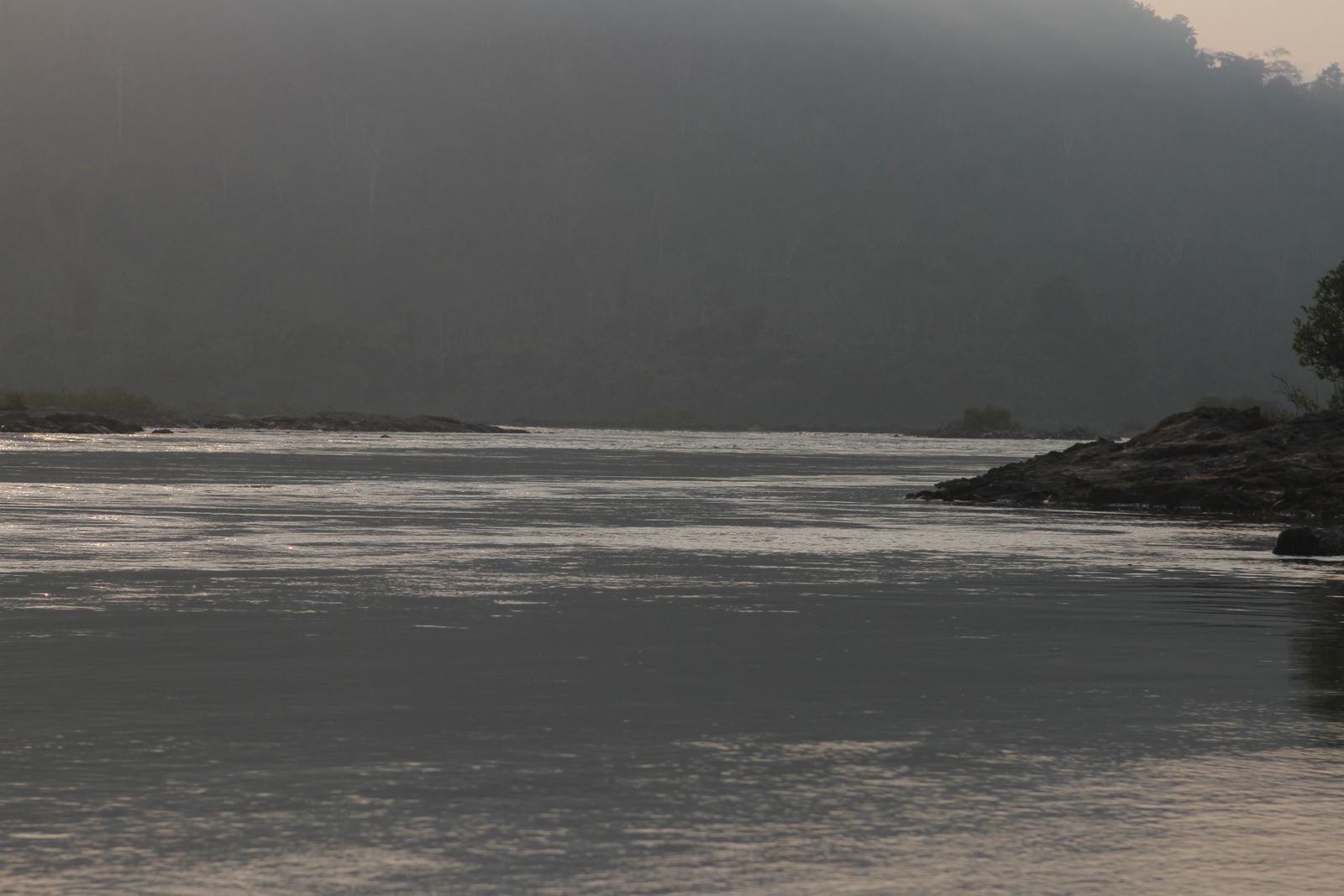
The program is a joint initiative of the community from the thirteen villages of Xingu in the Kayapó Indigenous Territory, the Kayapó Project, the ICFC – International Conservation Fund of Canada, and the Associação Floresta Protegida, under the coordination of conservation scientist Natalie Knowles. The 2024 season of the “Equipe da Bà” project was carefully structured to provide a deep immersion in the knowledge about the biodiversity of the Mẽbêngôkre territory, around the Kamoktidjam village. Over 40 members from the Pykãrãrakre, Kawatire, Kakore, Kruwanhongo, Kawatire, Kokotkrere, Kamure, Kri-nhô-ere, Pokrô, Madjyre, Kokrajmôro, and Kamoktidjam communities, Xingu villages, participated in the activities. Through activities involving young people and elders in walks through the forest, the initiative promoted a rich learning journey, reinforcing the commitment to conserving the Amazon and protecting its natural resources.
Stay Connected to the Amazon
Sign Up for Powerful Kayapo Field Reports
Morning Trails, Afternoon Tech
The activities were divided into two main axes: morning walks in the forest, where participants followed trails, identified species, and installed monitoring trail cameras, and afternoon workshops focused on handling technologies and making traditional crafts. At night, activities included reviewing captured images, Mẽbêngôkre film sessions, and stories told by the elders.
These activities provided technical learning to the youth, strengthening the connection between different generations. Under the guidance of the mebengêt (the elders), the youth learned about medicinal plants, remedies, animal tracks, and places of cultural importance while using technologies to document and monitor biodiversity. “This is my first time working here. Working here is good for young people because those who work on the project can learn to use technology, like drones. That’s why each village has a mebengêt, who can teach the names of trees, remedies, and things from the forest. The young can accompany the mebengêt in the forest, and they will not forget. Mejdjwyj (a slang term referring to something truly good, beautiful, and right).” This combination of knowledge is crucial for preserving the forest, which remains one of the last refuges for numerous species of fauna and flora, many of them endemic and endangered.


One of the highlights of the season was the opportunity offered to the young Mẽbêngôkre to act as guides for ecotourists who visited Xingu Lodge as part of the Intercultural Ecotourism program, another partnership of the Kayapó Project with the Associação Floresta Protegida. This experience prepared the participants for future tourism initiatives, providing valuable insights on how to enhance ecotourism projects in the region. By leading visitors through the forest, the youth benefited from a rich exchange of knowledge. One ecotourist, a professional photographer, offered a workshop on pinhole cameras, while a biologist shared detailed information about animal trails. This interaction strengthened the bridge between traditional knowledge and conservation technologies.
The group dynamics, composed of participants from different villages, also promoted solidarity and collaboration among communities, strengthening cultural and social ties. By using new technologies, such as trail cameras, the youth had the opportunity to learn and recall stories and knowledge passed down by the mebengêt (elders), ensuring that ancestral wisdom continues to be preserved and valued.
Advanced Technology for Forest Conservation
The Indigenous Lands of the Mēbêngôkre people, spanning over 10.6 million hectares, constitute one of the largest contiguous blocks of tropical forest in the Eastern Amazon. Located in the so-called “Arc of Deforestation,” specifically in the Xingu socio-biodiversity corridor, a critical region in the Amazon, this area faces constant deforestation pressures due to agricultural expansion, illegal mining, and logging. However, thanks to the presence of the Mēbêngôkre and other Indigenous peoples and traditional populations in the basin, and the territorial control exercised by these communities, this area remains largely intact, playing a key role in climate regulation and maintaining biodiversity, including transition biomes between the savannah and Amazon rainforest, as well as an important variety of endemic species.
The “Equipe da Bà” project emerges as a response to these threats, combining technology and traditional knowledge to protect the forest. The use of trail cameras and drones, guided by the wisdom of the elders, allows for effective and targeted surveillance that not only protects the territory but also generates invaluable scientific data. This information is shared with researchers and conservationists, contributing to global science and strengthening conservation strategies.
The project demonstrates that the union between technology and tradition can be a powerful force in the struggle for environmental and cultural preservation. By empowering the new Mẽbêngôkre generations to protect their land, the project not only ensures the continuity of ancestral knowledge but also strengthens the cultural identity of the involved communities. The ecological importance of this 10.6-million-hectare block of land goes beyond species preservation; located in the Xingu basin, it plays a crucial role in climate regulation and maintaining the water cycles of the Amazon.


Building a structured curriculum for the “Equipe da Bà” project is essential to ensure the continuity and effectiveness of this initiative. Many Mẽbêngôkre have valuable ideas on how the program can be used to preserve and transmit forest knowledge. By including these voices and experiences in creating a curriculum, the project respects the community’s priorities and values while ensuring that the knowledge considered most important by the Mẽbêngôkre themselves is perpetuated.
The success of the “Equipe da Bà” project reaffirms that tradition and innovation are not opposing forces but rather complementary, and that cultural resistance remains a vital force in the fight for environmental conservation and the survival and dignity of Indigenous peoples. By strengthening these practices, the “Equipe da Bà” has the potential to become a model for other Indigenous communities facing similar challenges, promoting a future where culture, knowledge, and nature can thrive together.
Scott's Diary of the Kayapo Field Course 2024
Scott embarked on an unforgettable adventure during the 2024 Kayapo Field Course, immersing himself in the heart of the Amazon rainforest. Along the way, he captured breathtaking photographs and penned a diary filled with vivid stories and insights from his journey.
"I am returning from the Kayapo Amazon with photos and stories, as well as new colleagues, and the hope that we can make a difference."
Day 1 – June 28
Depart Boston via Jet Blue to Fort Lauderdale at 3:50PM. Leave Fort Lauderdale for Belem, Brazil at 10:00PM and arrive in Belem the next morning at 4:55AM.
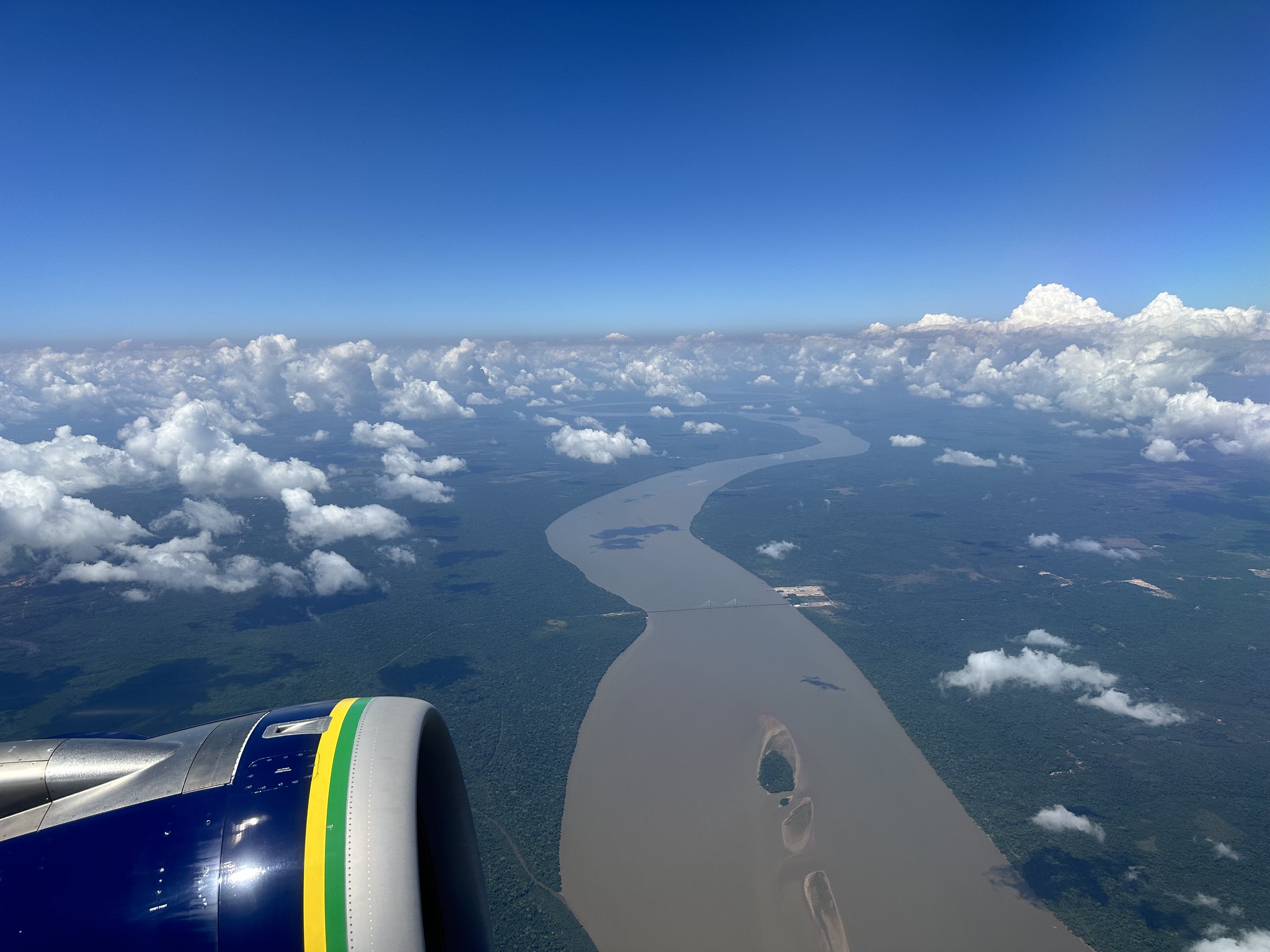
Day 3 – June 30
Evening walks along the Marabá waterfront and eating dinner out. The Marabá waterfront called “Orla de Marabá”, seawall on the river that extends at least a mile or two, with many places for locals to sit, eat at outdoor tables, in restaurants, etc. Lots of happy people with great sunsets to view.
Day 4 – June 31
Our first day of Field Course activities. Morning visit to the Casa da Cultura Museum. Interesting natural history, geology, and Indigenous exhibits. Also, some odd collections such as old vinyl records and movie theatre posters. We also visited the orchid garden (150 varieties), the archaeology center, and the music instruction school. I loved seeing the music school with all the teens learning all manner of instruments from drums, strings, brass, and pianos. We were given very good tours by staff. The lunch place was a high-quality churrasco place with carved meats, and a large buffet where they weigh your plate. It was very good. In the eve we visited a great exhibit by new artists about the Amazon and its people.
Day 5 – August 1
A day of travel by modern bus with AC and Wifi from the central bus station in Marabá to Tucumã. We all departed in the morning for the 8-hour trip, with a lunch stop at a bus-stop churrascaria mid-way. The ride was through countless miles of cattle country and nearly no patches of rainforest. Our field course group are great fun and have fascinating backgrounds and experiences. Sophia from Liverpool is a very well-organized photographer and will be an asset in that category.
Day 6 – August 2
This morning we visited the office of the Associacao Floresta Protegida (AFP) just down the street from our hotel. We had a very good PowerPoint presentation by Matheus Costa about the Kayapo work and things like the Brazil nut business (PI’Y brand). We bought A LOT of Kayapo bracelets, paintings, etc. After visiting AFP, we visited the offices of and had lunch with leadership of Pykore, another Kaypao NGO. After lunch we had a trip outside of town to see a waterfall. This was a spontaneous adventure, and it was great. We traveled by bus/van on narrow dirt trail to a park of some kind, first stopping at a cacao farm. We drove the van as far as possible on the rough road/trail and then walked the rest of the way about ¼ mile or so to the river. The waterfalls were perfect for cooling our feet and other locals were swimming there. I saw and photographed Black-fronted Nunbirds and other species. This evening Barb Z joined us we had dinner next door to the hotel at Old West.
Day 7 – August 3
The big day…after a 2-hour private bus to Sao Felix da Xingu, we arrive on the banks of the Xingu River for our boat travel upstream to the Lodge. At the 4 boats we noticed there are dozens of boats heading out with recreational fishermen for a big fish tournament. All men, wearing matching shirts plastered with advertising, as if
they are representing countries in the Olympics. All racing upstream to the primo spots to catch Tucanare (peacock bass) and whatever else they are after. For the first 3
hours the riverine habitat was severely cleared and fragmented. It hasn’t rained much in the past couple of months, so there are many large, exposed orange sandbars. These sandbars are critically important to nesting terns, plovers, and skimmers, as well
as many species of turtles.
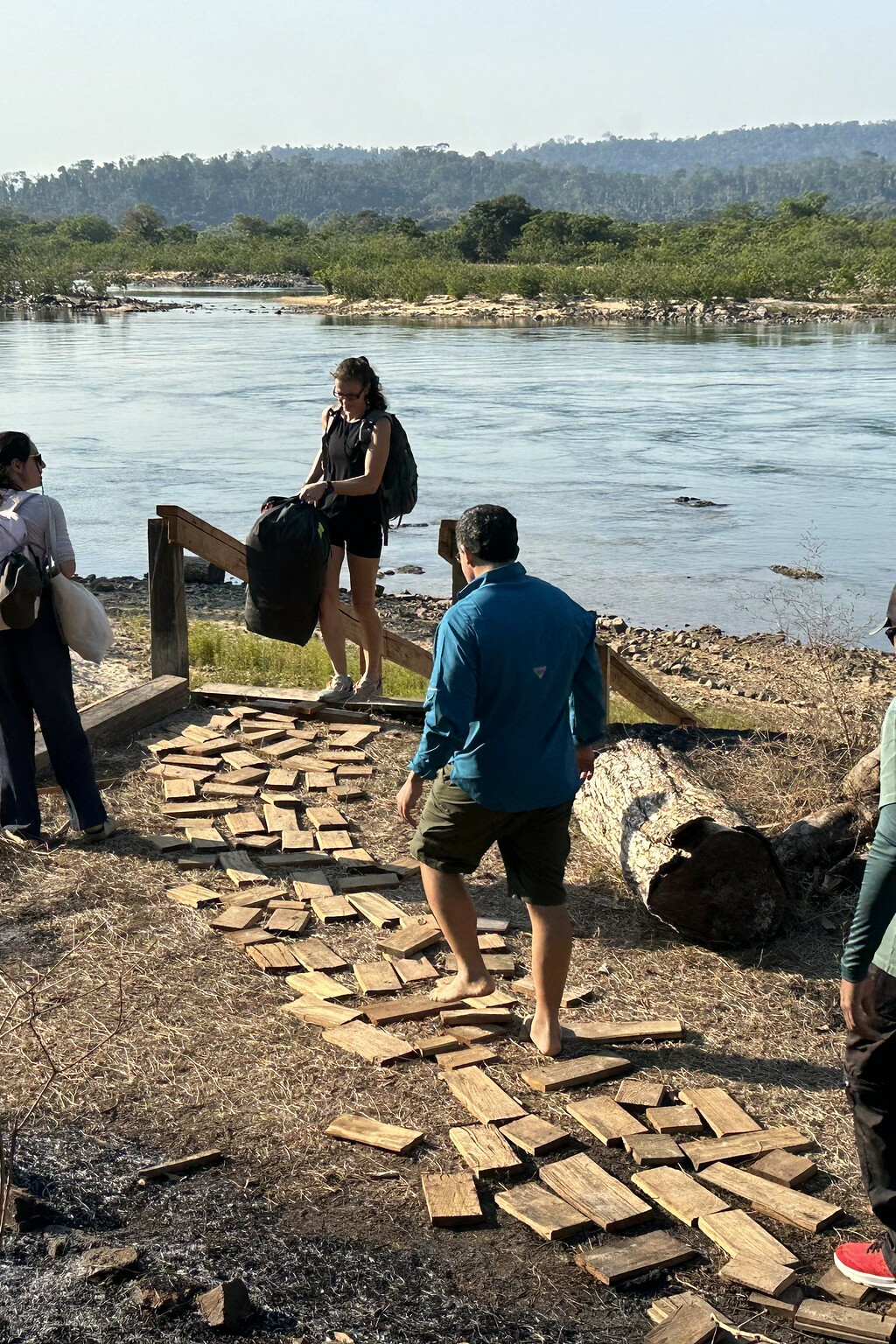
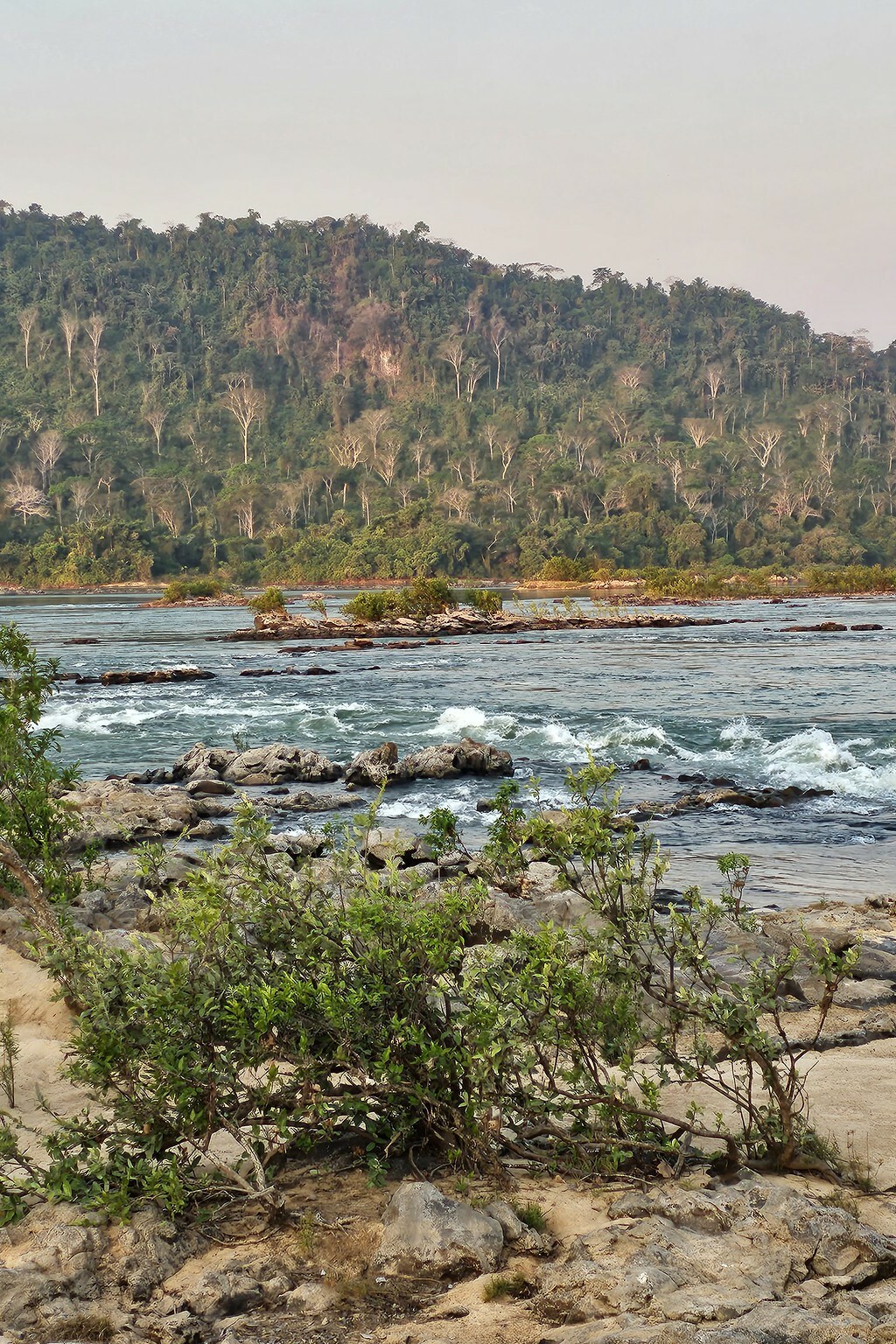
At the halfway point we checked into the Kayapo territory guard station. There are
some simple buildings, solar panels, a TV (to watch documentary movies and soccer matches). I got some photos of the red-capped cardinals, a very showy bird. After a snack of dry sausage and cream cracker we piled back into the boats and continued upstream. From that point upstream there was no more damage to the riverine
rainforests. Bird numbers increased too. About an hour in we began to encounter more and more rapids and low waterfalls. The barqueros (boat drivers) are experts at
missing rocks. The further we went the more impressive the rapids and surrounding wilderness. We arrived at the lodge about 6PM.
The Xingu Lodge
The lodge was built for recreational fishing tourism with Untamed Angling. It is a very attractive, simple wood structure with 4 large sleeping quarters each with 3 single beds, a large bathroom area with shower, sink, toilet and storage shelves. The bedroom area has large open walls overlooking the river, which is nice for sunrise as well as late afternoon light. The big view includes all kinds of birds, such as flocks of parrots and macaws.

We all got to meet Nat Knowles, who is from Canada and has been running the field work with the Kayapo for 5 years. She does know some Kayapo and is very engaged in all that goes on there. After our dinner we had a our “meet and greet” meeting with that Kayapo, who came to the lodge’s big room. This kind of meeting is typical with Indigenous communities and everyone in the community can participate to hear each of us introduce ourselves, followed by the Kayapo that are present doing the same. In general, the Kayapo are shy, particularly the teens. But they are here to learn from us, tech cameras, biological knowledge, and once they get started, they say something about themselves, name, village, the work they do. For about 25 of us this takes a couple of hours to do. It is really a great way to get acquainted and build the beginnings of trust.
Day 8 – August 4
Here at the lodge, we have the cook, Suely. She is Brazilian and not Indigenous. She makes significant, an overly sufficient number of home-cooked foods with beef or chicken or fish, with rice, beans, pasta, potatoes, squash, garden salads, home-made breads, and deserts. To drink we have filtered water, guayaba juice, Tang, and coffee (with or without sugar and hot milk). Morning meals are simple with just homemade donut holes, bread, and a variety of fruit (watermelon, bananas, pineapple.). This morning was dedicated to having our bodies painted by the Kayapo ladies. About two or three women had small bowls of liquid charcoal that they made from genipap fruit, which applied with stiff reeds. They are amazingly precise applying the black “paint” in traditional fish scale or tortoise shell patterns.



Day 9 – August 5
Today we started with a boat trip upstream to large sandbars where we hoped to find animal tacks and turtle nests. We found a turtle nest, which a Kayapo woman dug up to show us the eggs (and kept to eat them later). Juca talked to us about the turtles and nearby jaguar tracks. I found a Large-billed Tern nest, and other species such as Green Ibis, Pied Lapwing, Southern Lapwing, Dusky-billed Parrotlets. Next, we went downstream by boat to Pykakrankre, a small village that was bigger than the one by our lodge. There is an airstrip there as well as a one-person pharmacy, where the pharmacist comes for about 6 weeks at a time. The airstrip can also used to fly fishermen into the lodge.
Day 10 – August 6
Each morning and evening it is likely that tour participant, Felton Jenkins has tried his luck fishing along the river by the lodge. He wasn’t getting much, but I suggested he use my jig head with a rubber fish and that helped. He caught a large piranha near where we swim! The Kayapo use hand lines, and it is very impressive how far they can throw their lures or bait that way. They also catch a lot of fish such as Vampire fish, Piranhas, Peacock Bass, Pacu, and many others. This morning, we continued to deploy camera traps and I did some nature photography of birds, butterflies, plants. Got a nice shot of a White Hawk over the lodge. In the evening there was a major hatch of “May flies” that were so think they swarmed by the thousands near lights and on the screens. I wondered if they were gobbled up by the local fish species. There are hundreds of freetail bats living in the walls of the lodge and they were out in force.

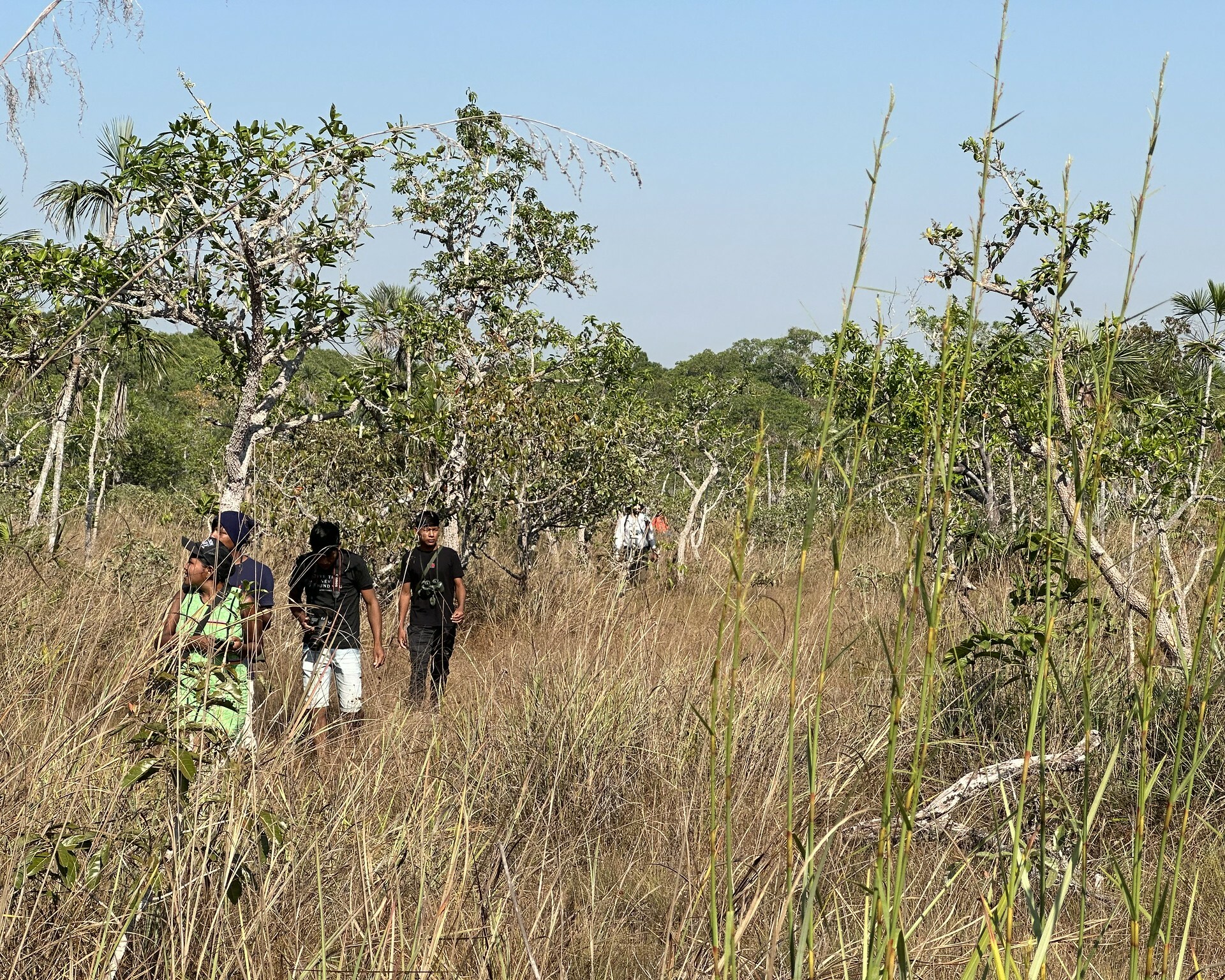
Day 11 – August 7
This morning we went on a longish hike to the cerrado led by Takaknhoti. First, we took the boat about 20 minutes upstream, parked in a quite tributary with still water. We learned that this area had a lot of electric eels and I saw one briefly swim into some roots on the bank. The Kayapo take the eels seriously as they can pack quite a shock if you are in the water near one. They do eat them if they can get them. It was interesting to hike out of the forest onto the open grassy, dry forest cerrado. The Kayapo go there for specific plants that are used for medicines or other utilitarian purposes.
Day 12 – August 8
Each morning I wake up at 5:00 to the gorgeous sunrise on the river and the loud snoring roar of Howler Monkeys. Then the bird chorus begins, and I turn on Merlin app to see what it says. For starters, Merlin says it knows fewer than 38% of the birds in this region. This time of day there are great flights of Chestnut- fronted Macaws and random bunches of other species such as the Red and Green Macaw, Blue and Yellow Macaw and the larger Hyacinth Macaw. The latter is almost always in pairs.
Barb Z arrived at dinner time and joined our merry bunch. Natalia was determined to make a pinhole camera from a large cardboard box. It took her a while to find what she needed, but she knew what she was doing. (a day or so later she scrounged up a magnifying glass and then the camera looked great. Barb brought a box of the new Kayapo long-sleeved camo guardian shirts, which were a big hit and given to all the Kayapo). I notice I was coming down with some kind of a cold.
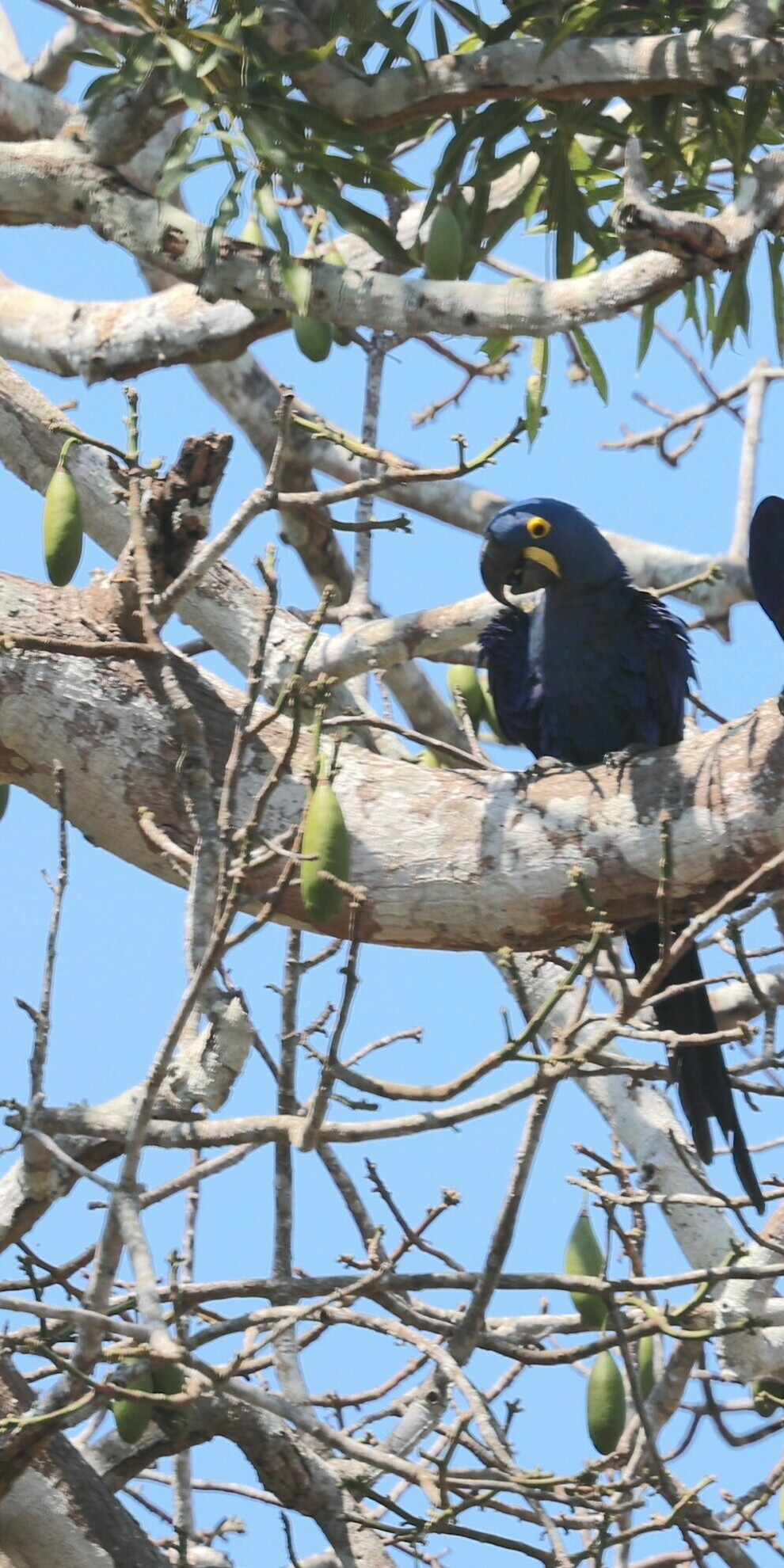


Day 13– August 9
My cold continued and spent some time in bed. I had to take it easier this morning with my cold. The gang also took things easy with Natalia leading a drawing class with a group of Kayapo. They all drew trees with lots of individual leaves. This morning the gang left to go camping overnight, but Natalia stayed behind with me.
Natalia made the Brazilian desert known as brigadeiro (basically condensed milk and cocoa cooked down like a soft fudge.). It was very tasty. I walked about taking nature photos.
Day 14 – August 10
This morning I broke out my stash of NH maple syrup and I made apple pancakes for Natalia and Suely. They turned out very well. Regardless I spent some more time in bed and did some bird photography around the village and lodge area. The campers returned in time for lunch. The camping trip went well, and they cooked fish on the fire. On the way back they collected some of the camera track memory cards that we deployed a few days earlier. We looked at the camera trap images and movies about the Kayapo that night. Lots of Kayapo came for this and the popcorn. We watched the films on my bedsheet. As it turned out we just watched the documentary movies and saved the memory sticks for tomorrow.

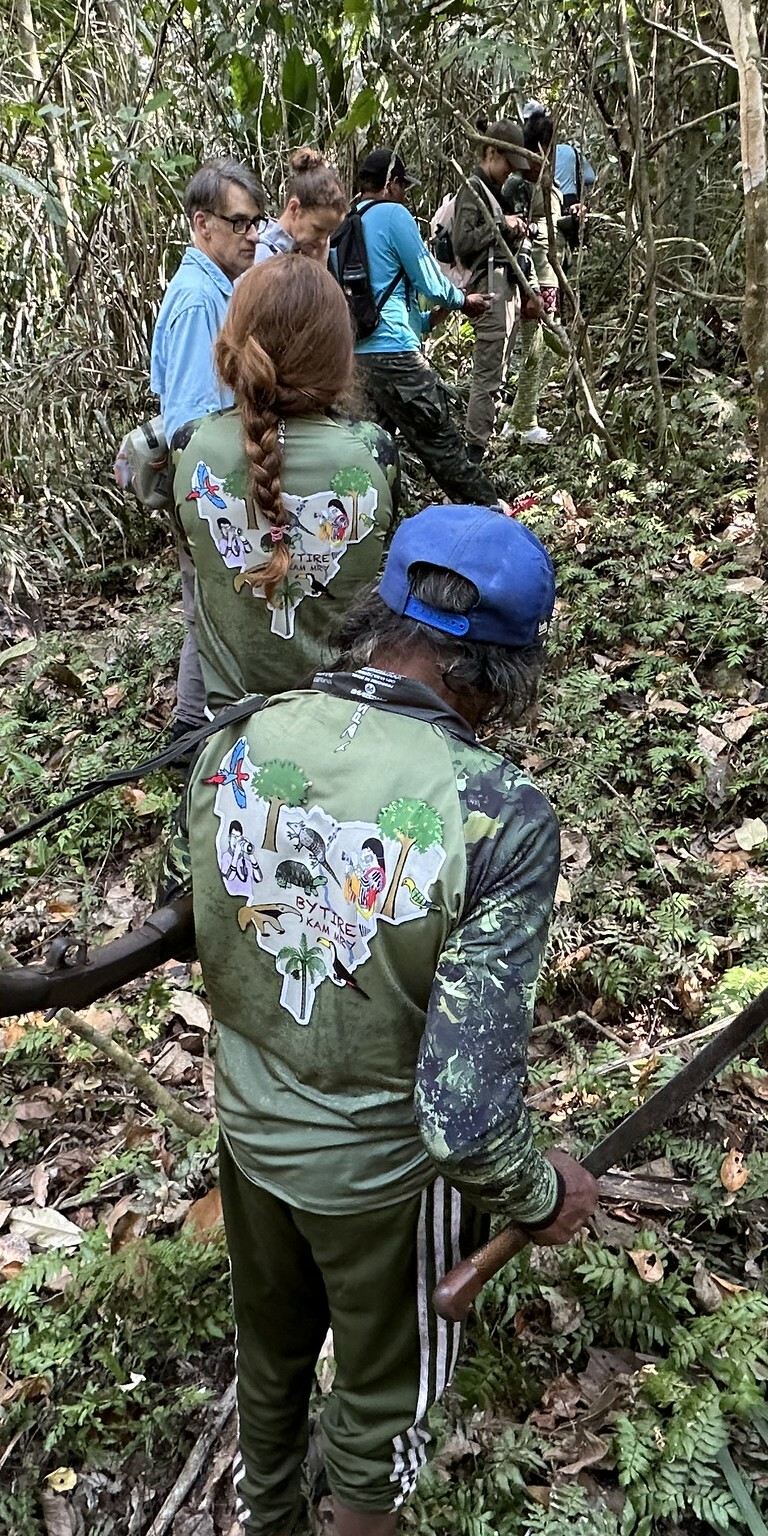
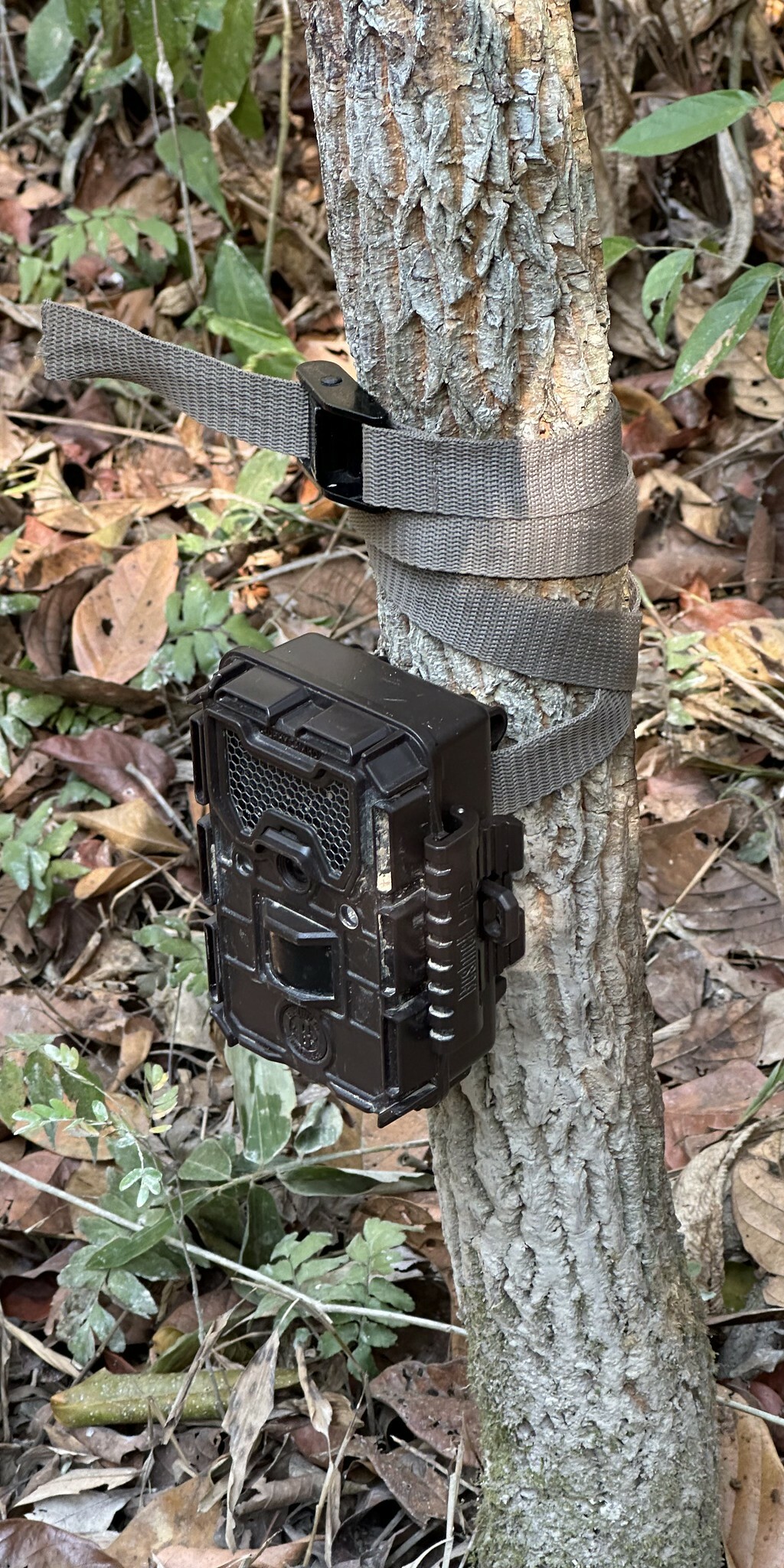
Day 15 – August 11
This morning Takaknhoti lead us with many young Kayapo to set camera traps and find Spider Monkeys. All went as planned. We went SW from the lodge straight back into the forest. All the Kayapo wore their new camo shirts and carried cameras. We set camera traps in locations where there was still a bit of mud despite the dry season. These spots attract many mammals, birds, butterflies. We also learned about Brazil nuts, and they easily opened the cannonball-sized hard fruits and extracted and peeled the nuts with their big machetes. The Brazil nut trees are common here and are the biggest straightest trees around.
In the afternoon we learned about the mammals that the Kayapo eat such as peccaries. The margins of the village are “littered” with cool looking skulls and turtle shells. Among the many peccary skulls were pacas as well. As afternoon went into evening I tried my luck fishing in a boat with Felton. We went upstream 15 minutes and floated down through the rapids. There are so many fish in this river, but they only stay on the lure for seconds as the barbs were removed and they throw the lures on the first jump.
Day 16 – August 12
This morning we headed out to set more camera traps on the eastern side of the river. This was another pretty long walk though dry floodplain forest to much wetter barreiros. On the way we disturbed a bee nest, and all had to run in all directions. The bees pursued us with vigor, but no one was stung. At the barreiro we found nothing less than highways of tapir tracks, and a few nice prints from jaguars. It was a great place to set the traps. While there we test flew the drone around to photograph it from the sky. I photographed two “good birds” …King Vulture and Blac-throated Piping Guan.
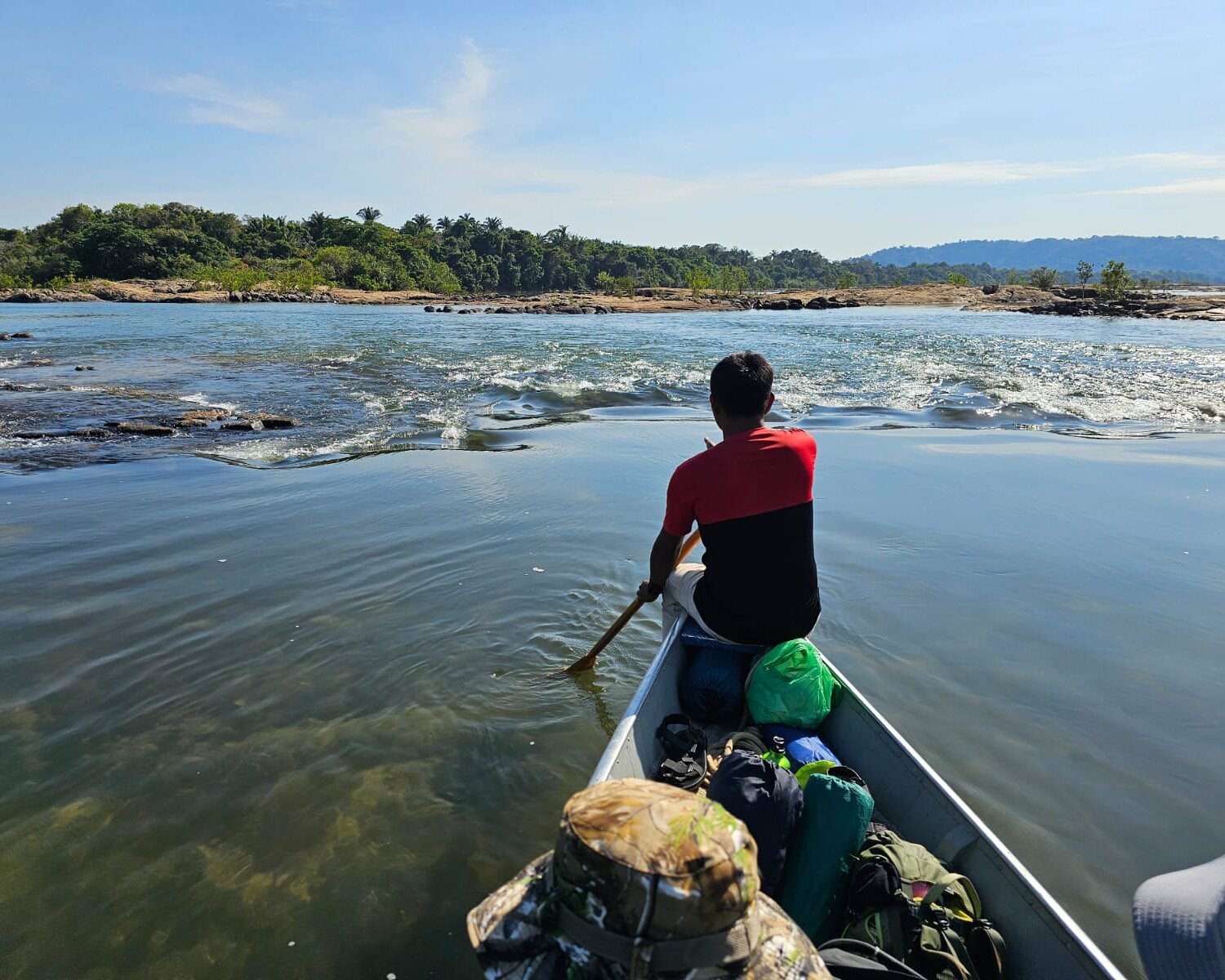
Day 17 – August 13
All good things must end! We followed Matt’s orders (more or less) and were almost in the boats by 8AM to start our journey back out of the Kayapo territory. We had a comprehensive goodbye with the Kayapo in the center of the village, and it was clear how sincere all the new friendships were with many Kayapo. A lot of pictures taken, and thanks given (Mexkumrej). Many in the group could not hold back the tears. We were all changed by this incredible 11 days with them.
Day 18 – August 14
We had time before our departure to Marabá for one more visit to the gift shop of the AFP. Again, we searched through Kayapo arts and crafts (jewelry and Brazil nuts) and came out with plenty of treasures. We all boarded our bus for Marabá and departed about 10:30 or so. Some of us (Juca, Christiney, and Natalia) would stay on the bus at Marabá (after 8 hours of travel) to continue another 12 hours to Belem. This ride was like the one that brought us there, but this time the Starlink Wi-Fi did not work. Also, when we were within that last 15 km on the approach to Marabá, that bit took at least 2 extra hours due to a traffic jam for the 25 th anniversary of the agricultural fair.
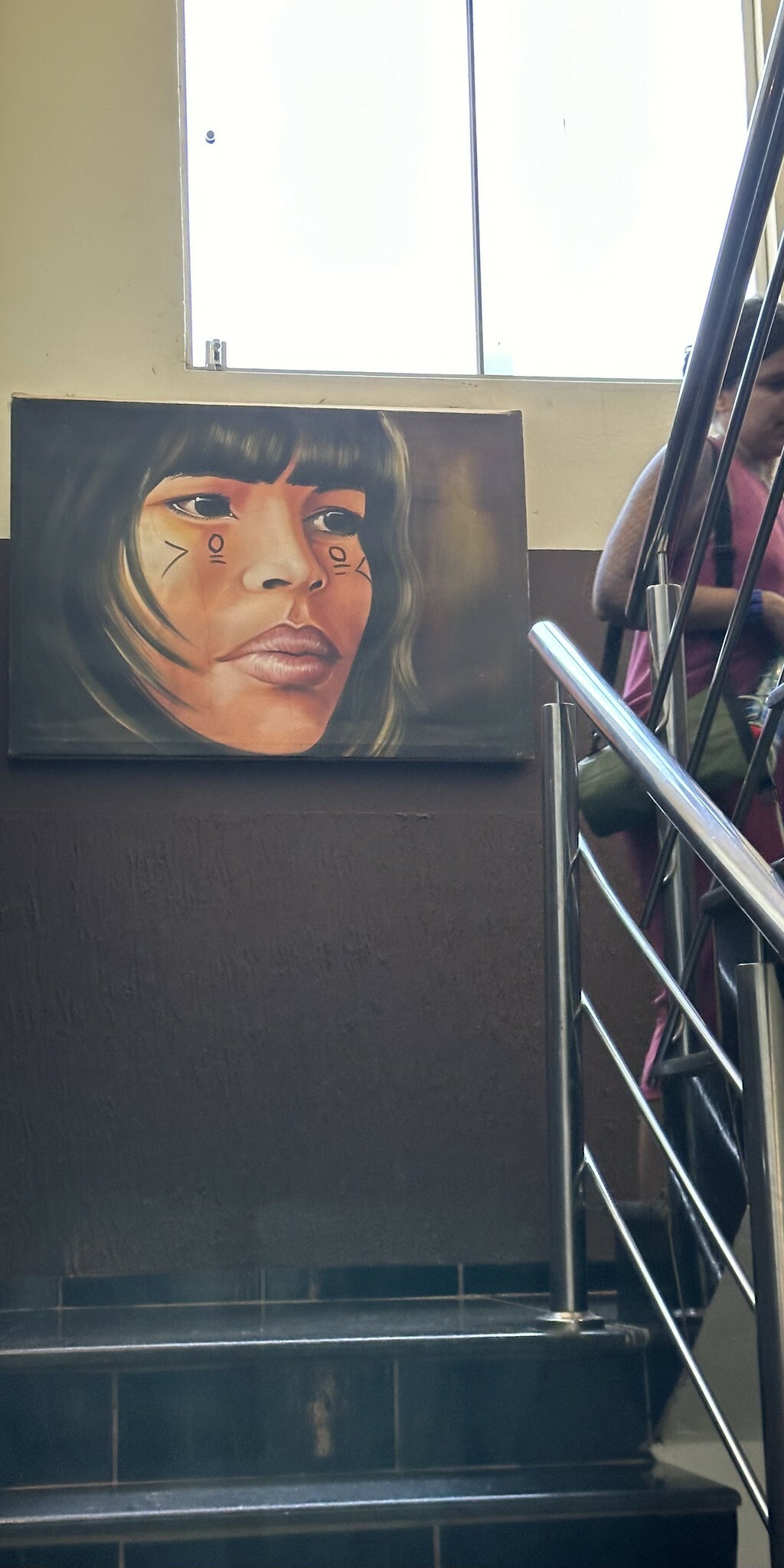
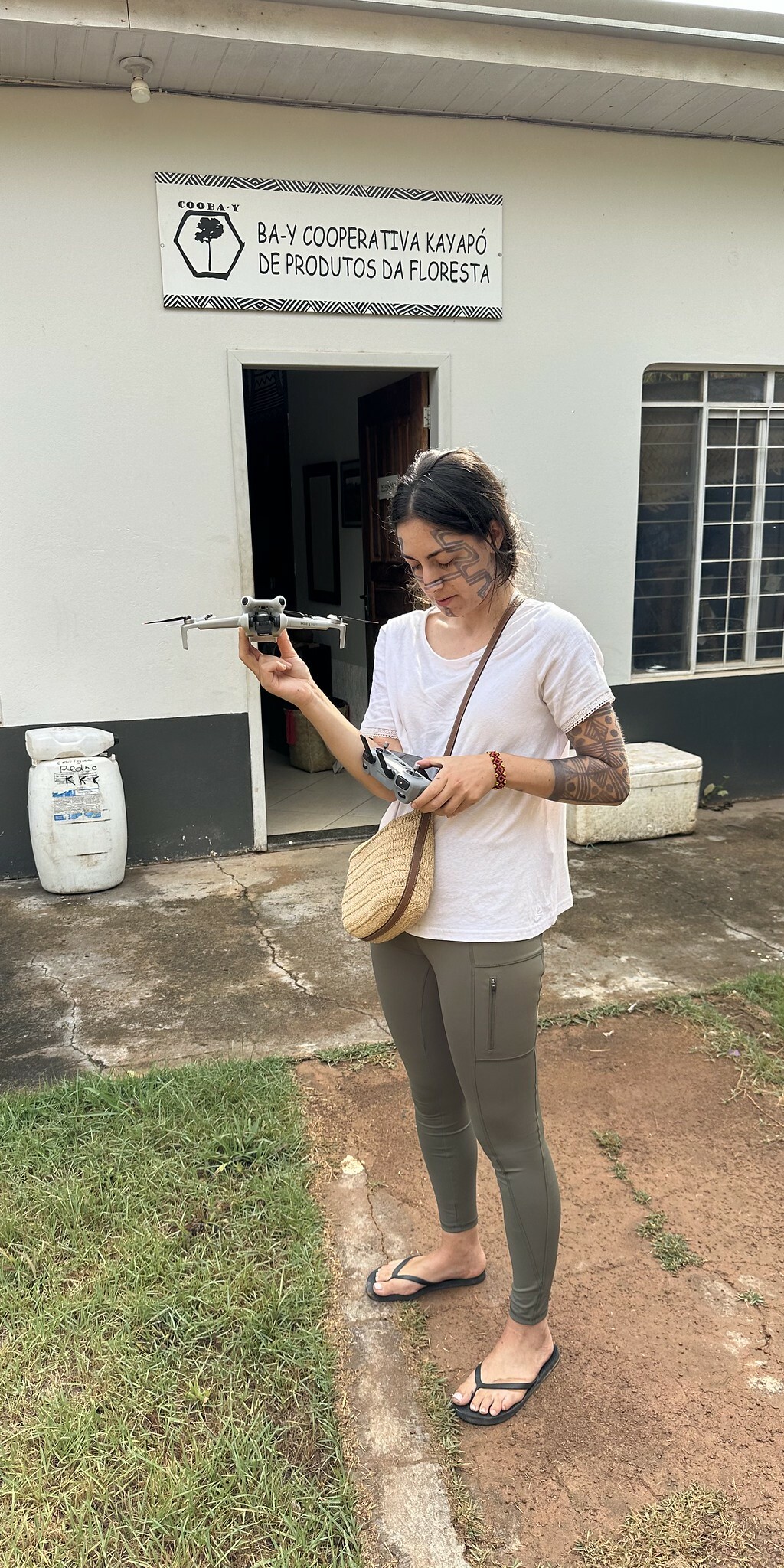
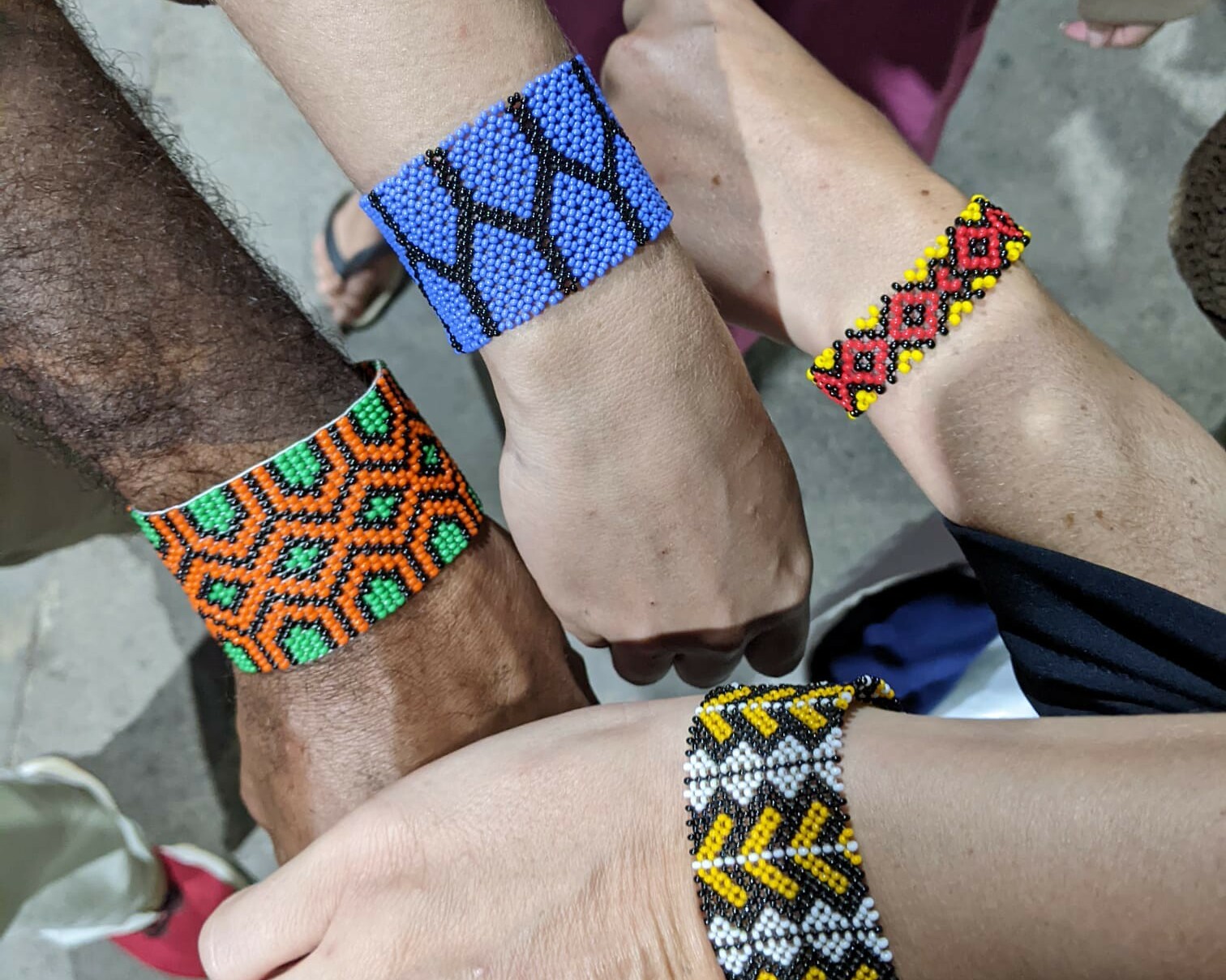
Day 19/20 – August 15/16
Вe said goodbye to Sophia and Felton who had flights in the afternoon. I hung out with Vero and explored Marabá. For our last evening Matt joined us for dinner at the hotel after returning from the airport and then we set our alarms for our taxis to the airport later that night. I flew from Marabá to Belo Horizonte at 2AM and Vero flew around 4AM back to the US. All went well! Thank you! Matthew!
Designing and running a “Field Course” or tour like this, in a location this remote in a wilderness setting is no easy task! I think all of us (participants) would agree the jam- packed, education-oriented itinerary was accomplished as planned. Even the extensive amounts of travel by plane, bus, and boat all happened without incidence and on time. Mainly, we have the ever-upbeat Matt to thank. Always smiling and even adding jokes along the way, he was always there to listen and adapt little changes upon request for those who asked for this or that. There was a remarkable assemblage of talented,cheerful, dedicated individuals. Kudos to the selection of this group of experienced biologists, sociologists, photographers, tourism experts, and more. They not only made the experience rich for each other but offered a lot for the Kayapo participants. – Scott Hecker
Biodiversity thrives in Kayapo's Indigenous Territory
Kayapo Project Conservation and Biodiversity Benefits
“We Kayapó indigenous people want to preserve our forest because we need everything the forest gives us. The forest needs to be protected to preserve our lives. The forest, which we call Bà, Bà Jabatoj, Bà akamat kà tyk, bà prek is our big forest, our dense, closed forest, our tall forest and this forest energizes our people. We want to preserve the forest for our livelihoods. The forest creates the rain we need. Without the forest there will be no more rain, we will catch fire.” Akjaboro Kayapó, Mrybari village
Kayapo territory is the last large block of forest and refuge for biodiversity surviving in the southeastern Amazon. Kayapo livelihood and culture depends on the intact forest and riverine ecosystems they fight to protect. Kayapo territory is large enough to support viable populations of preferred game species such as the white-lipped peccary and tapir that range over large areas and are sensitive to hunting. The size of Kayapo territory means that most is not hunted. Of conservation significance as well, Kayapo lands protect over two hundred kilometers (125 miles) of the Xingu river from degradation by deforestation, pollution and over-fishing. As many as 1,500 fish species, including many endemics, inhabit the Xingu River. Fish are the most important source of protein for local people.
Perhaps most critically important for conservation is that most Amazon tree species require very large landscapes to maintain viable populations. The great majority of Amazon tree species occur at low densities of less than one individual per ha locally; but have high absolute population sizes across landscapes. Furthermore, most depend on co-evolved animal vectors for pollination and seed dispersal across large inter individual distances –small areas do not contain enough individuals or viable animal vector populations for regeneration of many forest tree species over the long-term. The dauntingly intricate web of interdependence among Amazonian species requires large areas to function and persist.
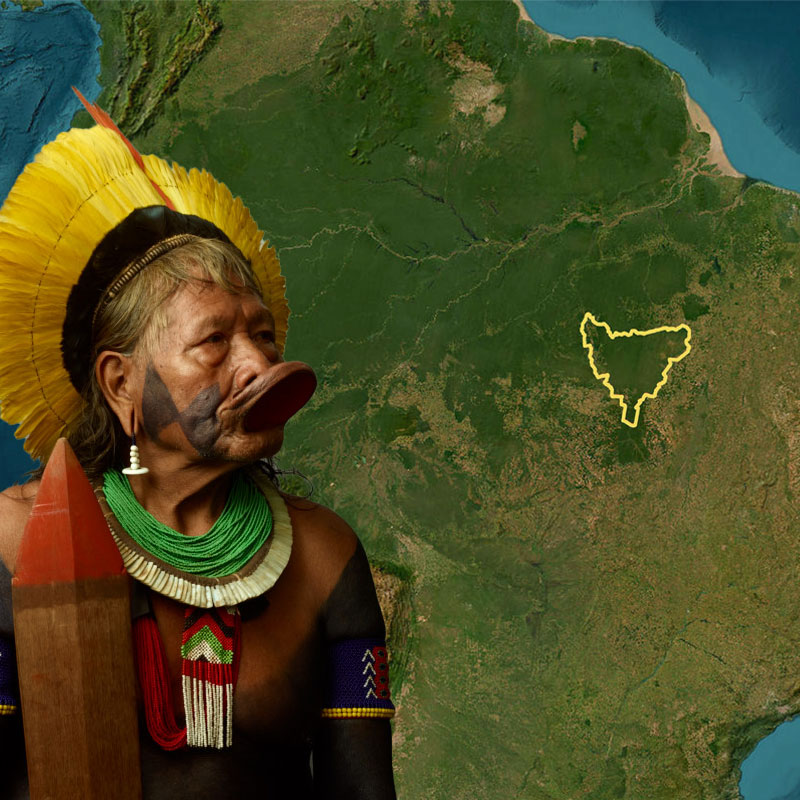
With 90,000km2, Kayapo’s protected territory is comparable to the size of countries like Ireland, South Korea, or the US State of West Virginia. Photo: Martin Schoeller
“The preservation of our forest is important so that we can continue to live in nature. The forest needs the indigenous people and we indigenous people need the forest, the rivers, the fish, our supermarket is the forest where we get our food, our fruits, our fish, our game so that we can feed our families. We indigenous people are fighting for the rights of nature and the rights of us indigenous people, but for that we need support”. Bepunu Kayapó, Mojkarakô village
A few of the high profile endangered or threatened species protected in Kayapo Lands are: giant otter, giant armadillo, utahicki saki monkey, white whiskered spider monkey, hyacinth macaw, harpy eagle, and several high value timber species such as mahogany and ipe.

Blue-throated Macaw
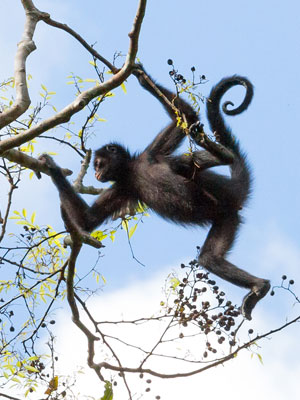
White-cheeked Spider Monkey
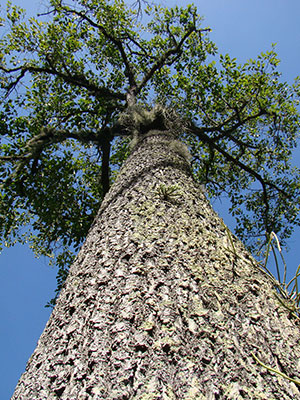
Brazil Nut
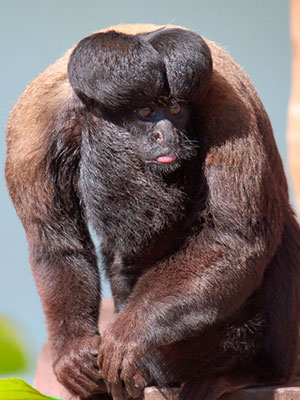
Utahicki Saki Monkey

Jaguar

Giant Otter
“In the past, we spoke the language of the animals and they spoke to us. Nowadays, we talk to them and they tell us what they feel by moving their head and their limbs with small movements. We ask and they tell us if they are suffering, if they are hungry, if they are sick. That is how animals talk to the Kayapó” – Panh Ô, Bau village
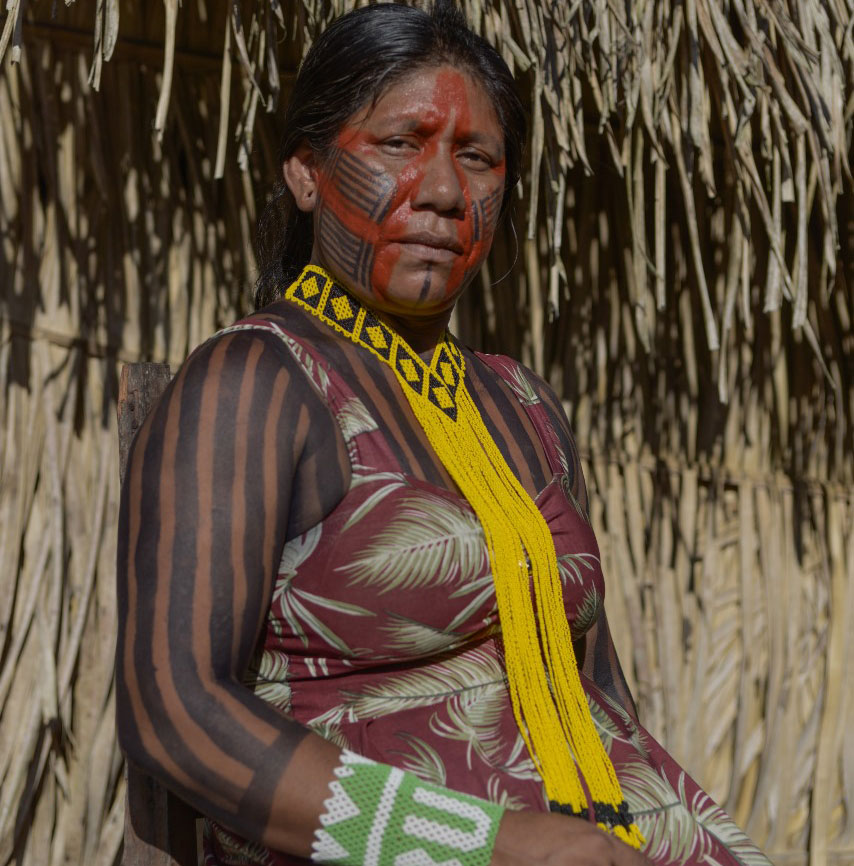
Panh Ô, Photo: Karina Iliescu/Global Witness
Kayapo Culture and Territorial Protection
Historically, the forest and rivers provided the warrior Kayapo with all their needs: food, shelter, medicine, weapons, beliefs, and ornaments for their rich social life. Today, 50 years post contact with outside society, the Kayapo have come to need manufactured goods and technology that they must buy in local frontier towns. Insertion of a monetary economy into Kayapo life changes things dramatically -and yet, Kayapo culture and attachment to the forest remains essential. Kayapo cosmology integrates plants and animals into their daily lives. For example, intricate body painting motifs using the genipap fruit typically represent different fish and animal species. Participants in elaborate community rituals embody different animals including tapirs, monkeys, anteaters, birds, and fish. What all this means is Kayapo culture is inextricably linked to the territory they fight to protect.
“We have been like this since before the arrival of white people, when we lived in the forest. The forest has always been here and we have always been in it. There were no farms here, no white people, nothing like that. It was just forest. The forest and the Kayapo are the same thing. If the forest is gone, the Kayapo are gone. We are Kayapó. This is our tradition. In our land we have Brazil nuts, yams, bananas, potatoes, fish and game meat. All good things still exist. There is good land for our gardens. There are ingá and palm hearts in the forest. No one is going to take that away from us. Let’s keep doing our thing. That’s why we have to fight together, that’s what we have to think about. We Mẽbêngôkre-Kayapó will defend and protect our land.” Rotkàre, Kedjerekrã village
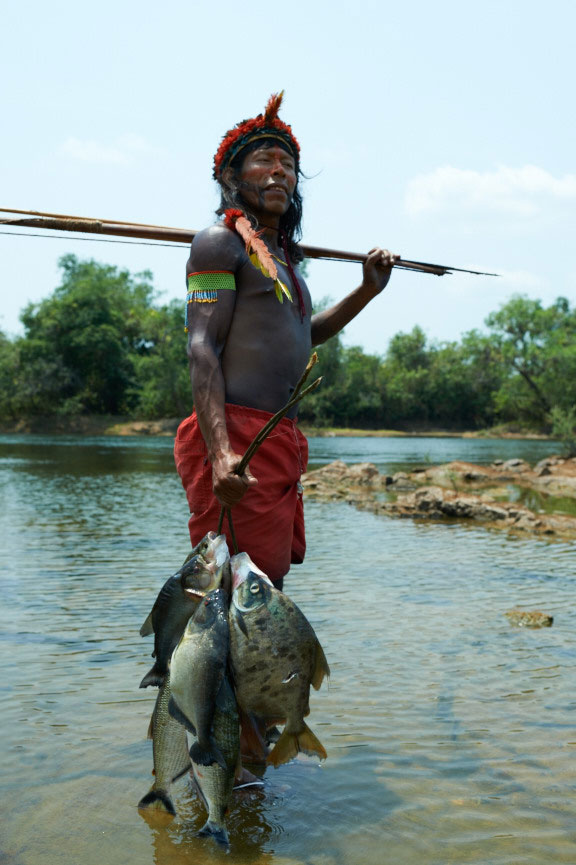
Photo: Martin Schoeller
Conservation and Indigenous Peoples: The Kayapo

Photo: Simone Giovine
“We want to tell the kubẽ (white men) to listen, to respect our rivers, our forests, our land for where there is goldmining it is worse for us because we can get sick. The relatives who live where there is gold mining are already sick. There is a lot of mercury contamination in fish. That’s why I don’t want goldmining in my village” – Oro Muturua, Mojkarakô village
There is widespread recognition of the importance of Indigenous peoples for protecting forests, biodiversity, and carbon sequestration.The Kayapo people of the Brazilian Amazon exemplify how Indigenous peoples, when empowered and supported, can serve as effective guardians of vast territories, protecting not only their cultures and livelihoods but also preserving high biodiversity ecosystems.
The Kayapo are one of the world’s most successful forest conservation stories. In the early 2000’s the Kayapo indigenous people living on over nine million hectares (23 million acres) of their ratified indigenous territory chose to ally with the conservation movement and gain capacity for continuing to protect their vast territory in the highly threatened and lawless southeastern Amazon. The mission of the alliance, known as the “Kayapo Project,” is to ensure Kayapo cultural, economic, political, and territorial autonomy. The Kayapo are unconquered and the alliance strives to keep it that way.

The Kakakuben guard post on the Pitxaxa river, western TI Menkragnoti
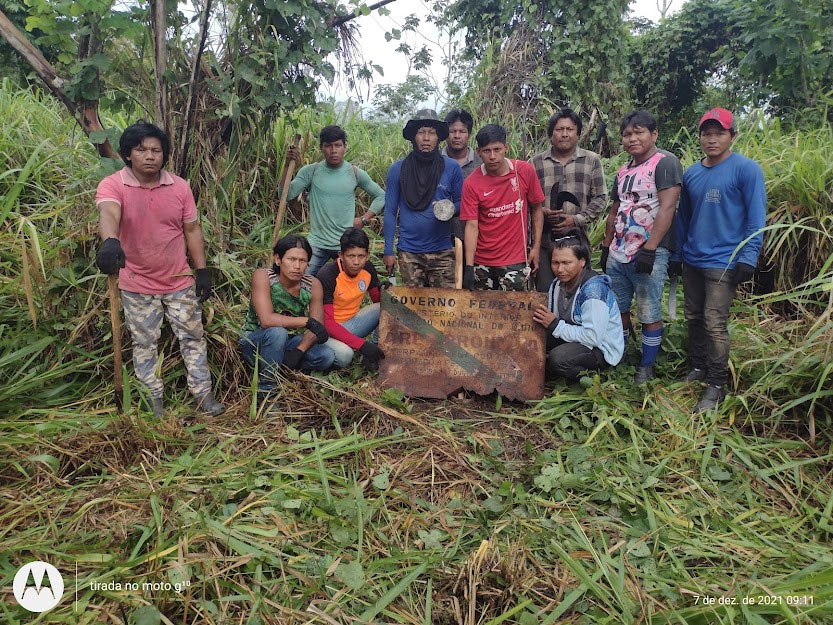
The Kayapo Project is led by three local Kayapo NGOs, the Protected Forest Association, Kabu Institute, and Raoni Institute , representing respectively the northeastern, northwestern, and southwestern Kayapo communities. Kayapo NGOs work in partnership with the International Conservation Fund of Canada (ICFC), Re:Wild, Environmental Defense Fund (EDF), Conservation International (CI) and others for investment to empower territorial control and sustainable management. Kayapo Project strategy relies on four main lines of action:
- Institutional Strengthening and Capacity Building of three Kayapo NGOs
- Territorial Monitoring and Control (Surveillance)
- Development of Equal Opportunity
- Sustainable Economic Enterprises
- Political Action and Legal Support
“We Kayapó preserve the forest that we live in. We need to feed ourselves, we need to hunt, fish and that’s how we live. We cannot destroy our forest” Kajkware Kayapó, Mojkarakô village


